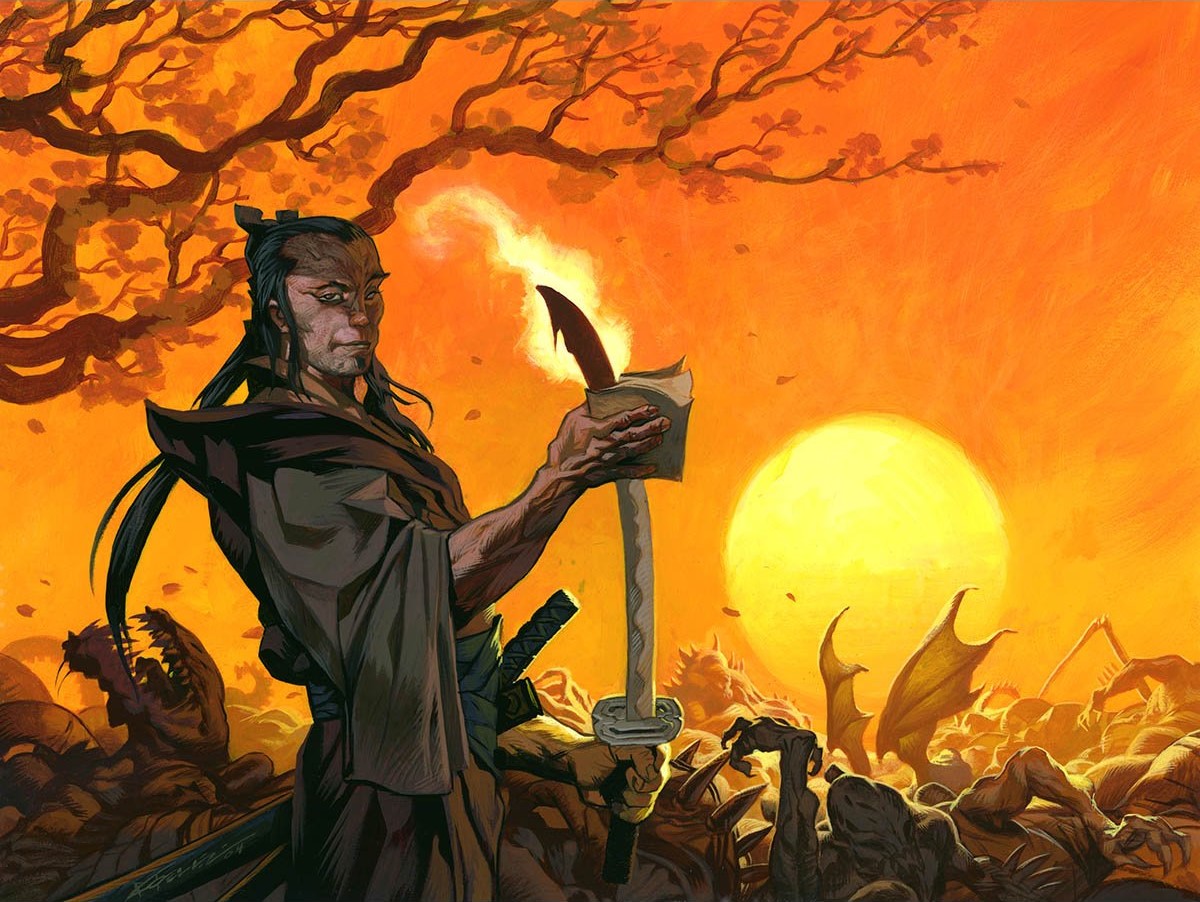
Introduction
Preface
Growing up, I played trading card games. My dad would take me to a games store nearby, and I would play Pokemon, Magic: The Gathering, and Yu-gi-oh. Magic: The Gathering was always the most complex and mature of these. It was also the game I stuck with the longest. It had some of the best lore, art, and worldbuilding I've ever seen in games, movies, or any media.
In 2004 and 2005, one of the worlds used as a basis for several MTG card sets was Kamigawa. This plane was inspired by Japanese culture and featured honorable samurai, kami spirits, oni demons, and a whole host of interesting peoples and monsters. One of my favorite decks to play was a samurai warrior deck featuring Takeno, Samurai General and Godo, Bandit Warlord.
Later in 2022, Wizards of the Coast returned to the plane of Kamigawa and released Kamigawa: Neon Dynasty. This set fast forwarded 1200 years in the setting. Technology had advanced to the point of cyborgs, hoverbikes, and laser swords. Magic and science mixed seemlessly or sometimes not so seemlessly together to make amazing new creations represented by double card types, powerful sagas, and new planeswalkers.
This new release reminded me of the Kamigawa setting and got me excited. Just last year, I had been a dungeon master for a group of friends to play D&D. Combining the two felt natural to me. Kamigawa had a host of races, monsters, and locations that could convert well into D&D. Japanese culture has an expansive history and culture that supports the class, items, and magic systems.
So I set out to convert Kamigawa over into a full-scale setting for D&D. Though I intended it to be for just me and my friends, GM Binder has made it possible to easily publish this in a presentable way to the public. I'm very happy to present the Handbook to Kamigawa. Please enjoy!
In the Spirit of Fun
As always, D&D is a game and is about having fun. Some people like to play one way and others like to play another. There isn't a right way to play the game. There isn't a right way to make your character or play your class. Be as optimal or suboptimal as you want. Roleplay as much or as little as you want. Just make sure that everyone at the table is comfortable and having fun.
That being said, sometimes people can argue about what's fair or unfair. This book is a set of rules meant to be played as a whole. I have tried to balance it and make it fair, as best I can, within the world of Kamigawa. What's written here is what I recommend, and I hope you'll play it altogether.
However, I'm not here to force anything upon anyone. You can take all of it, some of it, or none of it if you wish. What you should take though is what you think is fun. Always remember, it's all optional.
Contents
Credits
Written By - KingYamez
Edited By - Cheibrodos
Lore - MTG Wiki, MTG Articles
Inspirations - Plane Shift: Kamigawa by HyperionSol, Better Genasi by u/Veritoss43, Ultimate 5th edition Japanese Weapon list by u/JudgeThunder, Firearms of the Realms by Yonael
Art - Go to page 51.
Resources - GM Binder Style Guide by u/Rhaenon, Advanced GM Binder Styling Guide by u/Raspilicious, Watercolor Stains by u/flamableconcrete
Fan Content Notice
Handbook to Kamigawa is unofficial Fan Content permitted under the Fan Content Policy. Not approved/endorsed by Wizards. Portions of the materials used are property of Wizards of the Coast. ©Wizards of the Coast LLC.
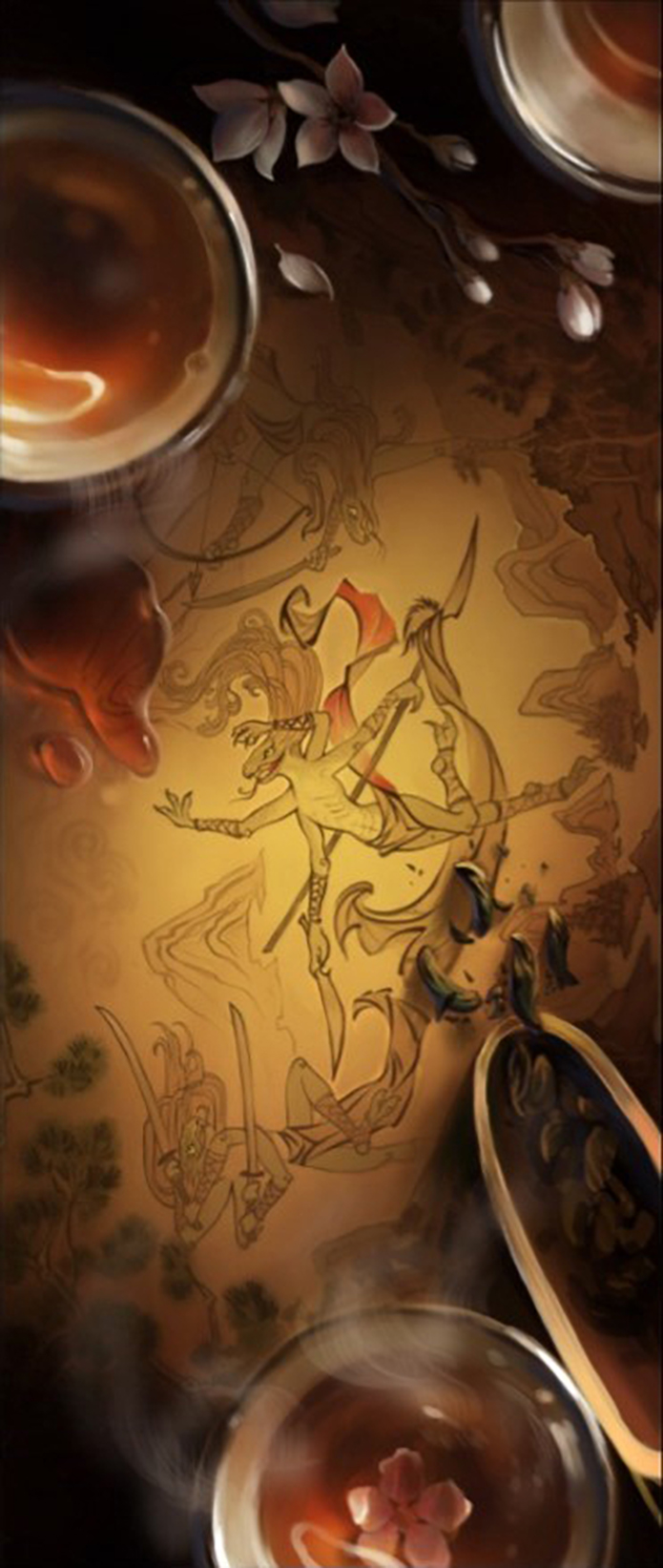

Chapter 1: Races
Your journey into Kamigawa begins with seven playable races to choose from. Within the setting, there is a host of different races living within five different biomes. From these, four already existing have been chosen. Three more have been created and added to this list to expand player options and fill some of the missing roles.
There are also five non-playable races who inhabit the world and that the players' characters would be aware of. Their information is located in Appendix A. These other races are described in a similar manner to the playable races, but no names or traits are given. These may serve as inspiration for the Dungeon Master to use for NPCs, or perhaps you can create your own race.
The Five Biomes
Most of the races have an affinity for one of the five biomes of Kamigawa. These five biomes are the Towabara plains, Kamitaki lake, Jukai forest, Sokenzan mountains, and Takenuma swamp. When your race is within their preferred biome, they feel most at home. Dungeon Masters are encouraged to confer indirect or even unseen small benefits based on this. Players are encouraged to think about where they are in the setting and use the environment to their advantage.
The biomes are directly tied to Magic: The Gathering's color system. In Magic: The Gathering, mana is a renewable magic resource that primarily comes from the land. Mana is divided into six types, corresponding to the five colors and the sixth being colorless. The five biomes represent these five mana sources.
The Towabara plains yield white mana. It embodies the principles of morality and order. It is symbolized by the sun. White seeks peace through structure.
The Kamitaki lake yields blue mana. It embodies the concepts of logic and technology. It is symbolized by a drop of water. Blue seeks perfection through knowledge.
The Jukai forest yields green mana. It embodies the principles of instinct and interdependence. It is symbolized by a tree. Green seeks growth through acceptance, harmony, and wisdom.
The Sokenzan mountains yield red mana. It embodies the principles of impulse and chaos. It is symbolized by a fireball. Red seeks freedom through action.
The Takenuma swamp yields black mana. It embodies the principles of parasitism and amorality. IT is smybolized by a skull. Black seeks power through ruthlessness or opportunity.
Different Magic Systems
Magic: The Gathering repeats the five colors of mana over and over again in all of their settings. It is an integral part of the game and influences what mechanics the different colored cards can use. D&D differs from this. Not only can all schools of magic be used by any alignment, but some players choose to turn stereotypes inside out. The virtuous necromancer is a classic example.
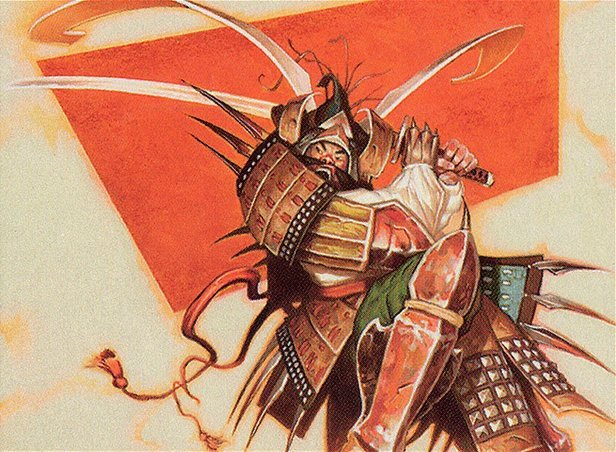

Human
"IT IS IMPORTANT TO DRAW WISDOM FROM
many different places. If you take it from one
place, it becomes rigid and stale. Understanding
others, the other elements, and the other nations
will help you become whole."
Humans are the most populous and widespread of
the races that inhabit Kamigawa. As in many D&D
settings, they are ambitious and out to prove themselves.
To do this, they adapt, innovate, and seek out adventure.
Rulers of Kamigawa
Humans are the self-proclaimed rulers of Kamigawa. The Emperor projects power from the Eiganjo castle and its surrounding city in the Towabara plains. Imperial orders are sent out with samurai patrols, including the famous mothriders, to collect taxes, secure trade routes, and protect the rural settlements of the plains. As Towabara is set in the middle of Kamigawa, human pioneers venture into the other four surrounding biomes with the Emperor's blessing. The Emperor and humans claim domain over all five biomes, though their reach often exceeds their grasp outside of the plains.
Variety in All Things
Humans are the most adaptable and ambitious people among the races of Kamigawa. Despite a majority in Towabara, they have managed to create settlements in the five different biomes and have equally varying tastes, morals, and customs. From the honor of the Yamazaki samurai of Eiganjo to the secrecy of the Koga ninjas somewhere in Takenuma swamp. From the intellect of the fledgling wizards at Minamo Academy to the dedication of the Jukai monks at Okina temple. Humans have built villages on every foundation, shrines to worship the infinite kami, and an eternal empire to rule it all.
Lasting Institutions
Where a single soratami or kitsune might take on the responsibility of guarding a special location or a powerful secret, humans found sacred orders and institutions for such purposes. While moonfolk archmages and kitsune elders pass on the ancient traditions to each new generation, human temples, governments, libraries, and codes of law fix their traditions in the bedrock of history. Humans dream of immortality, but (except for those few who seek undeath or divine ascension to escape death’s clutches) they achieve it by ensuring that they will be remembered when they are gone.
Human Names
Humans in Kamigawa have three names. First is their family name. This is the name most people give to be referred to. Second is their personal name, often different for males and females. This is a name given to those a person is familiar with (or sometimes given to hide a disgraced family and/or clan name). Third and last is their clan name.
Multi-Cultural Society
Although many humans can be discriminatory, in general their societies are tolerant and can even be inclusive. Human lands permit large numbers of nonhumans to live among them compared to the proportion of humans who live in nonhuman lands. This is especially true in Kamigawa. The city surrounding Eiganjo is the major trade center on the continent. Every other direction is blocked or dangerous for one reason or another. Besides the ogres, everyone is welcome in the human city, though some may be treated better than others.
Family: Hayashi, Ito, Kimura, Kobayashi, Matsumoto, Nakajima, Nakamura, Sasaki, Sato, Shimizu, Suzuki, Tanaka, Watanabe, Yamamoto, Yamazaki, and Yoshida
Male: Asahi, Haru, Haruto, Itsuki, Kaito, Koma, Minato, Ren, Riku, Soma, Sota, Yamato, Yuma, Yuito, Yusei, and Yuto
Female: Akari, Emi, Hana, Himari, Hina, Ichika, Iroha, Koharu, Mei, Mio, Riko, Sakura, Tsumugi, Yui, and Yuna
Clan: Abe, Aya, Fujiwara, Hashiji, Imube, Kusakabe, Minamoto, Mononobe, Nakatomi, Ochi, Otomo, Ozutsuki, Soga, Sugawara, Tachibana, Taira, and Takahashi
Human Traits
With variety comes versatility. It's hard to generalize about humans, but most share the following traits.
Ability Score Increase. Your ability scores each increase by 1. Optional variant allowed (-4 ASI's, +1 Skill & Feat).
Age. Humans reach adulthood in their late teens and live less than a century.
Alignment. Humans tend toward no particular alignment. The best and worst are found among them.
Size. Humans vary widely in height and build, from barely 5ft to well over 6ft tall. Regarless of your position in that range, your size is Medium.
Speed. Your base walking speed is 30ft.
Languages. You can speak, read, and write Common and one extra language of your choice. Humans typically learn the languages of other peoples they deal with, including obscure dialects.
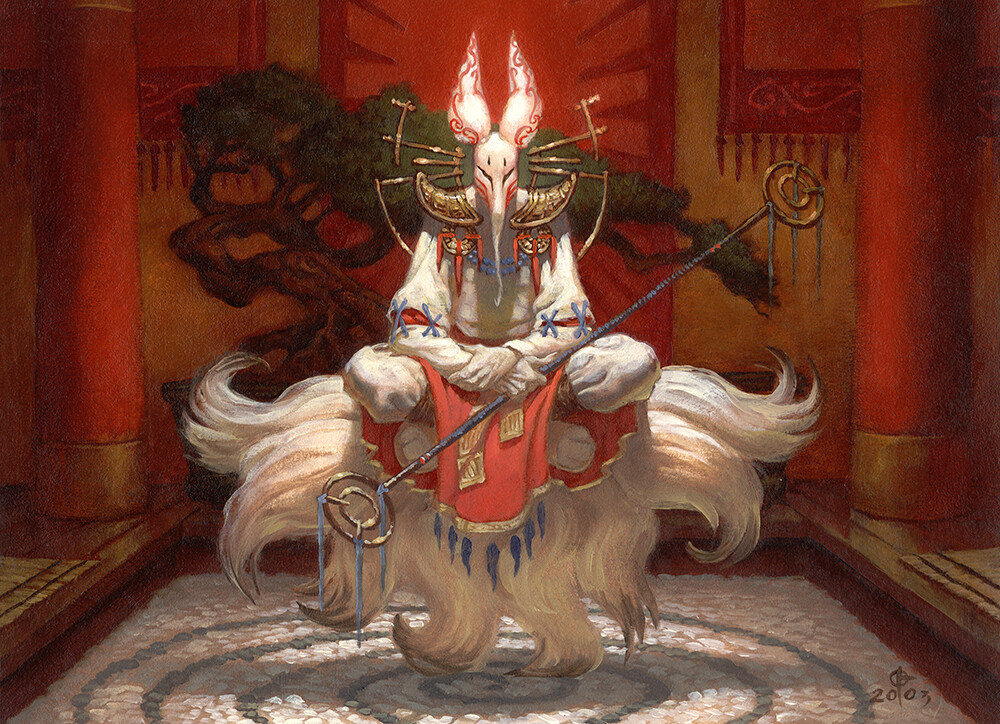
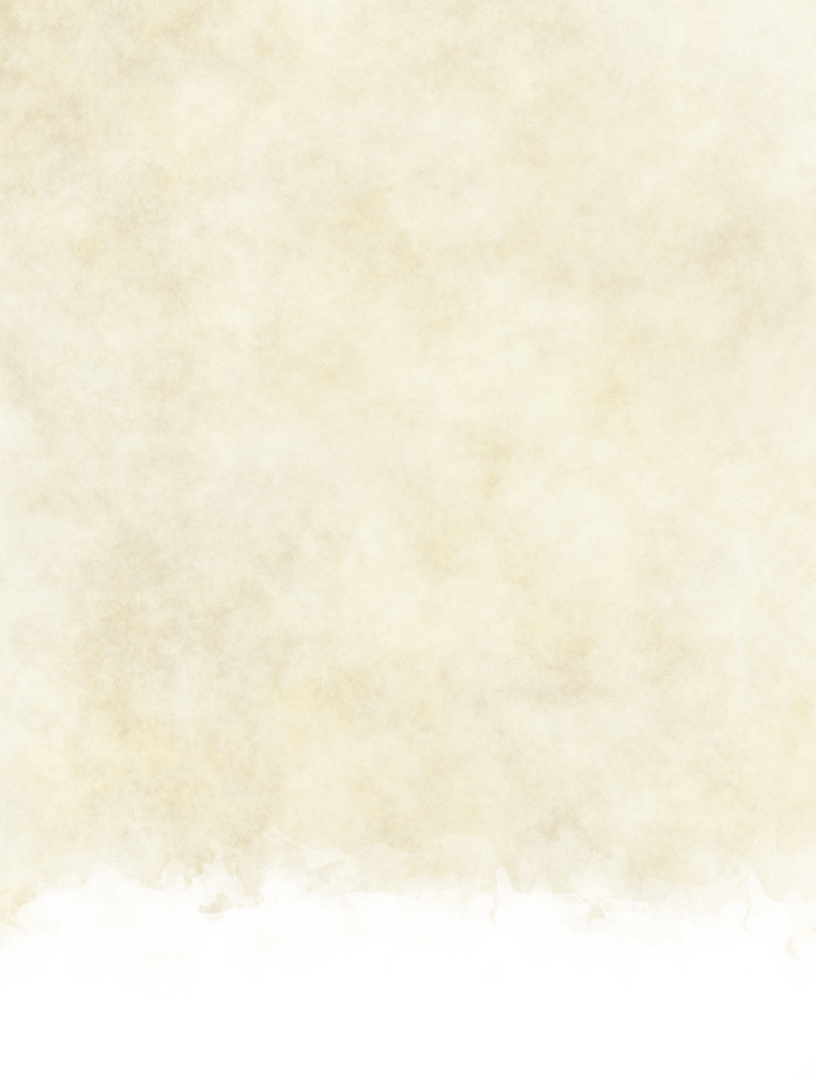
Kitsune
"VIRTURE IS AN INNER LIGHT THAT CAN PREVAIL IN EVERY
soul."
The kitsune are fox-like humanoids that live in the Jukai Forest. They are beings of great wisdom and skill, having accumulated experience over centuries of living. They have a close relationship to humans and are often sought out for advice. They also have a deep connection to the kami.
Enduring Spiritualists
Being so long-lived, the kitsune strive for wisdom and balance above all things. They tend to look long-term and seek to develop themselves. They train their bodies, spirits, and minds to endure the long journey ahead that is their life. It does not behoove them to take hasty actions that may backfire or harm those around them without good reason. Some of their brethern may be their closest friends for the next century.
Within the community, it is easy to see who is the wise elder and who is the learning pup. As a kitsune grows wiser and older, they will grow more tails. At the peak of enlightenment are those kitsune with nine tails, while those in their first century may only have one or two.
Many kitsune are drawn to the kami of Kamigawa. The kami are spirits inhabiting and permeating throughout the world. One cannot live as long as the kitsune without interacting with the kami. This leads them to be some of the most knowledgable about the kami and the spirit world. Many kitsune become clerics and almost all of the major shrines in Kamigawa have kitsune membership.
Peerless Swordsman
The kitsune do not only meditate and reflect when developing themselves. They also train in swordsmanship and tactics to defend their lands, protect their shrines, and bring balance
through action if necessary. The kitsune are quick and perceptive. Their techniques have been trained for decades. There is no other race that can match this level of perfection when it comes to the blade, the kitsune's favorite weapon, and few can match their martial arts.
Many kitsune reknown for their skill with the sword become samurai leaders or run martial art schools. The emperor of Kamigawa employs famous kitsune to train their human samurai or as tactical and spiritual advisors. Opposite to many of the other races that are discriminated against, the kitsune enjoy the respect of humans and almost all the other races of Kamigawa.
Close Communities
The kitsune are most often born and raised in one of the Jukai forest villages they inhabit. These are private and sometimes hidden settlements, guarding secret traditions and techniques. Even when born outside of Jukai, parents often send their young to live with relatives and learn their ways from a very young age. The kitsune do not see human settlements as a proper place to raise their young.
Kitsune also have arranged marriages between clans and villages. Once again, longevity gives them a different perspective. It's important for the marriage to last their lifetime. Often, this means they find "worthy" mates that they later fall in love with. This process has been ongoing for centuries, eventually creating a warrior and cleric class.
Many kitsune make and keep friends for life from their home villages. Kitsune friends will outlive friends of other races and are often perceived as more reliable and understanding. A kitsune who turns their back on their clan and community dishonors themself almost to the point of exile. They will have to achieve a feat for the clan to reclaim that honor.
Kitsune Names
The kitsune have two names. First is their common name, typically based on a description of one part of their body. Second is their clan name, often unspoken unless its needed to distinguish between two kitsune.
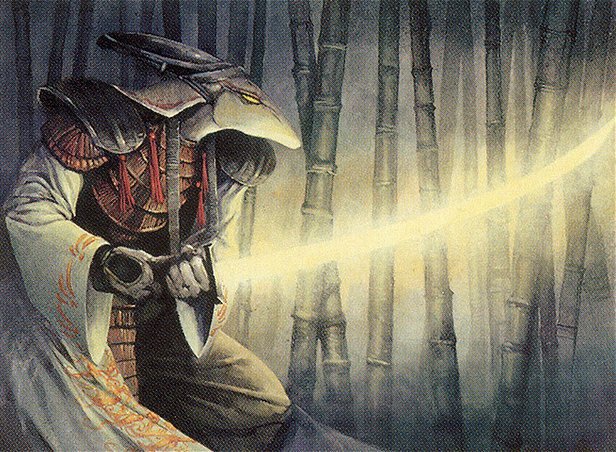

Common: Autumn-Tail, Golden-Tail, Light-Paws, Onyx-Eye, Opal-Eye, Pearl-Ear, Rune-Tail, Sharp-Ear, Silk-Eyes, Silver-Foot, Swift-Arm, Tender-Hand, and Wise-Muzzle
Clans: Choshi, Chosokabe, Fujiki, Hakura, Hata, Hirata, Kada, Kawachi, Kawakatsu, Koremune, Matsumuro, Matsuo, Matsushita, Mikami, Minami, Mokusei, Nishioji, Obata, Okura, Onishi, Otomo, Seo, Takamuko, and Togi
Kitsune Traits
Your kitsune character has a variety of natural abilities, the result of centuries of kitsune refinement.
Ability Score Increase. Your Dexterity and Wisdom scores increase by 1.
Age. Although kitsune reach physical maturity at about the same age as humans, the kitsune understanding of adulthood goes beyond physical age to encompass worldly experience, as manifested by the number of tails a kitsune has. A kitsune claims adulthood when they grow their second tail, typically after achieving a certain level of skill or accomplishing a deed. This age varies widely, but few do not attain this in their first century. Kitsune may live up to 900 years old, though few live past 500.
Alignment. Kitsune value wisdom and balance as well as their communities. They often follow a way of life within the temple or military traditions. They are more often lawful and
good than not, though many remain independent of government institutions.
Size. Kitsune are slightly shorter and slimmer than humans. They typically range from 5 to 5.5ft tall and weigh 120 to 150lbs. Males and females are relatively the same size. Your size is Medium.
Speed. Your base walking speed is 30ft.
Darkvision. Accustomed to the twilit Jukai forest and night sky, you have superior vision in the dark and dim conditions. You can see dim light within 60ft of you as if it were bright light, and in darkness as if it were dim light. You can't discern color in darkness, only shades of gray.
Keen Senses. You have proficiency in the Perception skill.
Meditative Healing. Your character knows a secret kitsune technique to heal faster. During a short rest, your character may decide to enter a deep meditation state and focus on healing. Double the result of hit dice (not the Con mod) used to heal while in this state. You may only decide to use up to half of your total number of hit dice rounded down during this meditation. You may not spend hit dice as normal after exiting the meditation within the same short rest. This ability may be used once per long rest.
Languages. You can speak, read, and write Common and Kitsune.
Subraces. Two subraces of kitsune exist as a result of their class culture, the Byakko and Shinryu. The Byakko make up the martial clans of the kitsune. The Shinryu make up the clerical clans of the kitsune.
Byakko
As a byakko kitsune, you have trained for greater dexterity and quickness. You've conditioned your body and perfected your technique. An enemy would do well to fear you in a fair fight on the battlefield.
Ability Score Increase. Your Dexterity score increases by 1.
Fox Weapon Training. You have proficiency with the katana, sai, hankyu, and yumi.
Fleet of Foot. Your base walking speed increases to 35ft.
Claws. You've been taught how to use your claws in combat. They count as natural melee weapons with the finesse property and with which you are proficient. They deal 1d4 slashing damage.
Shinryu
As a shinryu kitsune, you have trained for greater wisdom and spirit. You've spent your childhood learning, meditating, and reflecting on your soul. You've developed your connection to the great kami and magics of the world.
Ability Score Increase. Your Wisdom score increases by 1.
Fox Weapon Training. You have proficiency with the katana, sai, hankyu, and yumi.
Cantrip. You know one cantrip of your choice from the cleric spell list. Wisdom is your spellcasting ability for it.
Extra Language. You can speak, read, and write one extra language of your choice.
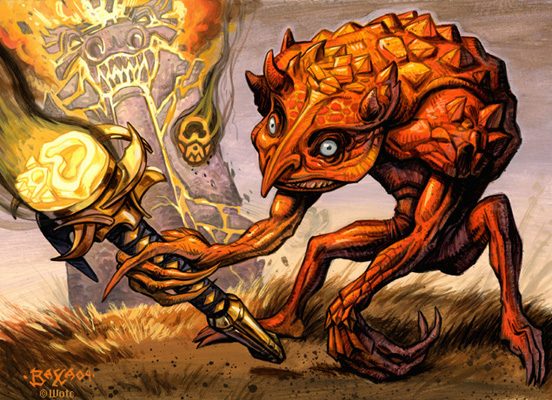
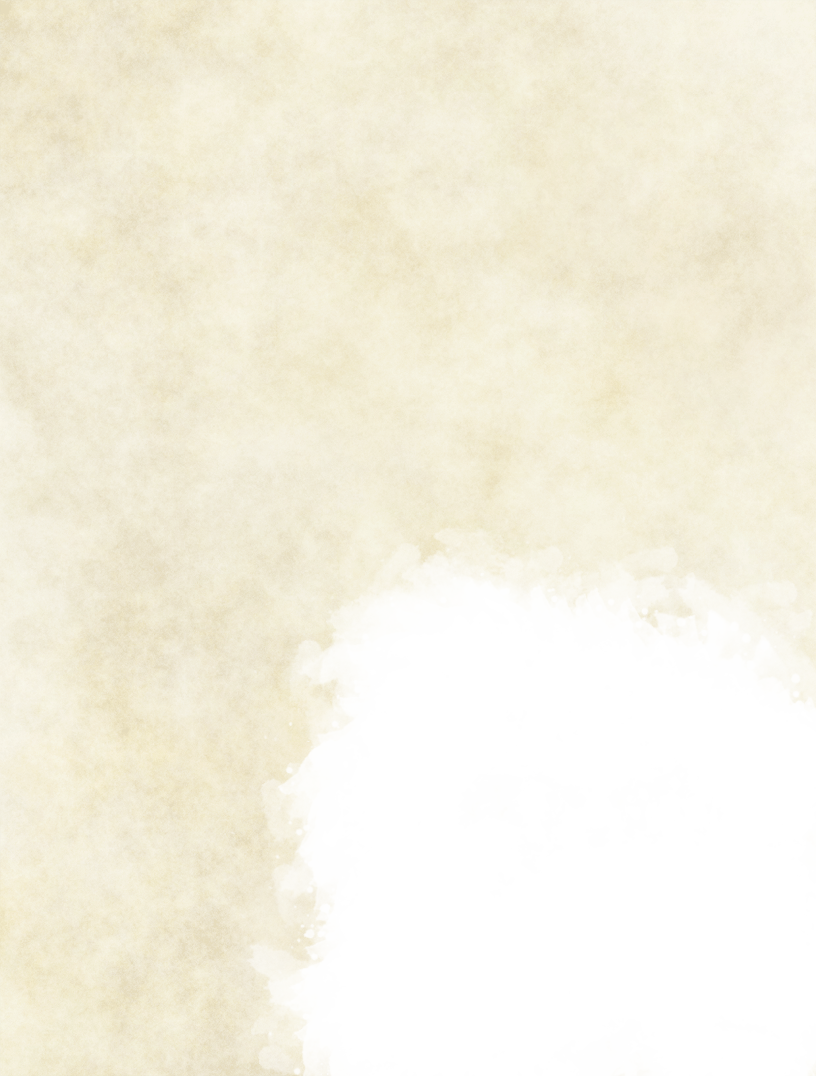
Akki
"DEEP INSIDE THE SOKENZAN MOUNTAINS, A BAND OF AKKI
discovered a cache of ancient items of power. Their ensuing spree of destruction became known as ‘The Three Days of Fun.'"
The akki are uncivilized children twisted into goblin-like land kappas. They are small and short-lived, but tough. Though they may get themselves killed in their pursuits, they show an unexpected curiosity and intelligence.
Dangerous Curiosity
Akki are full of curiosity, often to their detriment. They are always looking to get into trouble and like to prank others. Most that live in non-akki settlements have learned not to harm others, but still do not respect their property or space. Within human settlements, citizens are often wary of akki, checking their pockets and watching merchandise when one strolls by. However, the akki intellect shouldn't be underestimated. They like to tinker and build contraptions. They innovate new tools and weapons. Despite what stereotypes go around, their most annoying quality is actually one of their best.
Fiery Obsession
The akki's obsession with fire is unlimited and child-like. Fire is the engine, the art, and the soul of the world to them. Those akki who can manipulate fire are lauded with praise. Akki religion and their followers all center on the reverence and control of fire magic. Rituals to the great lava spirits deep under the Sokenzan mountains occur frequently.
Akki are well-known in non-akki settlements for their obsession with fire and proclivity for using it
unnecessarily. They are often supervised or
outright banned from working in armories
with explosives, while also being sought
out to do weapons research far away from
residential areas. Citizens in the city
surrounding Eiganjo groan when they hear
an akki has moved in next door for fear
their homes may end up burnt to the ground.
Chaotic Rebels
Akki come from the Sokenzan
mountains. They have historically
been lawless and uncivilized, forming
small territorial groups. These groups
are often short-lived and never truly
form into permanent tribes or
communities. The only organized
social structures (and the word
"organized" is hotly debated) are cults
that form around powerful fire shamans.
These religious leaders command the
chaotic and disparate groups
naturally rising and falling
throughout the mountain range. When a truly powerful shaman brings together enough akki, they may turn into a warlord.
There are some akki who join the ronins of Sokenzan. This rebellion of sorts is led by Godo, the Bandit Warlord. The ronin, dishonorable and wild samurai, teach the samurai way. Some akki take on the traditions, techniques, weapons, and even the armor of their teachers. Some simply pledge their loyaty for free meals and do as Godo says.
Names
The akki tend to go by only one name, often a one or two-syllable word repeated twice. All names are considered neutral of gender, as there is little difference between the two.
Common: Ben-Ben, Den-Den, Goro-Goro, Ik-Uk, Ishi-Ishi, Kiki-Jiki, Ku-Ku, Oku-Doku, Tok-Tok, Yoku-Yoku, and Zo-Zu
Akki Traits
Your akki has a variety of natural abilities, the result of the tough caves they originate from in the Sokenzan mountains.
Ability Score Increases. Your Constitution score increases by 2. Your Dexterity and Intelligence scores increase by 1.
Age. Akki reach maturity around 8 years old and can live up to 60 years old, though its very very rare to find one past the age of 40. Most die early in their dangerous pursuits.
Alignment. The akki of the Sokenzan mountains are lawless and uncivilized, often only bending to the will of powerful leaders. They tend towards evil and chaotic alignments. Akki within human settlements though tend to be more mellow, learning the hard way to be neutral.
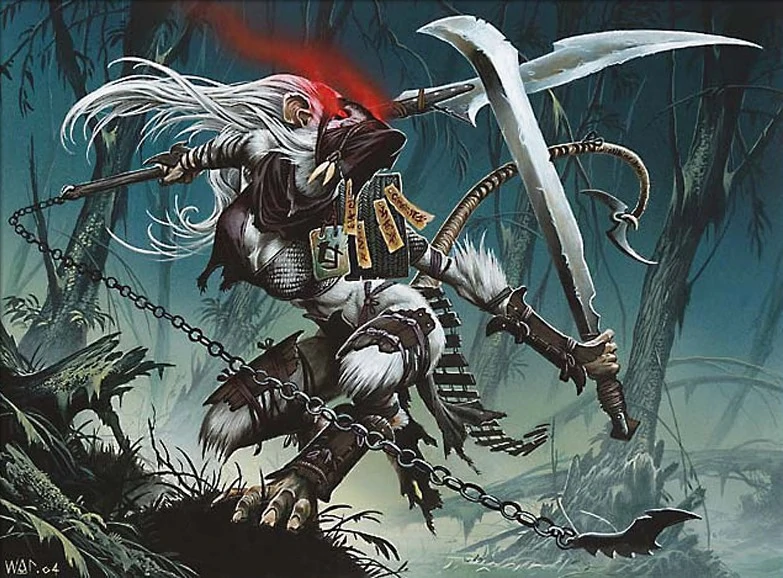


Size. Akki range from 3 to 3.5ft in height. They weigh 40 to 80lbs, with much of the extra weight in their shells. Their limbs are usually slim and spindly, with disproportionately long hands and feet. Your size is Small.
Speed. Your base walking speed is 25ft.
Darkvision. Accustomed to the shadowy caves of the Sokenzan mountains, you have superior vision in the dark and dim conditions. You can see dim light within 60ft of you as if it were bright light, and in darkness as if it were dim light. You can't discern color in darkness, only shades of gray.
Nezumi
"THESE NEZUMI, THEY DISGUST ME. THE THINGS THEY WILL
do for money no other thinking creature would consider. This, of course, makes them useful beyond words."
The Nezumi are rat-like humanoids with a penchant for the unseemly. They're known as thiefs, assassins, and urchins. They originate from the Takenuma swamp, a place other races already have a distaste for. It's tough for a rat out there.
Swamp Creatures
The Nezumi live in villages and outposts hidden among the morass. Their homes tenuously borders with those of the violent oni-worshipping ogres. While the ogres and nezumi do not get along, that does not mean they are so different. Most nezumi are raised to become mercenaries, using violence as the main source of income for the village. Those that can't cut it wind up as fishermen, foragers, or craftsmen
Tough Shell. Your back is a hardened shell. As a reaction, you may gain resistance to bludgeoning, piercing, and slashing from nonmagical attacks. You may do this a number of times equal to your proficiency bonus per day, before refreshing this ability by finishing a long rest.
Nimble Escape. You can take the Disengage or Hide action as a bonus action on each of your turns.
Climbing. Your natural form lends itself well to traveling the crags of Sokenzan. You have a climbing speed of 25ft.
Languages. You can speak, read, and write Common and Goblin.
to support the warrior class. Regardless, every nezumi moves with a speed and agility that other races would have a hard time matching.
Some nezumi have migrated outside of the swamp to the larger settlements, especially the city surrounding Eiganjo. A small community of them make an honest but meager living on the periphery of human society.
Cunning Mercenaries
The Nezumi often find lives for themselves as thieves, ninja, or samurai, working for the highest bidder that will tolerate their underhanded tactics. Nezumi are known to be agile and clever, making up for what they lack in outright strength. They use misdirection and chemical attacks to turn the odds in their favor. Some are even known to summon and control swarms of insects or rats to distract opponents. No tactic is too low to get the job done. An enemy who is aware of the Nezumi is never too cautious, while an ignorant fool dies in stupefication. Some Nezumi are so good at what they do, the elites of society keep one on retainer to take care of tasks requiring stealth, infiltration, or assassination.
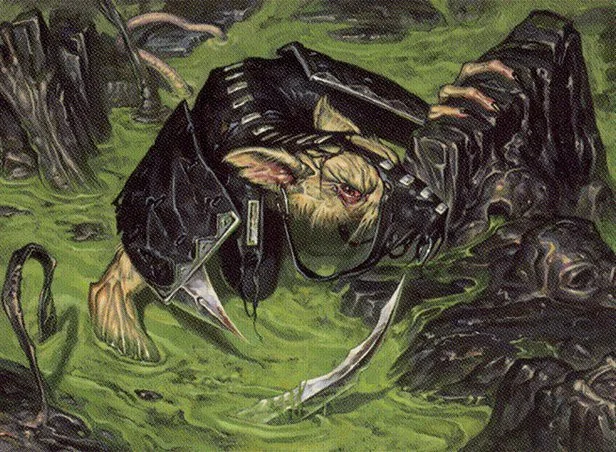

City Outcasts
Most of the other races are fairly ignorant of or blatantly discriminatory towards Nezumi. This happens far more to Nezumi than towards any other race living within human settlements. Many see them as desperate street urchins at best and disgusting, thieving parasites at worst. Their reputation for using underhanded tricks hasn't earned them any favors, though one wonders if the discrimination or the dishonesty came first.
Nezumi Names
The naming conventions of the nezumi are very similar to that of the kitsune. They have two names, common and clan, with the first being based on a body part.
Common: Angry-Tail, Gray-Nose, Twitchy-Whisker, Ink-Eyes, Long-Claw, Marrow-Gnawer, Night-Eyes, Red-Ears, Silent-Paws, Sharp-Claw, Strong-Tail, and White-Fang
Clans: Fujibayashi, Fuma, Hattori, Iga, Ishikawa, Kido, Koga, Mochizuki, Momochi, and Tomo
Nezumi Traits
Your nezumi character has a variety of natural abilities, a holdover from the harsh life your ancestors lived in the swamps of Takenuma.
Ability Score Increase. Your Dexterity score increases by 2.
Age. Nezumi tend to live about the same length of time as most humans, but reach maturity quicker around 11 years old.
Alignment. Most nezumi decide for themselves whether they are good or bad, but rarely do they follow the law. They tend towards chaotic alignments.
Size. Nezumi are significantly shorter and more wiry than humans. They typically range from 4 to 5ft tall and weigh 80 to 120lbs. Males are typically larger females. Your size is Medium.
Speed. Your base walking speed is 35ft.
Darkvision. Accustomed to the murky swamp and gloom of dusk, you have superior vision in the dark and dim conditions. You can see dim light within 60ft of you as if it were bright light, and in darkness as if it were dim light. You can't discern color in darkness, only shades of gray.
Keen Senses. You have proficiency in the Perception skill.
Sneaky. You have proficiency in the Stealth skill.
Thin Frame. Your body can squeeze into spaces as if you were a Small Creature.
Languages. You can speak, read, and write Common and Nezumi-tongue.
Subraces. Over time, the separation between nezumi in the swamp and those in the city have created two subraces, the Shimin and Gaijin.
Shimin
As a shimin nezumi, you've stayed resistant to the bog's natural poisons and diseases.
Ability Score Increase. Your Constitution score increases by 1.
Rat Weapon Training. You have proficiency with the kunai, shuriken, inji, fukiya, net, and wakizashi. The accurate range of all these ranged weapons is doubled. (Example: Fukiya's range property becomes 50/100 instead of normal 25/100.)
Takenuma Durability. Your homelands are rife with rot and decay. Your character's survival indicates a resistance to these conditions. You have resistance to poison and advantage on saving throws against it. At 3rd level, you gain resistance to necrotic damage and advantage on saving throws against disease.
Gaijin
Moving the city has worked on your "charms." Gaijin nezumi use them everyday to survive.
Ability Score Increase. Your Charisma score increases by 1.
Duplicity. You have proficiency in the Deception skill.
Commune with Rats. You can speak with other rats on a basic level to discover sensory and positional information. You also have advantage on Animal Handling ability checks when involving rats.
Street Smarts. Growing up on the fringe of the city has taught you the tells of the criminal underbelly. You have advantage on Insight ability checks when dealing with thugs, bandits, and other criminals. While in an urban area, you also have advantage on Survival ability checks.
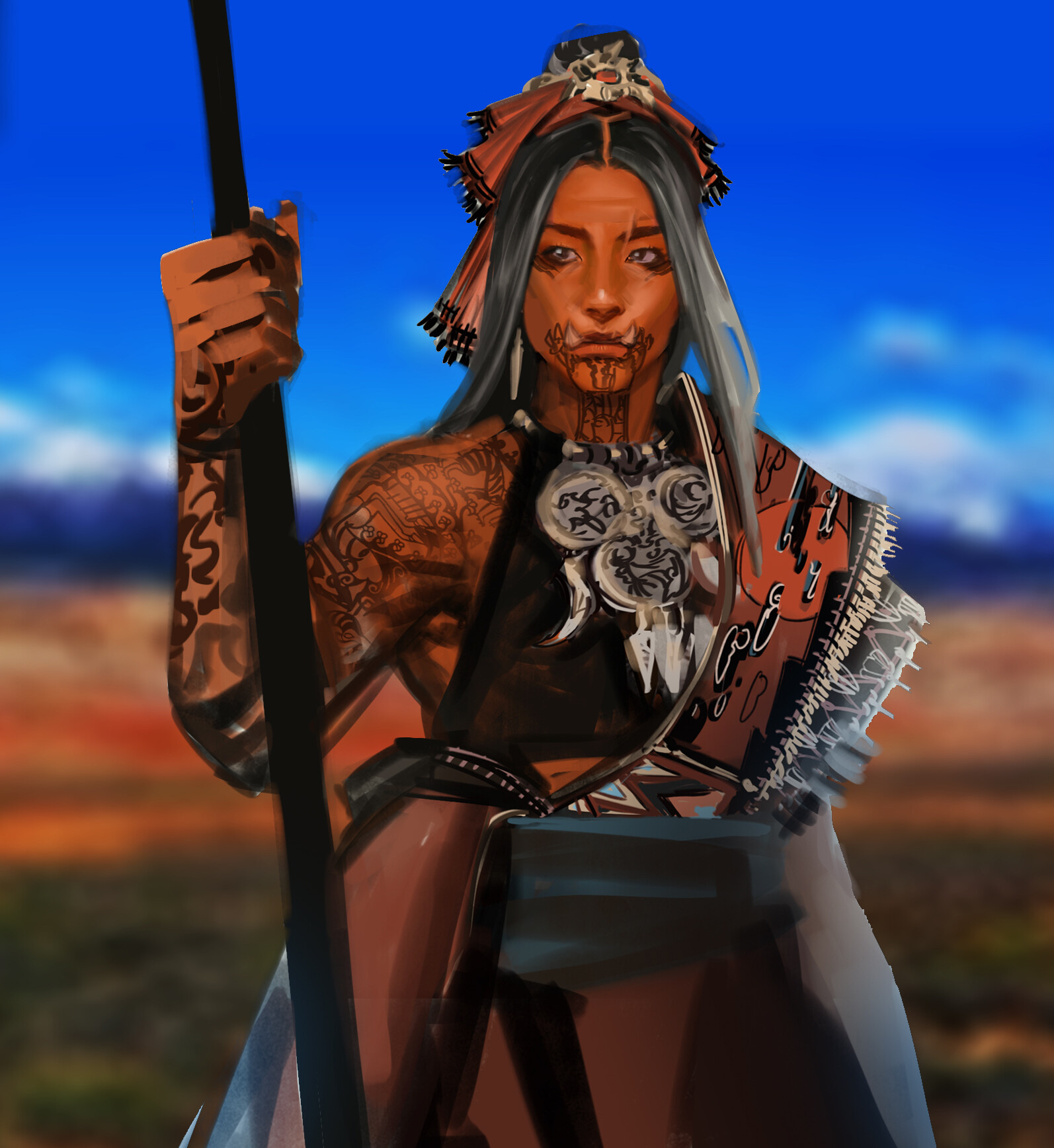

Half-Ogre
"TOWARDS MIDNIGHT THE RAIN CEASED AND THE
clouds drifted away, so that the sky was scattered once
more with the incredible lamps of stars. Then the breeze
died too and there was no noise save the drip and tickle
of water that ran out of clefts and spilled down, leaf
by leaf, to the brown earth of the island. The air was
cool, moist, and clear; and presently even the sound
of the water was still. The beast lay huddled on the
pale beach and the stains spread, inch by inch.."
The half-ogres are the result of human and ogre
interbreeding. With great strength and power comes a
dark instinctual emotion. Half-ogres struggle with
themselves more than society.
Strong and Intimidating
The first thing a person notices about a half-ogre is their
size. Taller than any other race and certainly heavier,
half-ogres use their natural strength to their advantage.
Many make a living in jobs requiring this strength, such as
samurai, construction workers, or farmers. Others use it
for more nefarious purposes, winding up as thugs or
bandits.
The second thing a person notices are the half-ogre's features that separate them from humans. Their teeth are often a sharp mess, and many have long teeth that'd qualify as small tusks. Their skin has a range of colors. Any half-ogre may have a gray skin tone, but most take on shades linked to their ancestry. A half-ogre descended from the mountain ogres could be in shades of pale yellow to earthy red, while one from the swamp could be in shades of white to pale purple. One other common feature for half-ogres is a bony spine. It's not uncommon to see them hunch over as well.
These secondary features often look very intimidating to other races. The more pronounced these ogre features are, the more a half-ogre will get strange or even scared looks. Some who have never seen a half-ogre before may even be caught off guard or frightened by their appearance. While discrimination towards half-ogres is uncommon, the people who've experienced the terrors of true ogres may hold misplaced grudges.
Mysterious Origins
Nobody knows the true origin of the half-ogres. Humans and ogres are not able to reproduce naturally, nor would they want to. Ogres are evil and cunning giants in Kamigawa. Most live to serve oni demons and perform horrible acts. Normal humans run in fear from them, while the brave defend their settlements from raids.
Half-ogres are a rare race among human settlements, but have been around a long time. They are quite accepted in human settlements, though some of the other races less familiar with them sometimes get confused. Ogres do not seem to distinguish between half-ogres and humans, treating them just as horribly as other humans.
Theories of the half-ogre's origins abound. Some wizards
believe that they are the product of ancient magical blending between the races. Some historians believe ogres and humans may not have been so different at one point, being able to reproduce naturally at some point in history. The more pessimistic and conspiratorial parts of society believe that they come from corrupted humans, tampered with by the oni long ago.
The half-ogres themselves aren't sure what to believe. Each has their own theory. Some make it their life mission to find out though, leading them to explore the world for clues.
The one thing everyone agrees on is that half-ogres are related to ogres somehow. Their physical features share too many similarities to ignore. Then, there is the instinctual component. Most half-ogres struggle with a tendency towards violence. This tendency can shape their futures.
Rising Above Savage Instincts
Half-ogres grow up experiencing primal urges, often in the form of rage or violence, to a severity that other races do not. This often causes issues in childhood as children have less control over their actions and emotions. An outlet for these urges is needed, such as martial arts or hard labor. Strict reprimands and clear boundaries help half-ogre children learn right from wrong. By adulthood, most half-ogre's can control themselves. However, half-ogres that cannot learn
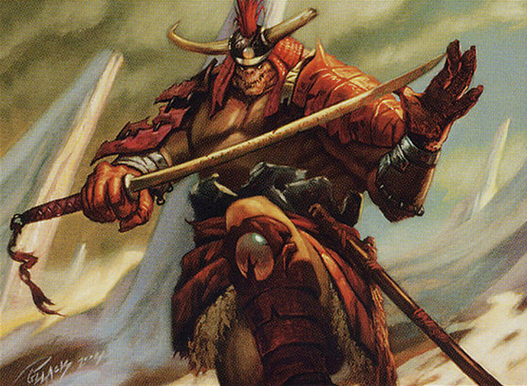


Half-Ogre Families
Half-ogres most commonly reproduce with humans. Their children are most often larger than average humans, but some will be half-ogres. Less likely, two half-ogres find each other and have a full family of half-ogres.
Surprisingly, it is known that half-ogres can procreate with ogres. In the Sokenzan Mountains, Godo has brought together ogres, half-ogres, humans, and akki under one banner. Naturally, intermingling occurs and half-ogres are born.
control find themselves exiled or criminals.
A half-ogre's professional choice and even their whole way of life may be shaped by their savage instincts or the desire to control them. Military occupations are by far the most common path. Strict codes of conduct and frequent practice to manage one's actions help many half-ogres find control. Half-ogres can then tap into their suppressed rage on the battlefield. Military institutions and mercenary groups also prize half-ogre soldiers for this.
Half-Ogre Names
The naming conventions of half-ogres match those of humans. Clan names are rare for half-ogres to have from birth with so many being orphans. However, many take on the clan name of their martial school or future families.
Half-Ogre Traits
Your half-ogre character has certain traits derived from your ogre ancestry.
Ability Score Increase. Your Strength score increases by 2 and your Charisma by 1.
Age. Half-ogres mature slightly faster than humans, reaching adulthood around age 14. They remain strong for about half a century, but then noticeably age faster after that. They rarely live longer than 75 years.
Alignment. A half-ogre's natural tendencies lean towards chaotic and evil alignments. However, many choose the opposite and resist these tendencies in an effort to gain full control of themselves. It's rare to meet a half-ogre that sits inbetween at neutrality.
Size. Half-ogres are significantly larger and bulkier than humans. They range from 6 to 7ft tall and weigh 200 to 300lbs. Males are typically larger than females. Your size is Medium.
Speed. Your base walking speed is 30ft.
Darkvision. Thanks to your ogre blood, you have superior vision in dark and dim conditions. You can see dim light within 60ft of you as if it were bright light, and in darkness as if it were dim light. You can't discern color in darkness, only shades of gray.
Menacing. You have proficiency in the Intimidation skill.
Languages. You can speak, read, and write Common and one extra language of your choice. Half-ogres, like the humans they live with, typically learn the languages of other peoples they deal with.
Subraces. Ogres are divided by region and have some traits differing between them. Depending on which ancestry you have, your instincts give a different benefit.
Takenuma
Your heritage came from ogres of the Takenuma swamp and imparted the instincts of a bloodthirsty murderer to you.
Killing Instinct. The smell of blood incenses you to kill. Once per round, you may add 1d4 extra damage to a hit against a creature you damaged since the start of your last turn with bludgeoning, slashing, or piercing damage. For this effect to occur, an enemy must have blood you can smell.
Furious Attacks. When you score a critical hit with a melee weapon attack, you may use your bonus action to make a quick secondary blow. Make a melee weapon attack, but roll damage as 1d4 regardless of the weapon (still adding modifiers and other bonuses).
Sokenzan
Your heritage came from ogres of the Sokenzan mountains and imparted the instincts of a brutal tyrant to you.
Dominating Instinct. It's not just about defeating the enemy. It's about showing you are more powerful than them. While in combat, you may choose an enemy target as a bonus action. This target must have begun in freedom at the start of combat. If you defeat that target, you regain 1d6 hp and your next attack gains advantage. You may use this ability once, before refreshing it by finishing a short or long rest.
Savage Attacks. When you score a critical hit with a melee weapon attack, you can roll one of the weapon's damage dice one additional time and add it to the extra damage of the critical hit.
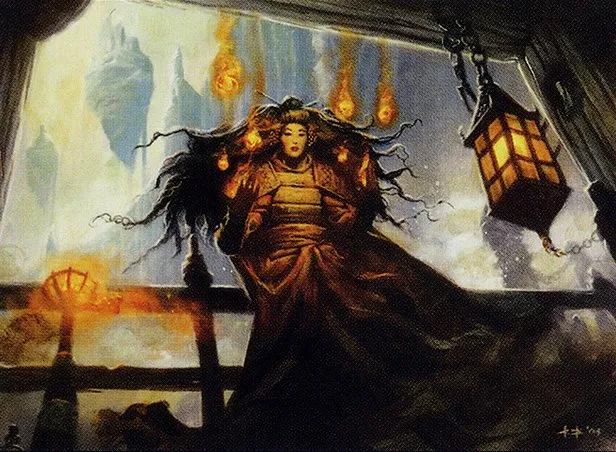
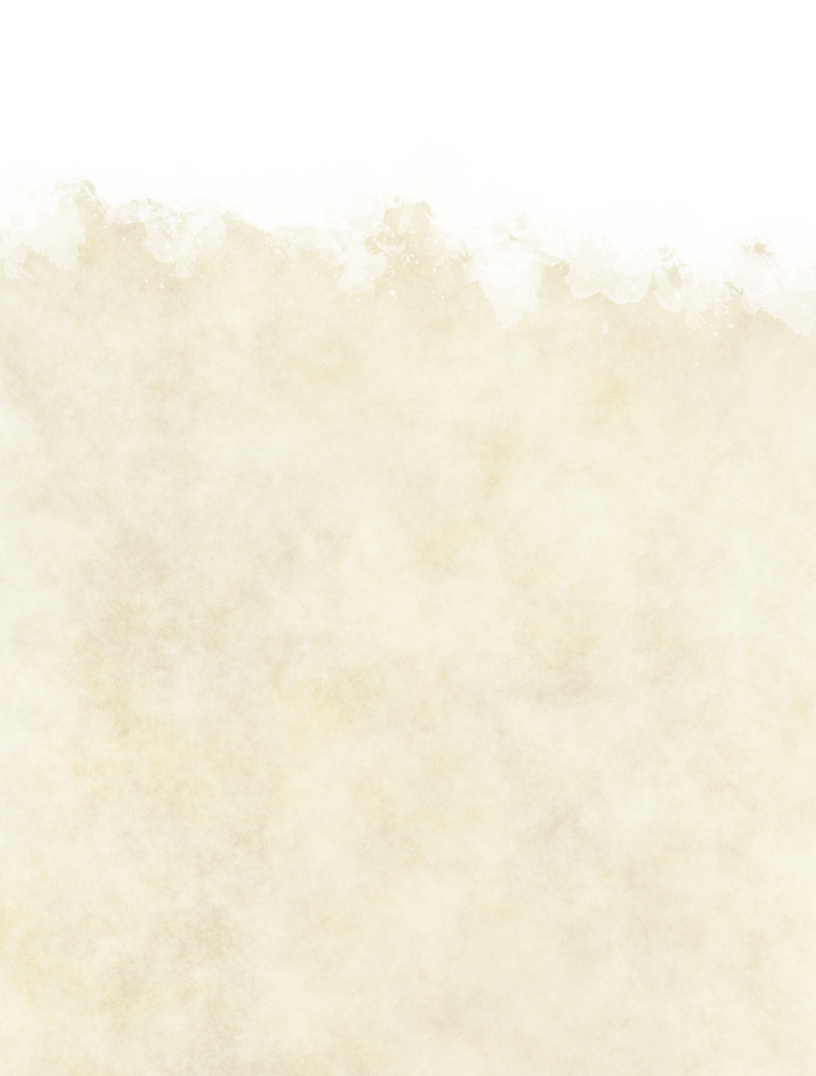
Oni-Touched
The oni-touched are humans meddled with by demons. Gifts and curses have been imparted upon the person. These irregularities go to the next generation too, creating a legacy.
Dishonorable Heritage
Many oni-touched are humans with a streak of demon blood. Their ancestors dabbled in the dark arts or made a deal with an oni. They committed a heinous act to achieve a blasphemous power. This event changed the very being of the person involved. They may retain the appearance of a normal human, but deep inside is a force very inhuman.
Rumors surrounding the city of Numai tell of such events. Established clans, corrupted and dishonored, have such a mark, but this does not hold them back. Their powers cannot be denied, and the nobles of Numai are often seduced. Other oni-touched have kept their heritage a secret.
Dark Connections
An oni-touched may still have a connection to the original oni that bargained or tampered with their ancestors. The current oni-touched, though removed from said events, may still be beholden to the oni's pact. It is rare to find an oni-touched who does not have some connection to the demons. This can shape their lives in unexpected ways, requiring them to perform distasteful acts or protecting them from other demons.
An oni-touched may also reject their ancestor's nagging master. They may seek to break such a pact, gain their freedom, or simply get rid of a known evil. An oni-touched isn't evil by nature, but rather by association after all. They may actually be good and want to destroy that associate. It may take a lifetime, but oni-touched seeking redemption are more common than their masters would like to admit.
Oni-Touched Names
The naming conventions of oni-touched match those of humans. Those that are born to established families have clan names, but those cast out do not. Those that bind themselves to a lord may take on the clan name of their lord.
Oni-Touched Traits
Your ancestors' tampered blood flows through you, granting supernatural abilities no normal human has.
Ability Score Increase. Your Charisma score increases by 2 and your Intellect by 1.
Age. Oni-touched mature at the same rate as humans.
Alignment. While many oni-touched end up with evil alignments, it is not a natural certainty. Like humans, they aren't inclined towards any particular alignment.
Size. Oni-touched are about the same size and build as humans. Your size is Medium.
Speed. Your base walking speed is 30ft.
Psychic Defense. You have resistance to psychic damage.
Demonic Armor Aura. When unarmored, you may use your Charisma modifier in place of your Dexterity modifier when determining AC. (This still applies with Mage Armor.)
Oni Legacy. You know the Thaumaturgy cantrip. Once you reach 3rd level, you can cast the Hex spell once per day, regaining the ability when you finish a long rest. Once you reach 5th level, you can also cast the Darkness spell once per day, regaining the ability when you finish a long rest.
Languages. You can speak, read, and write Common and one extra language of your choice. Humans typically learn the languages of other peoples they deal with, including obscure dialects.
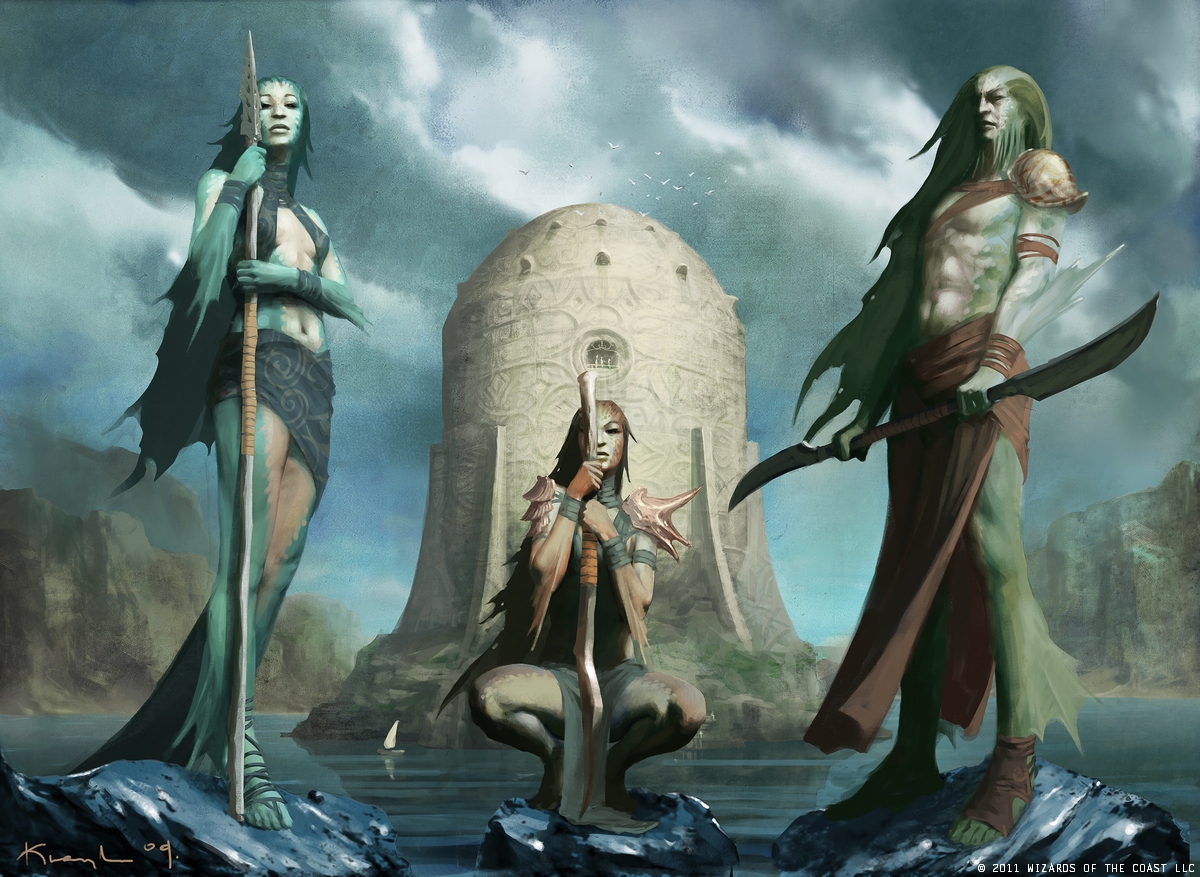

Kami-Touched
"KAMI MANIFEST IN THE FORM OF WHATEVER THEY EMBODY
in the physical plane. Some tower in the shape of moss or bark, while others take forms beyond mortal imagining."
The kami-touched are humans blessed (or perhaps cursed) by the spirits. At some point in the conception, pregnancy, or birth of a child, a kami imparted a little bit of itself. The child grows up, forever changed.
Spiritual Strangeness
A kami-touched is a rare occurance in the world. It isn't known how the Kami, or spirits, of the world affect this change in a being, but the influence is readily apparent. Parents are often shocked when their baby has hair in shades of red, green, or blue. They may be surprised to find their newborn is as heavy as a stone or as light as air. They may be even more concerned when the child develops skin the texture of rocks or is moist to the touch. The older a kami-touched gets, the more features of the kami they manifest.
This does not stop at the surface level either. Kami-touched begin to think in ways strange to their human parents. They may have an affinity for certain environments and activities. They may take on few to none of their parent's habits and personality. While this is often unsettling to the family, the child will feel drawn to the element that matches their kami influencer. By early adulthood, many kami-touched become independent or isolated from their families and self-reliant on their connections to the elements.
Fundamental Feelings
Kami-touched feel a connection with one of the fundamental elements of the world. These fundamental elements are fire, water, earth, air, and the void. This connection will shape how they think and feel. They will often seek out environments or create havens related to the element.
Kajin, or those with an affinity for fire, express energy and passion. Their good qualities may include focus, enthusiasm, adventurousness, and charisma. Their bad qualities may include thoughtlessness, frivolity, and impatience. Many kajin are artists, musicians, and craftsman. Some become travelers and adventurers.
Suijin, or those with an affinity for water, express flexibility and emotion. Their good qualities may include empathy, compassion, generosity, and forgiveness. Their bad qualities may include sensitivity, fearfulness, and naïveté. Many suijin enjoy fishing, sailing, medicine, and jobs related to the community.
Chijin, or those with an affinity for earth, express strength and stability. Their good qualities may include confidence, loyalty, honesty, and practicality. Their bad qualities may include stubborness, insensitivity, and inflexibility. Many chijin are reliable workers and like farming, hunting, mining, and other jobs related to the land. Some use their strength in military service or as mercenaries.
Fujin, or those with an affinity for air, express intellect and logic. Their good qualities may include ambition, stoicism,
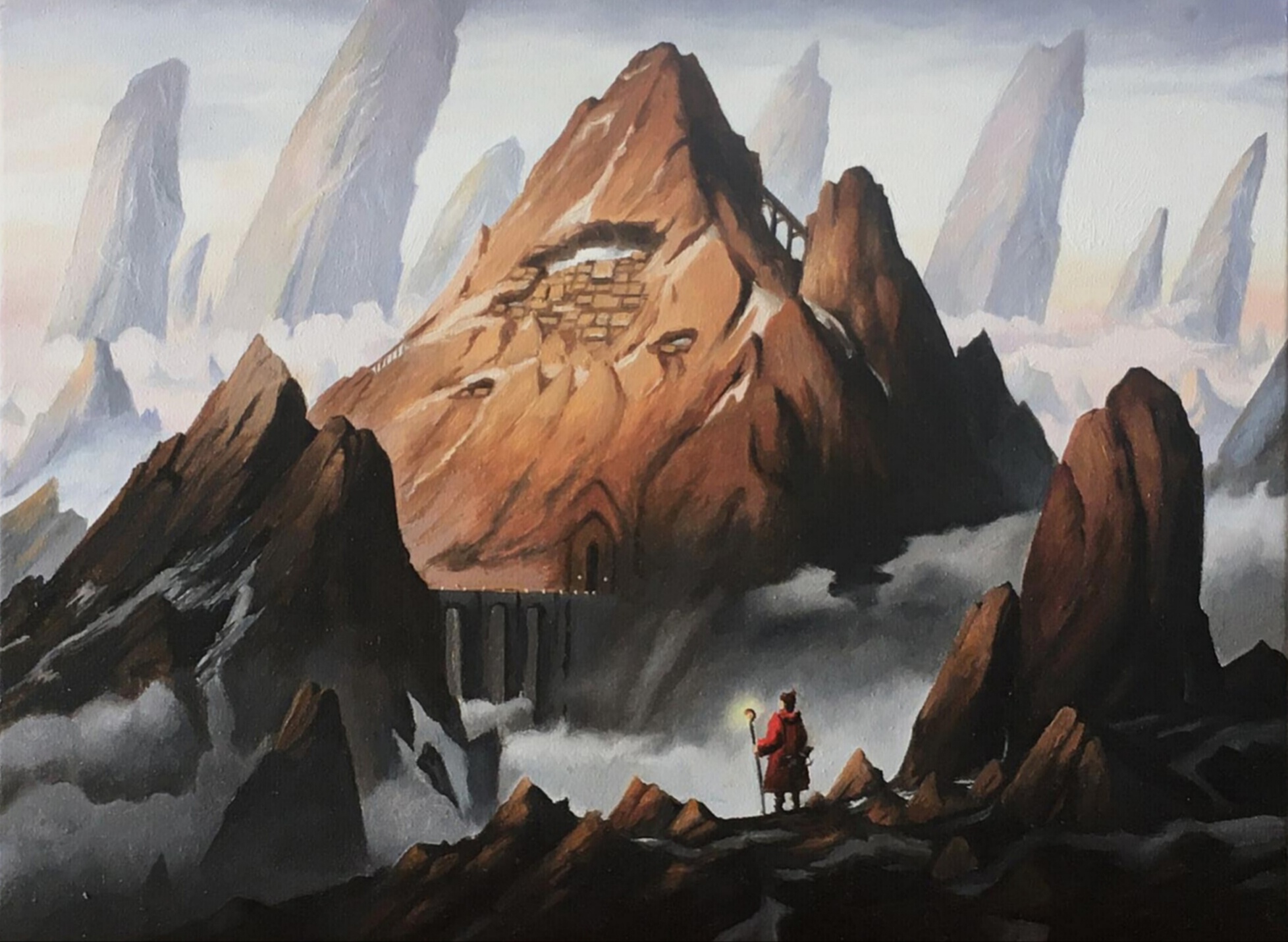

cleverness, and being adept. Their bad qualities may include arrogance, aloofness, and selfishness. Many Fujin take an interest in learning, teaching, science, magic, and the law.
Kujin, or those with an affinity for void, are the rare among the rare. Less is known about them, but it can be theorized based on the related element how they may tend to express themselves. Kujin could express creativity and abstraction. Their good qualities could include open-mindedness, spontaneity, inventiveness, and the ability to reflect. Their bad qualities could include impracticality, laziness, and indecisiveness. Kujin could be attracted to jobs that deal with ideas and concepts in philosophy, morality, and psychology.
Elemental Manifestations
As kami-touched grow and develop, their bodies take on aspects of the element with which they are associated. Some manifestations add beauty and grace while others can be intimidating and ugly. Almost all have changes to their complexion and hair's coloration. Most also exhibit physical changes to specific body parts. Regardless of whether they're desirable or undesirable traits, the kami-touched must come to accept them as a part of themselves.
Kajin typically have physical changes in their eyes and facial expressions. Their eyes sometimes glow with light when they are excited. Their smile is always the warmest around. Their face radiates with a happiness that can change the mood of a room. Skin colors can range from orange and red shades to ashy and black ones. Some even have cracked char-like splotches on their bodies. Hair colors include
yellow, orange, and red shades.
Suijin usually have physical changes in their extremities. Webbed hands & feet are not uncommon. Scales or shell-like chitin on the forearms and shins may grow. Their skin may be moist to the touch or slightly slimy like an eel. Blue and green skin tones and hair colors are common.
Fujin commonly have physical manifestations related to their head and hair. Their hair constantly drifts about, making it appear as though it is without weight. Their temple and crown may grow small crystals that break and float into their hair. Small sparkles on their skin are not uncommon. Skin and hair colors include light blues, grays, and whites.
Chijin routinely have physical manifestations related to their body and muscles. They are larger than average with stocky builds. Their skin may be dusty like the dry earth, pebbled like rough hide, or hard & polished like a smooth stone. Some even grow hard, rocky protrusions on their bodies. Beige, brown, and gray skin tones are common. Baldness is common, even among chijin women. If they do have hair, it's always brown or black.
Kujin physical manifestations are a mystery. There are so few examples, it's unknown what physical traits they may typically have. One example though is the famed kujin philosopher Hiyozen, who had many odd manifestations. He was disproportionately tall and slim, reaching 6.5ft tall but weighing only 175lbs. His hair had streaks of dark purple and white. It was rumored his eyes would become like a starry night sky when he sleepwalked. As Hiyozen aged, it's written that his skin became thin and the bones of his face, hands, and feet could be seen to an extreme degree. It's possible other kujin may turn out like this, or perhaps they will manifest in other ways.
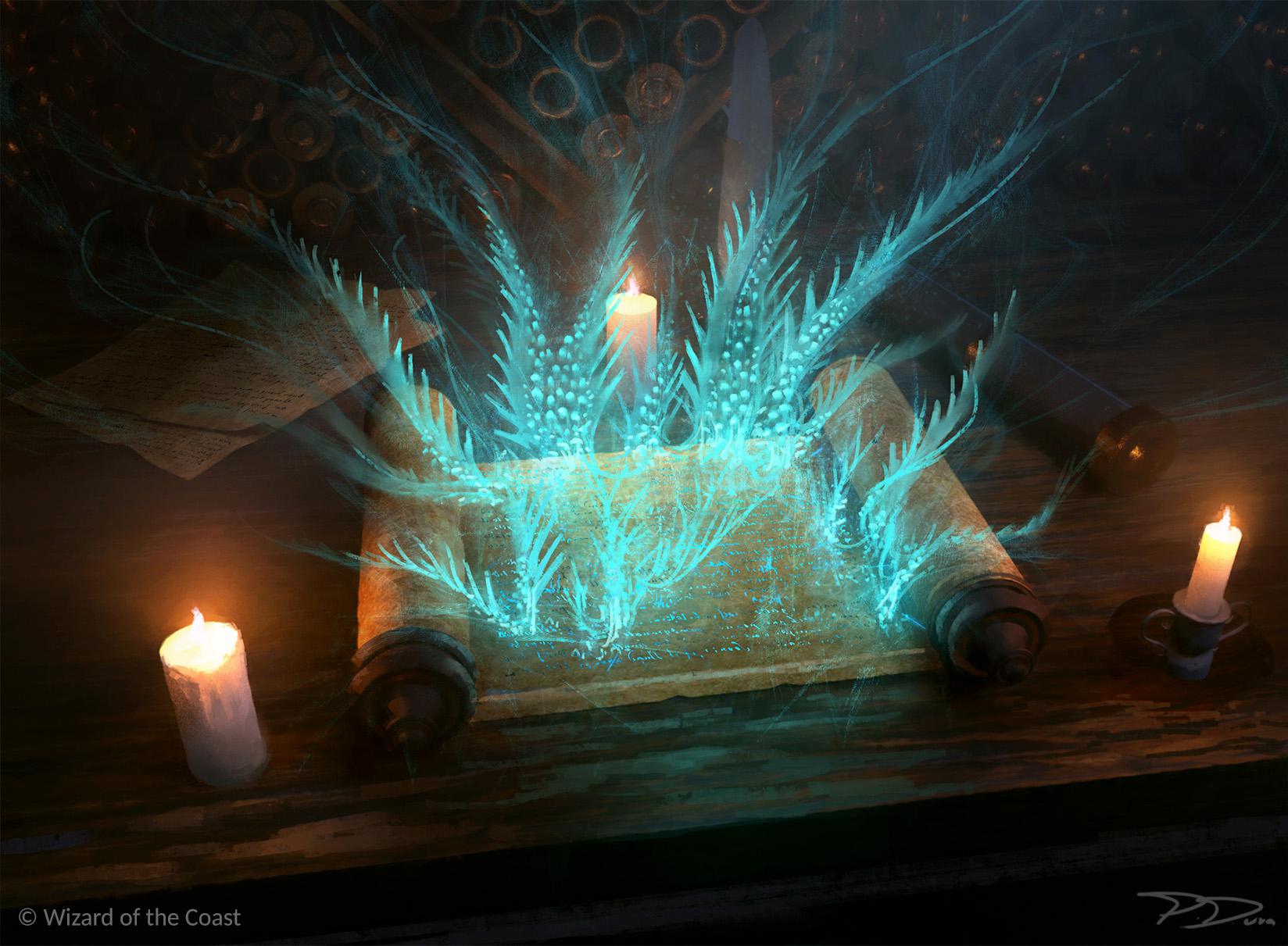

Kami-Touched Names
The naming conventions of kami-touched match those of humans. Many take on nicknames or titles related to the element they are associated with. Some leave behind their clans names, as a show of independence or to further strengthen their elemental bond.
Kami-Touched Traits
A kami's touch has changed you from human to something else. In place of your human traits, you have new ones based on what kind of kami affected you.
Age. Kami-touched mature at the same rate as humans.
Alignment. Kami-touched are a mixed bag, though they tend to avoid evil alignments.
Size. Kami-touched generally fit within the same size and build ratios as humans, even if some end up on one extreme. Your size is Medium.
Speed. Your base walking speed is 30ft.
Languages. You can speak, read, and write Common and one extra language of your choice. Humans typically learn the languages of other peoples they deal with, including obscure dialects.
Subraces. Kami-touched are divided into groupings based on their affinity for an element. This element often grants natural abilities a normal human wouldn't have, as well as a change in appearance.
Kajin
Kajin are associated with fire. They are energetic and passionate.
Ability Score Increase. Your Charisma score increases by 2 and your Constitution by 1.
Fire Resistance. You have resistance to fire damage.
Passion Projects. Over the course of your life, you have taken on one hobby after another. You have proficiency in three artisan's tools of your choice.
Reach to the Blaze. You know the Produce Flame cantrip. Once you reach 3rd level, you can cast the Burning Hands spell once with this trait as a 1st-level spell, and you regain the ability to cast it this way when you finish a long rest. Constitution is your spellcasting ability for these spells.
All Over the Place
Kami suffuse the world with spiritual energy. When they manifest, they embody that energy and warp reality around them. There are infinite varieties. Though categorized above for the sake of the game, the kami-touched are just as varied as their namesakes. Each leads their own life and impacts the world they live in. Many become famous for their wild exploits or sacred havens.
Suijin
Suijin are associated with water. They are flexible and empathetic.
Ability Score Increase. Your Wisdom score increases by 2 and your Constitution by 1.
Cold Resistance. You have resistance to cold damage.
Amphibious. You can breathe both air and water.
Swim. You have a swimming speed of 30ft.
Call to the Wave. You know the Shape Water cantrip. When you reach 3rd level, you can cast the Create or Destroy Water spell as a 2nd-level spell once with this trait, and you regain the ability to cast it this way when you finish a long rest. Constitution is your spellcasting ability for these spells.
Chijin
Chijin are assoaciated with earth. They are strong and stable.
Ability Score Increase. Your Strength score increases by 2 and your Constitution by 1.
Acid Resistance. You have resistance to acid damage.
Earth Walk. You can move across difficult terrain made of earth or stone without expending extra movement.
Soul of the Earth. You know the Mold Earth cantrip. When you reach 3rd level, you can cast Earth Tremor once as a 2nd-level spell, and regain the ability to do so when you finish a long rest.
Fujin
Fujin are associated with air. They are intelligent and logical.
Ability Score Increase. Your Intelligence score increases by 2 and your Constitution by 1.
Lightning Resistance. You have resistance to lightning damage.
Hover Hop. You call upon the winds to aid your movement. Until the start of your next turn, you may gain a "hover" speed equal to your walking speed. You are unaffected by difficult terrain that relies on you touching the ground. This does not work underwater. At the start of your next turn (when you land), impose any terrain effects as if you just moved into that space. This ability may be used once a day, and you regain the ability when you finish a long rest.
Spirit of the Winds. You know the Gust cantrip. When you reach 3rd level, you can cast Fog Cloud once as a 2nd-level spell, and regain the ability to do so when you finish a long rest.
Kujin
Kujin are associated with the void. They are mysterious and abstract.
Ability Score Increase. Your Dexterity, Intelligence, and Charisma scores increase by 1.
Darkvision. You can see dim light within 60ft of you as if it were bright light, and in darkness as if it were dim light. Your ties to the void make your darkvision unusual: everything you see is in outlines of purple.
Psychic Resistance. You have resistance to psychic damage.
Mind Palace. You have proficiency in History.
Empty the Mind. You can cast Mind Sliver cantrip. When you reach 3rd level, you can cast the Sleep spell as a 2nd-level spell once, and you regain the ability to cast it this way when you finish a long rest. Intelligence is your spellcasting ability for these spells.
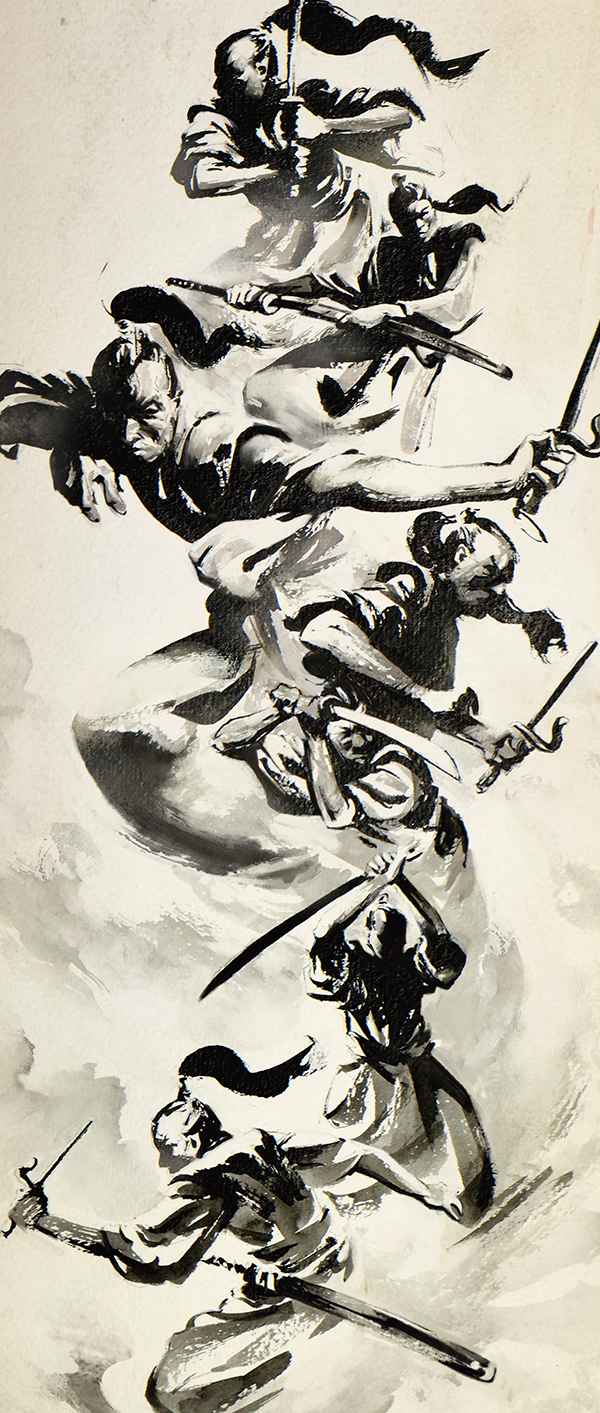


Chapter 2: Subclasses
The next step on your journey through Kamigawa is to pick a class and, by extension, a subclass. All 13 of the official D&D classes can be played in the setting. However, some of the subclasses underneath may not fit well or at all. In this section, subclasses and how they may or may not fit in Kamigawa will be discussed.
Additionally, five new subclasses have been created to express prominent card types in Kamigawa's sets. These include the artificer puppeteer, barbarian ronin, bard geisha, fighter samurai (variant) and monk budoka.
Summary
Below are a list of the subclasses that fit well within Kamigawa. This is based off the Japanese culture base and what appeared in Magic: The Gathering's cards. These are only recommended, and again your character can choose to be any subclass they would like.
Recommended Subclasses
| Class | Recommended Subclasses |
|---|---|
| Artificer | Armorer, Artillerist |
| Barbarian | Ancestral Guardian, Berserker, Totem Warrior, Zealot |
| Bard | Eloquence, Lore, Spirits, Whispers |
| Cleric | All |
| Druid | Land (except Desert), Shepherd, Spores |
| Fighter | Battle Master, Champion, Eldritch Knight, Samurai |
| Monk | Ascendant Dragon, Astral Self, Mercy, Open Hand |
| Paladin | All |
| Ranger | Beast Master, Gloom Stalker, Hunter, Swarmkeeper |
| Rogue | Arcane Trickster, Assassin, Inquisitive, Mastermind, Scout, Thief |
| Sorcerer | Divine Soul, Wild Magic |
| Warlock | All |
| Wizard | Scribes, Abjuration, Conjuration, Divination, Evocation, Illusion, Necromancy, War |
In the following sections, the classes are discussed more fully and their new subclasses described. Each section will also have a table categorizing the subclasses by how well they fit within Kamigawa lore-wise, with the recommended ones repeated. The new subclasses are of course recommended.
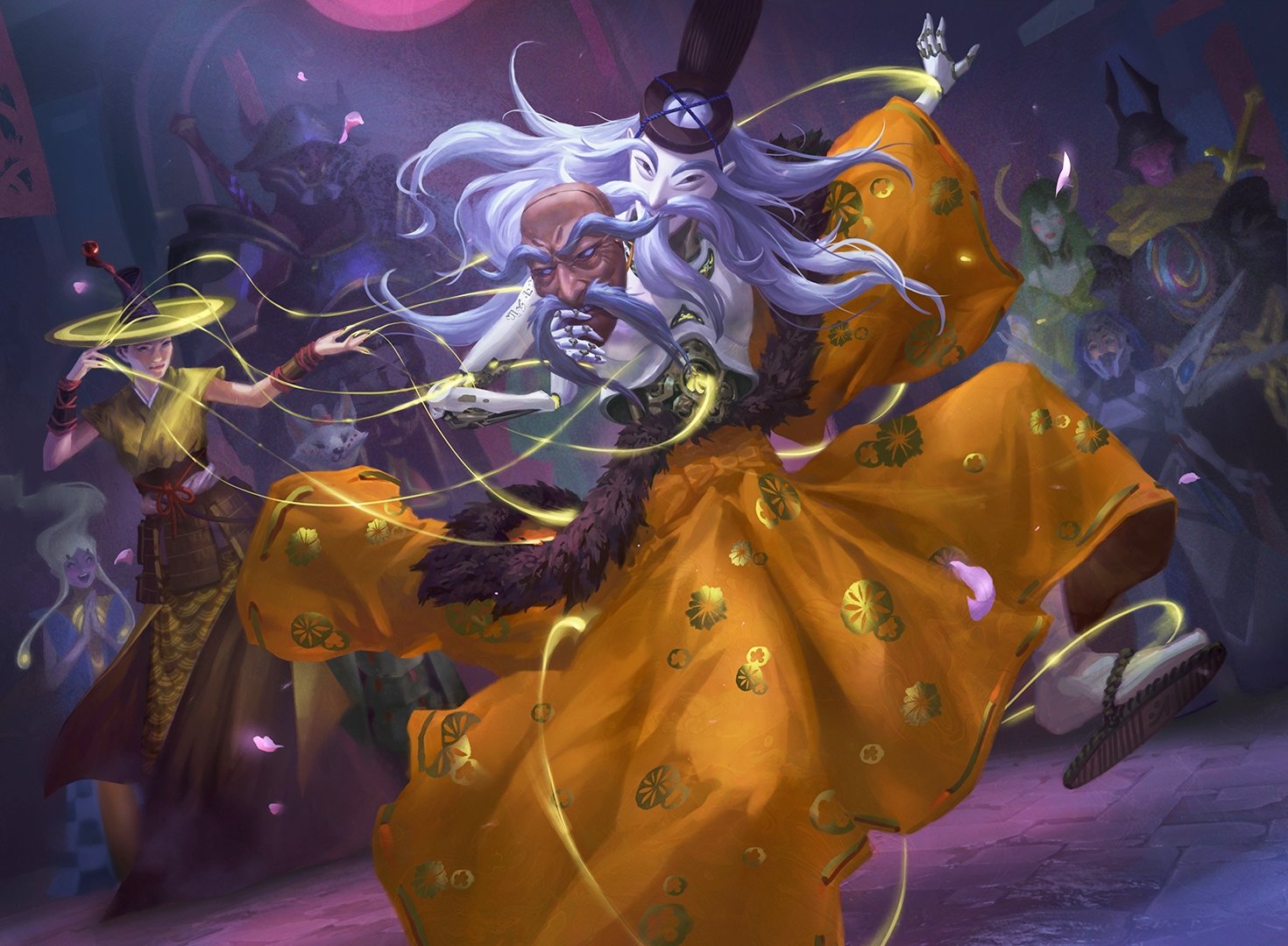

Artificer
All existing artificer subclasses, except the battle smith (reflavored into the new subclass puppeteer), would fit in the Kamigawa setting. However, the armorer and artillerist have a leg up on alchemist. Armor and weapons feature prominently in the Magic: The Gathering sets and were an important part of Japanese history too. Magic potions are not significant in either, though alchemy itself did produce gunpowder and pursued the elixer of immortality.
Artificer Subclass Grades
| Grade | Subclasses |
|---|---|
| Recommended | Armorer, Artillerist |
| Possible | Alchemist |
| Inexplicable | Battle Smith |
A new subclass for artificer has been created, the puppeteer. It is somewhat similar to battle smith by having a battle companion, but focuses more on spellcasting and its companion than magic weapons.
Puppeteer
Japanese puppet theatre, called Bunraku, has its origins as far back as the 16th century, though its modern form is traced to the late 17th century. There is nothing historically to connect puppets to war, though ninja are connected to entertainment professions. Regardless, the idea of using puppets to battle was popularized in media, most notably by
anime in Japan.
The idea has been repeated in Western media, including Magic: The Gathering. The Puppeteer card is a blue wizard and has been reprinted multiple times. In the recent set Kamigawa: Neon Dynasty (Kamigawa but 1200 years in the future and technologically revolutionized), the card Dramatist's Puppet shows a puppeteer as well.
As a puppeteer, your character uses their artifice to imbue magic into a puppet minion. Your puppet isn't just a toy, but a powerful weapon for battle. You control your puppet through magical arcane strings and a mage hand to pull them.
Tool Proficiency
When you adopt this specialization at 3rd level, you gain proficiency with Tinker's tools. If you already have this proficiency, you gain proficiency with one other type of artisan's tools of your choice.
Puppeteer Spells
Starting at 3rd level, you always have certain spells prepared after you reach particular levels in this class, as shown in the Puppeteer Spells table. These spells count as artificer spells for you, but they don't count against the number of artificer spells you prepare.
Puppeteer Spells
| Artificer Level | Spells |
|---|---|
| 3rd | Mage Hand, Shield, Witch Bolt |
| 5th | Hold Person, Warding Bond |
| 9th | Aura of Vitality, Lightning Bolt |
| 13th | Evard's Black Tentacles, Fire Shield |
| 17th | Hold Monster, Mass Cure Wounds |
Arcane Strings
By 3rd level, your tinkering has borne you a useful puppet minion and a way to manipulate it through magic. When you cast the Mage Hand cantrip within 10ft of your puppet, you may attach arcane strings from the hand to your puppet to control it. While attached, the mage hand must be used to manipulate the puppet; it cannot perform other actions. You may use your bonus action to detach the arcane strings. You may attach or reattach the strings using an action to command the hand.
Once attached, you may use your bonus action to command the puppet to move and act. This action can be one in the puppet's stat block or some other action. You may also use your reaction to use the puppet's reaction. Unless you have commanded the puppet since your last turn, it will automatically stay and take the Dodge action.
If the Mending spell is cast on the puppet, it regains 2d6 hit points. If it has died within the last hour, you can use your tinker's tools as an action to revive it, provided you are within 5 feet of it and you expend a spell slot of 1st level or higher. The steel defender returns to life after 1 minute with all its hit points restored.
At the end of a long rest, you can create a new puppet if you have your tinker's tools with you. You may not animate more than one puppet at the same time, since you may only have one mage hand active. In combat, this also means the puppet becomes inanimate if you die.


Puppet Kugutsu
Medium Construct
- Armor Class 14 (natural armor)
- Hit Points 2 + your Intelligence modifier + five times your artificer level (the puppet has a number of Hit Dice [d8s] equal to your artificer level)
- Speed 40 ft. (must be within 10ft of mage hand, and 40ft of you by extension)
STR DEX CON INT WIS CHA 14 (+2) 14 (+2) 14 (+2) 4 (-3) 4 (-3) 4 (-3)
- Saving Throws Dex +2 plus PB, Con +2 plus PB
- Skills Acrobatics +2 plus PB, Athletics +2 plus PB
- Damage Immunities poison, psychic
- Condition Immunities charmed, exhaustion, frightened, poisoned
- Senses blindsight 0 ft., passive Perception —
Traits
Antimagic Susceptibility. The puppet is incapacitated while in the area of an antimagic field. If targeted by dispel magic, the puppet must succeed on a Constitution saving throw against the caster's spell save DC or fall unconscious for 1 minute.
False Appearance. While the puppet remains motionless and isn't moving, it is indistinguishable from a normal puppet.
Mindless. The puppet is only animated because of you. It can't be surprised and attacks on the mind do not work on it.
Senseless. Your puppet cannot see, hear, smell, or taste. It can feel anything that it is touching or being touched by, even when invisible (blindsight 0 ft).
Actions
Force-Empowered Rend. Melee Weapon Attack: your spell attack modifier to hit, reach 5 ft., one target you can see. Hit: 1d8 + PB force damage.
Repair (3/Day). The magical mechanisms inside the puppet restore 2d8 + PB hit points to itself or to one construct or object within 5 feet of it.
Reactions
Deflect Attack. The puppet imposes disadvantage on the attack roll of one creature it can see that is within 5 feet of it, provided the attack roll is against a creature other than the puppet.
Puppet Core
At 5th level, you develop a new device to improve your puppet, a magical core. This core imparts a powerful trait depending on which you choose to construct. There are three cores to choose from: armor-core, spell-core, or strike-core.
Look at the puppet cores table to discover how each enhance your minion. Whenever you gain a level, you may rework the core to another.
Improved Core
At 9th level, you improve upon your core's design to add new effects, in addition to the ones already given.
Improved Puppet
At 15th level, your tinkering has upgraded your puppet to become more powerful. Your puppet gains +2 AC, and whenever it uses its Deflect Attack, the attacker takes force damage equal to 1d4 + your Intelligence modifier. Also, its core becomes more potent.
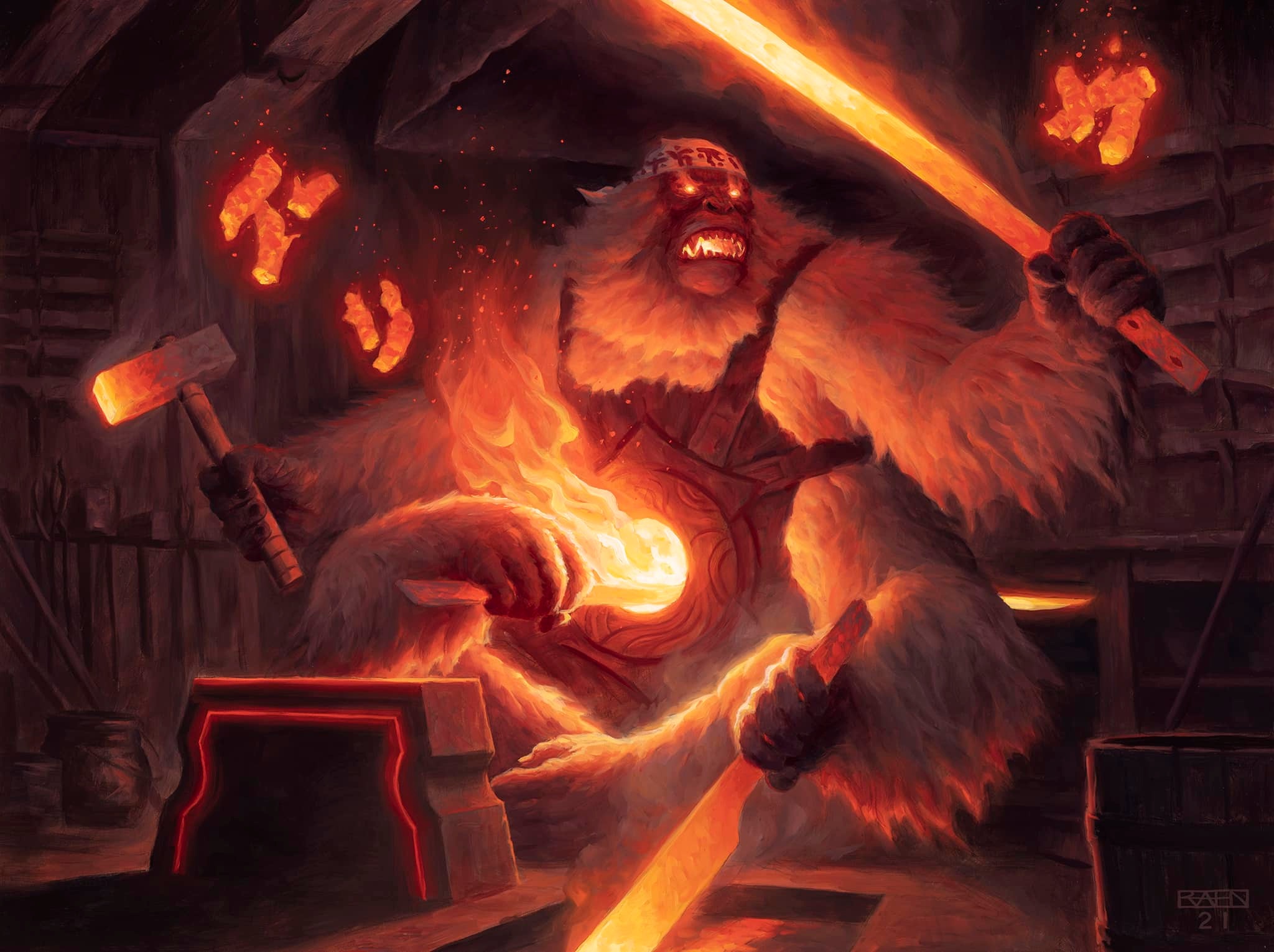

Puppet Cores
| Core | Level | Features |
|---|---|---|
| Armor-core | 5th | Your puppet is now more durable and better at protecting you. It gains +3 AC, +2x your artificer level of hit points, and the Shield reaction. This reaction acts the same as the Shield spell, except it may be cast on either you or the puppet and doesn't cost a spell slot. It may only be used once, before the core recharges by finishing a long rest. |
| 9th | When either you hit a target with a magic weapon attack or your puppet hits a target, its core gives off healing energy. Choose one creature or object you can see within 30 feet of the target. Healing energy flows into the chosen recipient, restoring 2d6 hit points to it. Your puppet also gains the ability to cast Aid as a 3rd-level spell once, before the core recharges by finishing a long rest. | |
| 15th | The healing increases to 4d6. Instead of Aid, the puppet may cast Mass Cure Wounds. | |
| Spell-core | 5th | Your puppet can now channel magical energies. You may now use your bonus action to cast a cantrip through your puppet, as if you were in that space. You may also choose to cast a spell through it once (still costing you a spell slot), before the core recharges by finishing a long rest. |
| 9th | You may now cast a spell through your puppet twice (still costing you spell slots), before the core recharges by finishing a long rest. Your puppet is also a dense concentration of magical energy. Once per day when you finish a short rest, you can choose expended spell slots to recover. The spell slots can have a combined level that is equal to or less than half your artificer level (rounded up). | |
| 15th | You may now cast a spell through your puppet four times (still costing you spell slots), before the core recharges by finishing a long rest. Spells cast through your puppet act as if they were cast one level higher. | |
| Strike-core | 5th | Your puppet is now more deadly. It can attack twice, rather than once, whenever you use it's attack action (Force-Empowered Rend). Your puppet also gains the ability to cast Inflict Wounds as a 1st-level spell once, before the core recharges by finishing a long rest. |
| 9th | When either you hit a target with a magic weapon attack or your puppet hits a target, its core doles out extra damage. The target takes an extra 2d6 force damage. Your puppet also gains the ability to cast Branding Smite as a 3rd-level spell once, before the core recharges by finishing a long rest. | |
| 15th | The damage increases to 4d6. Instead of Branding Smite, the puppet may cast Banishing Smite. |
Kami Craftsman
In Kamigawa, there aren't just mortal artificers. Rarely, a kami will take up an art or industry and pursue perfection. Their products will be the best of the best, but their demands may be arduous.
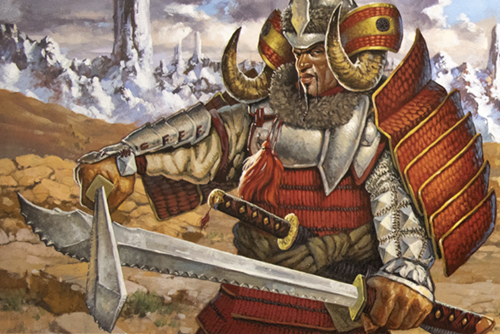
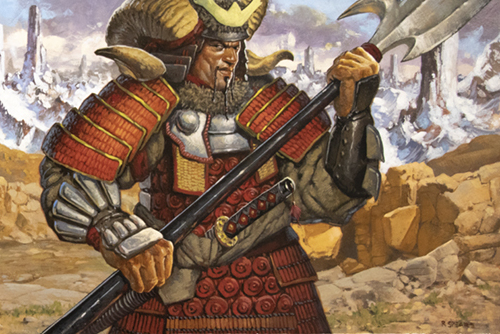

Barbarian
Several of the barbarian subclasses fit well within Kamigawa. Barbarians are represented in the card set best by red mana and the bandits, ronin, and shaman of the Sokenzan mountains. Godo, the Bandit Warlord is a good example of a barbarian. These cards tend to focus on aggressive offense, mostly in a physical sense but sometimes with magic.
Barbarian Subclass Grades
| Grade | Subclasses |
|---|---|
| Recommended | Ancestral Guardian, Berserker, Totem Warrior, Zealot |
| Possible | Beast, Storm Herald (Tundra), Wild Magic |
| Inexplicable | Battlerager, Storm Herald (Desert & Sea) |
A new subclass for barbarian has been created, the ronin. It uses primal energy to create powerful magic slashes.
Ronin
Ronin are masterless, dishonored samurai who have either lost the favor and privilege of their previous lord or they did not commit seppuku when they lost their lord. In some cases, they were already dishonorable and no lord would become their master. In any case, you do not fit well with the bushido code. You let your emotions and instincts guide you, not the rigid rules samurai must follow. Your rage fuels you on the battlefield. You long to feel that primal ferocity again. You thought you were a samurai, but really you were a wolf in sheep's clothing.
Slash Forms
At 3rd level, you've learned how to incorporate your primal energy into samurai slashes. Pick two slashes from the table of ronin slash forms. While raging, you may use a slash during an attack action with any weapon. You decide to use
the option when your weapon hits a creature, unless the option doesn't involve an attack roll. You may not use this ability more than once per turn. You have two uses of this ability, and you regain all expended uses of it when you finish a short or long rest.
You learn another slash form at 6th and 10th level. At 14th level, you may change up to two of your slashes for two different ones.
If an option requires a saving throw, your Ronin Slash Save DC is calculated as follows:
Ronin Slash Save DC
Battle Cry
At 6th level, you may use your bonus action to release a loud battle cry. You must do this on your first turn during an encounter and before taking any other actions. If you do, choose up to four other creatures within 60ft of you that can hear you. Those creatures gain advantage on attack rolls and saving throws until the start of your next turn. Once you use this feature, you can't use it again until you finish a long rest.
Improved Slashes
At 10th level, damage dealt from your slashes increases to 2d6, or specifically 4d6 for the Tsunami slash. Each also gains a new effect. See the table of ronin slash forms for more information.
Rage of the Mountain
At 14th level, you take on aspects of the Sokenzan mountains themselves. Your anger swells within you like the lava of the earth deep below. Your conscience is silent like fresh snow on the Tendo peaks. Your blade is ready to pierce your enemies like Untaidake pierces the sky. You are the immovable mountain that inspires awe in your allies.
When you enter your rage, you and your choice of other willing creatures you can see within 30 feet of you equal to your Constitution modifier (minimum of one creature). You
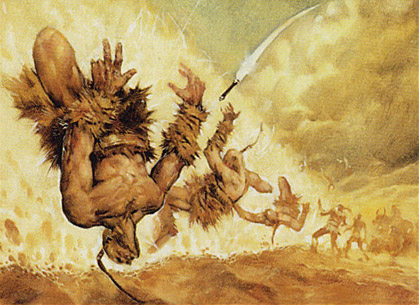
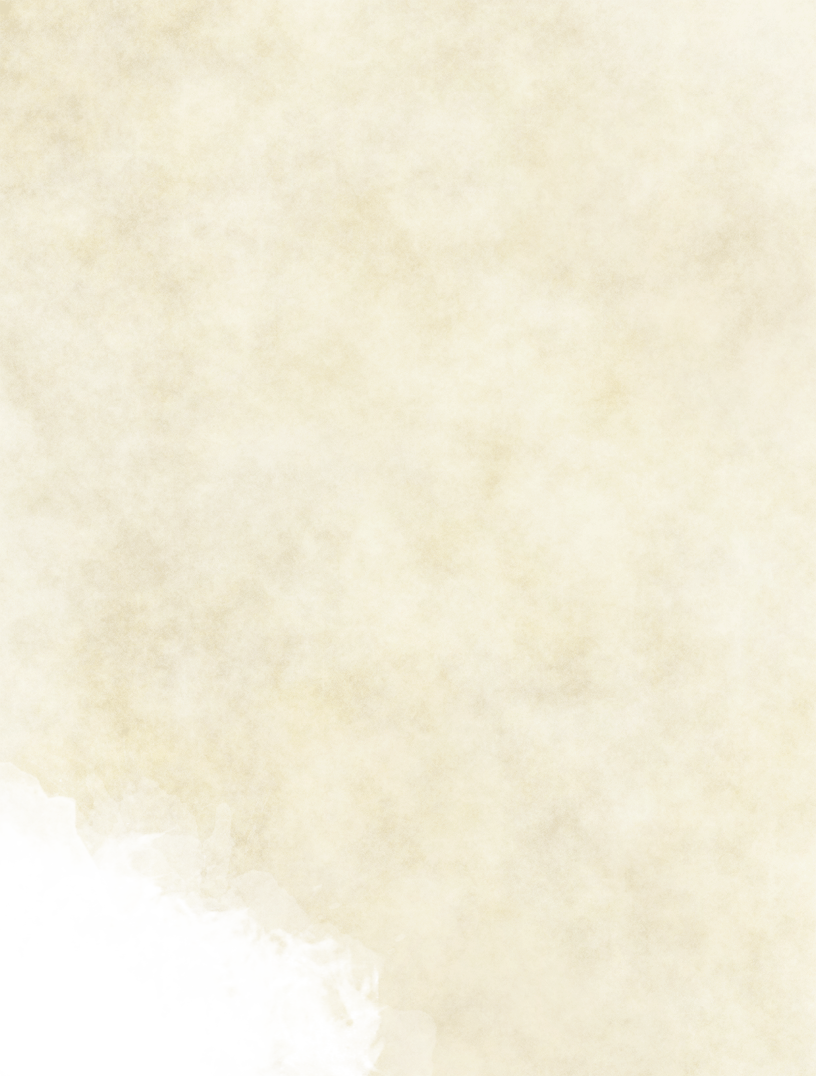
Ronin Slash Forms
| Slash | Level | Features |
|---|---|---|
| Blizzard | 3rd | While raging, you channel your primal energy into a freezing wind. The creature you hit takes an extra 1d6 cold damage and its speed is reduced by 10ft until the start of your next turn. Each creature in a 15-foot cone directly behind the target must succeed on a Dexterity saving throw, or take 1d6 cold damage and have their speed reduced by 10ft until the start of your next turn too. |
| 10th | Frost encases you and your armor. After using this slash while raging, you gain +2 AC and resistance to fire damage. This effects ends when your rage ends. | |
| Earthquake | 3rd | While raging, you channel your primal energy into a powerful downward stab. Each creature other than you within a 10ft radius centered on you must make a Dexterity saving throw. On a failed save, the creature takes 1d6 bludgeoning damage and is knocked prone. If the ground in that area is loose earth or stone, it becomes difficult terrain until cleared, with each 5ft-diameter portion requiring at least 1 minute to clear by hand. |
| 10th | The radius increases to 15ft. The ground no longer needs to be loose earth or stone to become difficult terrain. After using this slash while raging, you can move through this terrain without expending additional movement until the end of your next turn. | |
| Storm | 3rd | While raging, you channel your primal energy into a streak of lightning. The creature you hit takes an extra 1d6 lightning damage. In a line 30ft long and 5ft wide, a stroke of lightning blasts out behind the target. Each creature in the line must succeed on a Dexterity saving throw, or take 1d6 lightning damage. |
| 10th | The line increases to 100ft long. Creatures that succeed on the Dexterity save take half damage (instead of none). The lightning ignites flammable objects in the area that aren't being worn or carried. | |
| Tornado | 3rd | While raging, you channel your primal energy into a swift circular cleave. You can use your entire attack action to make a melee attack against any number of creatures within 5 feet of you, with a separate attack roll for each target. You must decide to use this slash before you roll. |
| 10th | If there is no enemy within 5ft of you in one of the 6 (hex) or 8 (square) directions around you, you may target an enemy in that direction within 10 ft of you. | |
| Tsunami | 3rd | While raging, you channel your primal energy into an overwhelming crush. The creature you hit takes an extra 2d6 force damage. The creature must also make a Strength saving throw. On a failed save, the creature is pushed 10ft from you and knocked prone. |
| 10th | In a line 30ft long and 15ft wide behind your target, a tidal force emerges. Each creature in that line must succeed a Strength saving throw, or be pushed 10ft from you and knocked prone. | |
| Wildfire | 3rd | While raging, you channel your primal energy into a white-hot strike. Your next melee weapon attack deals an extra 1d6 fire damage and causes the target to ignite in flames. At the start of each of their turns, the target must succeed on a Constitution saving throw or take 1d6 fire damage. On a successful save, the effect ends. If the target or a creature within 5 feet of it uses an action to put out the flames, or if some other effect douses the flames (such as the target being submerged in water), the effect ends. |
| 10th | Flames wreath around you and your armor. After using this slash while raging, you gain resistance to cold damage. Also, whenever a creature within 5ft of you hits you with a melee attack, they take 2d6 fire damage. This effect ends when your rage ends. | |
| Wrathful | 3rd | While raging, you channel your primal energy into a terrifying strike. Your next melee weapon attack deals an extra 1d6 psychic damage. If the target is a creature, it must make a Wisdom saving throw or be frightened of you for the next 30 seconds. As an action, the creature can make a Wisdom check against your spell save DC to steel its resolve and end this effect. |
| 10th | You mentally scar the target. At the start of each of their turns, they take 1d12 psychic damage. |
.
(Rage of the Mountain continued)
gain 5 temporary hit points for each creature that accepts this feature. Until the rage ends, chosen creatures gains temporary hit points equal to your Constitution modifier when you deal damage to a common enemy. Remember, these temporary hit points do not stack, but they do refresh.
You can use this feature a number of times equal to your proficiency bonus, and you regain all expended uses when you finish a long rest.
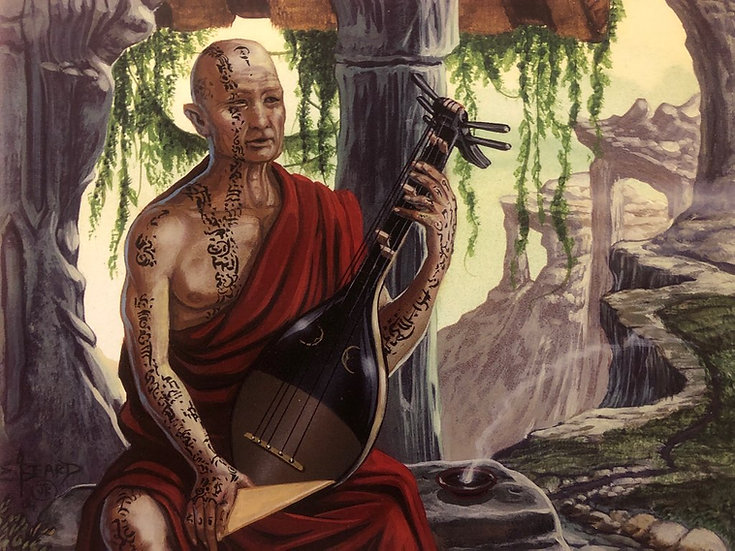
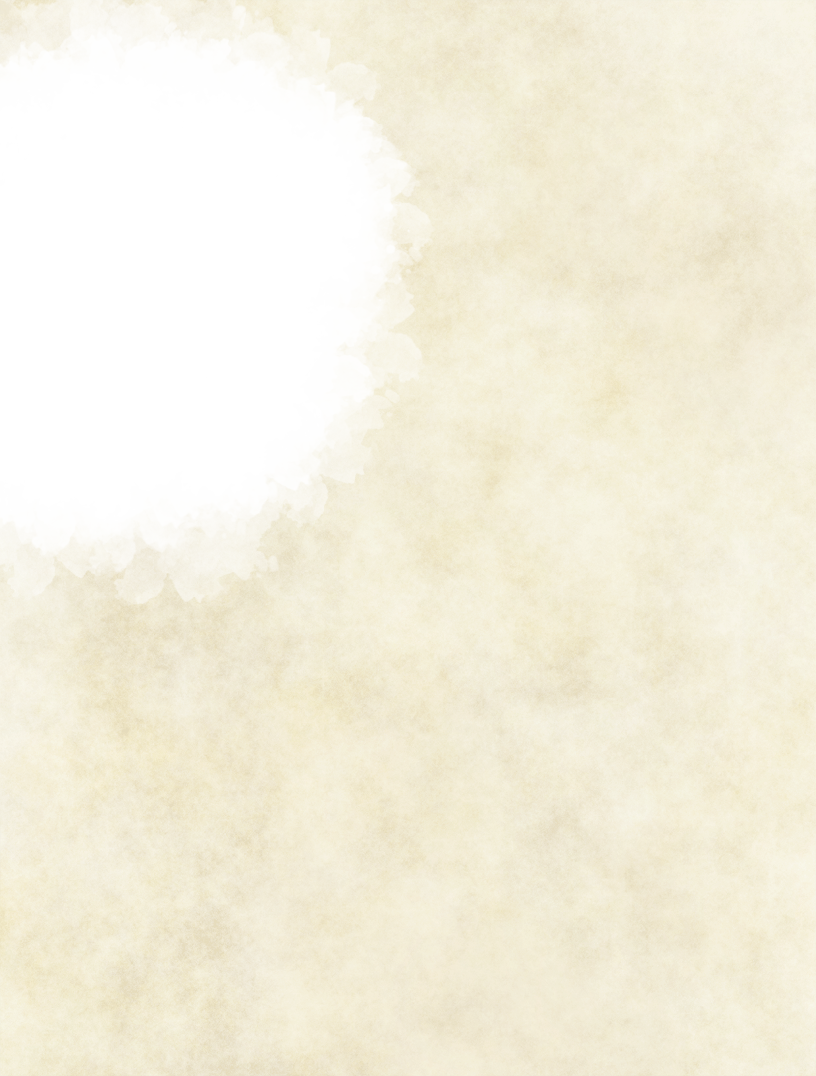
Bard
Entertainers like bards were popular around the globe, including Japan. There is overwhelming evidence that nobles and samurai appreciated theater and music. Most Japanese entertainers did not have any combat training though, and evidence is scarce that samurai learned how to play music. Drums and horns were used in war for signaling at least.
Japan's circus period did not include swords. Weapons, like swords and knives, were martial items not used in entertainment. Juggling was often balls or fruit. Sarugaku, japanese circus or early theater, became focused on comedy sketch and eventually transitioned to Noh theater. This was watched by samurai, but not participated in.
Bard Subclass Grades
| Grade | Subclasses |
|---|---|
| Recommended | Eloquence, Lore, Spirits, Whispers |
| Possible | Creation, Valor |
| Inexplicable | Glamour, Swords |
A new subclass for bard has been created, the geisha. It uses grace and beauty to enchant foes and support allies.
College of the Geisha
Geisha are a cultural icon in Japan. They are a primarily female group of entertainers that perform skillful dance and song, called kabuki. Many also play instruments, depending on the performance. Geisha are instantly known by their characteristic dress, hairstyle, and makeup too. A beautiful geisha captures their audience through enchanting looks, graceful steps, and irresistible music.
The College of the Geisha is home to bards who have mastered the art of kabuki and traditional music. They've created an iconic image from how they dress themselves. Their reputation as a sight you won't want to miss and won't soon forget is renown across Kamigawa. These bards have performances that are sophisticated and irresistible.
Fan Focus
When you join the college of the geisha at 3rd level, you may use a Tessen or other fan as your spellcasting focus instead of a musical instrument.
Art of the Heart-to-Heart
At 3rd level, you gain proficiency in the Insight skill, a representation of your daily interactions with clientele.
Enchanting Form
Starting at 3rd level, you can increase your presence to supernatural levels when you strike a perfect pose and sing a flawless note. As a bonus action, you can expend one use of your Bardic Inspiration. When you do so, choose a number of creatures you can see and that can see & hear you within 60 feet of you, up to a number equal to your Charisma modifier (minimum of one). Roll the Bardic Inspiration die. Those chosen creatures must subtract the number rolled from the next attack roll it makes before the start of your next turn. A creature is immune if it is blinded, deafened, or immune to being charmed.
Enthralling Performance
Starting at 3rd level, you can charge your performance with seductive magic.
If you perform for at least 1 minute, you can attempt to inspire wonder in your audience by singing, reciting a poem, or dancing. At the end of the performance, choose a number of humanoids within 60 feet of you who watched and listened to all of it, up to a number equal to your Charisma modifier (minimum of one). Each target must succeed on a Wisdom saving throw against your spell save DC or be charmed by you. While charmed in this way, the target idolizes you. It speaks glowingly of you to anyone who talks to it, and it hinders anyone who opposes you, although it avoids violence unless it was already inclined to fight on your behalf. This
Geisha Men
The geisha subclass is not limited to female characters. In the mid-17th century, geisha were originally men who entertained, as artists or jesters, in the pleasure quarters of wealthy clientele. It was almost a century later that women dominated the profession in the mid-18th century.
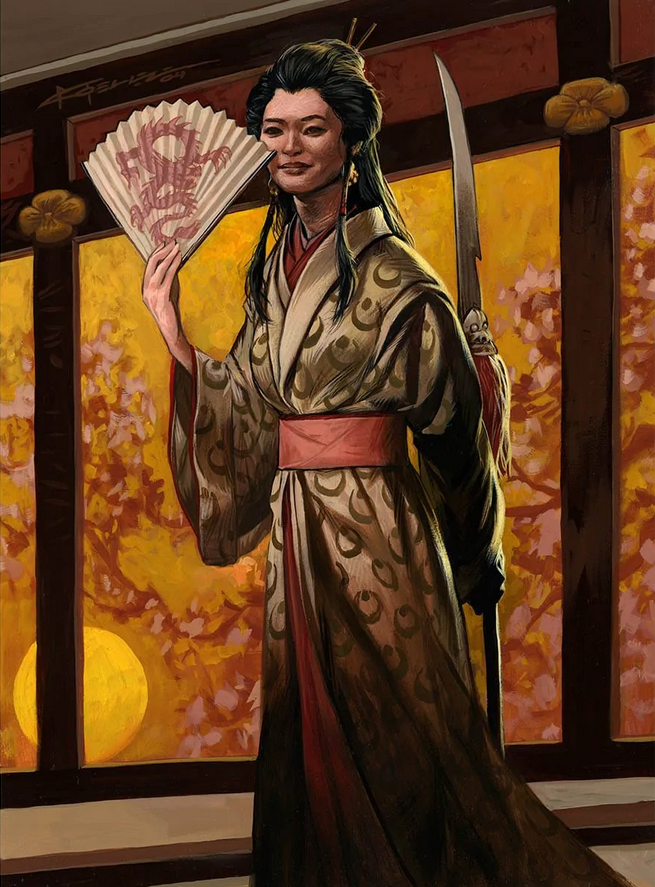
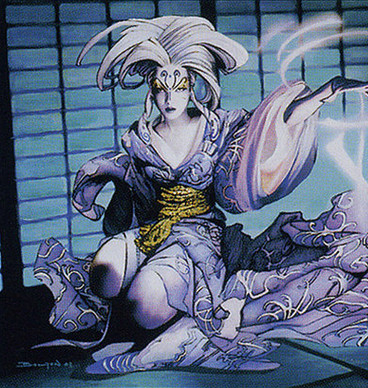

effect ends on a target after 1 hour, if it takes any damage, if you attack it, or if it witnesses you attacking or damaging any of its allies.
If a target succeeds on its saving throw, the target has no hint that you tried to charm it.
Once you use this feature, you can't use it again until you finish a short or long rest.
Kabuki Steps
At 6th level, your mastery of kabuki has improved your
natural movements to inspiring levels. When you move
within 5ft of a friendly creature, you may give them one
of your Bardic Inspiration dice without using a bonus
action. After, you do not have to stay next to them and
may use the rest of your movement, if any.
Additionally, you have proficiency in Charisma
(Performance) checks related to dance. Your
proficiency bonus is doubled for these checks.
Venerated Beauty
At 14th level, your appearance permanently takes on a treasured likeness. While made up, you are art. While dressed up, you are fashion. This makes others hesitate before harming or contradicting you.
While in combat, you may also use your appearance
to your advantage. As a bonus action, you can take on
a magically venerated presence for 1 minute or until
you are incapacitated. For the duration, whenever any creature tries to attack you for the first time on a turn, the attacker must make a Charisma saving throw against your spell save DC. On a failed save, it can't attack you on this turn,
and it must choose a new target for its attack or the attack is wasted. On a successful save, it can attack you on this turn, but it has disadvantage on any saving throw it makes against your spells on your next turn.
Once you assume this venerated presence, you can't do so again until you finish a short or long rest.
Glamour Lost
One might notice that the colleges of geisha and glamour subclasses have strikingly similar features. Indeed, they do. Inspiration was taken from the college of glamour because of the similarity in appearence-based magic. Like a fey queen, the geisha commands the attention of the lower classes and is doted upon by upper classes.
Additionally, Kamigawa does not have a Feywild like in D&D. In Magic: The Gathering, there isn't a plane like the Feywild, though faeries feature prominently in several sets. The planes of Lorwyn and Eldraine include many faerie creatures and fairy tale-like characters. Lorwyn might be the closest setting to a Feywild, but the comparison is loose. Since the college of glamour is based on being taught by fey, then it does not fit into Kamigawa.
Likewise, the circle of dreams druid and fey wanderer ranger subclasses are graded inexplicable for relying on the Feywild.
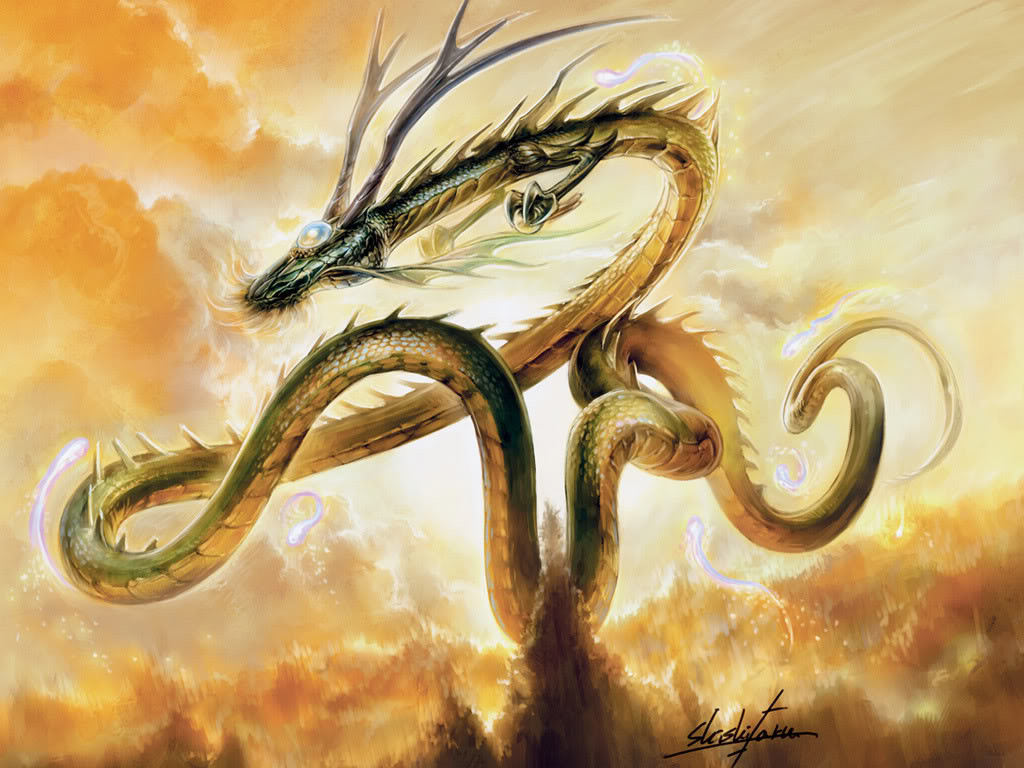

Cleric & Paladin
The peoples of Kamigawa revere the kami as more than just spirits. They are their deities, and rightly so. The greatest of the kami can level cities and destroy the land. Some can travel between the planes, reaching beyond Kamigawa. The most powerful kami holds up the barrier between the spirit and mortal realms, preventing annihilation.
Clerics and paladins of Kamigawa most often commit
themselves to two groups of great kami, the myojin and dragons. Depending on which group they follow, a cleric or paladin is known as kamisworn or dragonsworn. Some clerics and paladins choose to commit themselves to specific kami or ideals as well, though these are far fewer in number.
All domains and oaths fit within Kamigawa, as the kami can cover all of them. A deities table is provided to show the major kami deities and their respective domains or oaths.
Kamisworn Deities
| Deity | Alignment | Domains | Oaths | Symbol |
|---|---|---|---|---|
| Myojin of Cleansing Fire | LG | Light, Life, Order, Peace, Twilight | Crown, Devotion, Redemption | Fan with sun on it |
| Myojin of Seeing Winds | N | Arcana, Knowledge, Tempest, Trickery | Watchers | Tornado swirl around a sword |
| Myojin of Night's Reach | NE | Death, Trickery, War | Conquest, Oathbreaker | Black hand clawing sideways with long nails |
| Myojin of Infinite Rage | CN | Forge, Light, Tempest, War | Conquest, Glory, Vengeance | Hand holding sword upright |
| Myojin of Life's Web | CG | Grave, Life, Nature | Ancients | Tree inside circle |
Dragonsworn Deities
| Deity | Alignment | Domains | Oaths | Symbol |
|---|---|---|---|---|
| Yosei, the Morning Star | LG | Light, Life, Twilight | Devotion, Redemption, Crown | Sunrise |
| Keiga, the Tide Star | NG | Knowledge, Tempest | Crown | Single wave curl |
| Kokusho, the Evening Star | NG | Grave, Twilight | Vengeance, Watchers | Skull with open mouth inside circle |
| Ryusei, the Falling Star | CG | Tempest, War | Conquest, Glory | Three fireballs in front of a mountain |
| Jugan, the Rising Star | NG | Life, Nature | Ancients, Vengeance | Antlers on dragon head outline |
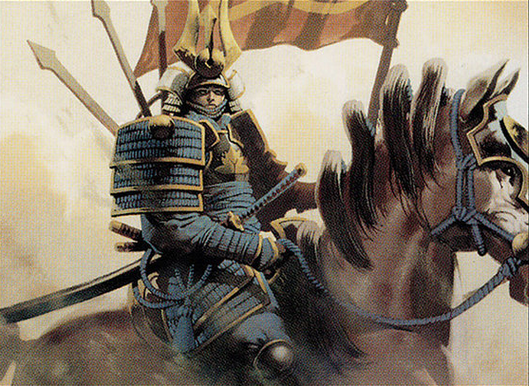


Druid
In Magic: The Gathering, the druid-like cards are typed as monks or shaman. Almost all of the monks are green, while the shaman are split between green, red, and blue. In D&D, druids can be found anywhere nature is found and even rely on cosmic forces too. The druid subclasses focusing on nature and the land fit better into Kamigawa than the others.
The circle of the land desert druid is excluded from this. There is no desert in Kamigawa.
Druid Subclass Grades
| Grade | Subclasses |
|---|---|
| Recommended | Land (except Desert), Shepherd, Spores |
| Possible | Moon, Stars, Wildfire |
| Inexplicable | Dreams, Land (Desert) |
Fighter
Fighters are anywhere and everywhere. In Japan, the most important of these is the samurai, a distinguished class with a long history. They are renown for their code of honor, bushido. Kamigawa follows this closely, only deviating to add in magic.
Fighter Subclass Grades
| Grade | Subclasses |
|---|---|
| Recommended | Battle Master, Champion, Eldritch Knight, Samurai |
| Possible | Arcane Archer, Cavalier, Echo Knight, Psi Warrior |
| Inexplicable | Purple Dragon Knight, Rune Knight |
A variant of the samurai subclass was created for
fun. You can play as it or the original one released in
Xanathar's Guide to Everything.
Samurai (Variant)
Joining the samurai of Eiganjo means
swearing loyalty to the emperor and
committing oneself to bushido, a code
of honor and strict lifestyle. You are no
longer a warrior, but the will of the
greatest mortal power in Kamigawa.
Required Learning
When you choose this archetype at
3rd level, you gain proficiency in one
of the following skills of your choice:
History, Intimidation, or Persuasion.
Alternatively, you learn one language
of your choice.
Sun Stance
At 3rd level, you've learned how to
hold yourself in battle like a samurai.
You now know the Sun Stance from
the list of samurai stances. At the
beginning of your first turn in an
encounter, you may choose to take this stance and gain its benefit until the encounter ends.
Fighting Focus
Starting at 3rd level, you can focus in battle to an extraordinary degree. You gain three focus charges. As a bonus action on your turn, you can use a charge to gain advantage on weapon attack rolls until the end of the current turn. Those attacks can score a critical hit on a roll of 19 or 20. You regain all of your focus charges when you finish a long rest.
Alternate Stances
At 7th level, you learn two more stances. Then, you learn another at 10th and 15th levels. At the beginning of your first turn in an encounter, you may choose to take any of your learned stances and gain its benefit until the encounter ends.
During combat, you may use your bonus action to change your stance. When you do, you immediately lose the previous stance's benefit and gain the new one's. You may do this up to three times per day, before refreshing this ability by finishing a long rest. At 10th level, you can change stances one more time per day.
Tireless Focus
Starting at 10th level, when you roll initiative and have no focus charges remaining, you regain one use.
Rapid Strike
Starting at 15th level, you learn to trade accuracy for swift strikes. If you take the Attack action on your turn and have advantage on an attack roll against one of the targets, you can forgo the advantage for that roll to make an additional weapon attack against that target, as part of the same action. You can do so no more than once per turn.
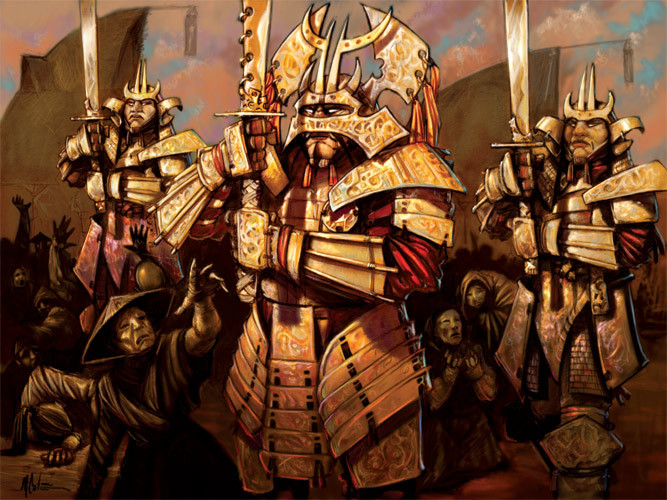

Strength Before Death
Starting at 18th level, your fighting spirit can delay the grasp of death. If you take damage that reduces you to 0 hit points and doesn't kill you outright, you can use your reaction to delay falling unconscious, and you can immediately take an extra turn, interrupting the current turn. While you have 0 hit points during that extra turn, taking damage causes death saving throw failures as normal, and three death saving throw failures can still kill you. When the extra turn ends, you fall unconscious if you still have 0 hit points.
Once you use this feature, you can't use it again until you finish a long rest.
Samurai Stances
The samurai stances are listed in alphabetical order.
Counter Stance. When a creature you are within 5ft of misses with a melee attack against you, you may use your reaction to make a melee weapon attack against the creature.
Earth Stance. When you take damage, you may use your reaction to reduce that damage by 2d4. This increases to 3d4
Monk
Kamigawa has many monks, most of which are human and of green mana. They are called budoka, a reference to būdo, and live in the Jukai forest. These monks revere the kami and seek ascendance through wisdom. They are not good or evil and tend towards unarmed martial prowess.
Japan's history includes monks, called Sōhei. They were Buddhist warriors and scholars with extended monastic orders. They participated in Japanese wars and political feuds. While some adopted peaceful philosophies, warrior monks continued to exist up to the start of the 17th century.
at 10th level and 4d4 at 15th level.
Evasive Stance. The first opportunity attack on you each turn has disadvantage.
Fire Stance. After defeating an enemy, you gain advantage on your next attack.
Mindful Stance. You may add your proficiency bonus to Wisdom saving throws.
Sun Stance. You gain 2d6 temporary hit points. This increases to 4d6 at 7th level, 6d6 at 10th level, and 8d6 at 15th level. If you change stances, you lose what's left.
Void Stance. When you take acid, cold, fire, lightning, or thunder damage, you may use your reaction to store some of that damage for your next melee attack. The first time you hit with a melee attack on your next turn, the target takes an extra 1d6 damage of the triggering type. If you have not scored a hit and use this ability again, you may replace the damage type with the new triggering type.
Water Stance. The first ranged attack made against you each round has disadvantage.
Wind Stance. You may take the Dash action as a bonus action.
Monk Subclass Grades
| Grade | Subclasses |
|---|---|
| Recommended | Ascendant Dragon, Astral Self, Mercy, Open Hand |
| Possible | Drunken Master, Elements, Shadow |
| Inexplicable | Kensei, Long Death, Sun Soul |
A new subclass for monk is available, the way of the budoka.
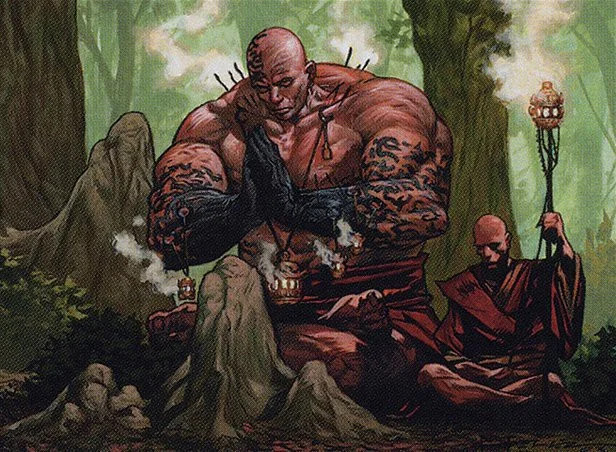
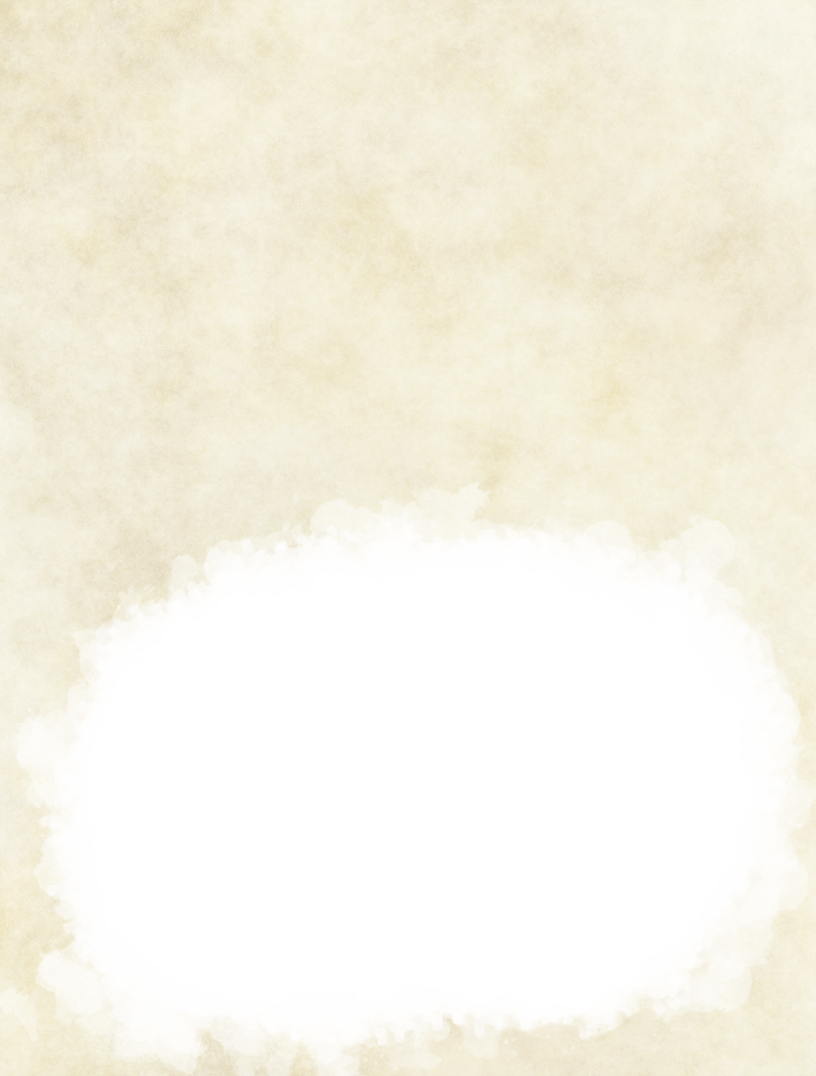
Way of the Budoka
The monastic tradition of the budoka is a path towards peace and connection with the kami and thus the world. In order to achieve this, you must train your body to defend, mind to calm, and spirit to open. Budoka must go and live near the kami to cultivate themselves. This leads them to the Jukai forest and developing a bond with nature.
No shrine is more famous than Okina temple beneath the Boseiju, the oldest and tallest tree of the forest. It embodies the spirit of the magnificent forest. Shimenwa ropes and shide papers hang from its body to mark its significance. The monks at Okina are some of the strongest and most knowledgeable in Kamigawa.
Natural Reflection
Starting at 3rd level, your connection to nature gives you an intuition about vegetation. You have proficiency in Intelligence (Nature) checks related to plants.
Meditation Chants
At 3rd level, you learn shōmyō, a style of Japanese Buddhist chant used to prepare for meditation. Pick one chant from the list of shōmyō chants. With this chant, you can lead friendly creatures in meditation during a short or long rest. If you do, those creatures that participated gain its benefit for 1 hour after the rest. You may only use this feature once a day, before refreshing it by finishing a long rest.
Fist of Masumaro
At 3rd level, when you use the Attack action on
your turn, you can spend 1 ki point to imbue
sickening green energy into your
fists and feet. For the
rest of your turn,
your unarmed strikes deal poison damage instead of bludgeoning damage, and they also deal an extra 1d4 poison damage.
Nature Walk
At 6th level, your connection to nature alerts you to the best places to step while in a forest or other area dense with plants. Difficult terrain due to vegetation, such as prickly brambles or large tree roots, does not cost you extra movement.
Kodama's Anger
At 6th level, you can call upon nature to aid you. You can spend 3 ki points to cast the Spike Growth spell. Your ki save DC is used as your spell save DC.
Natural Discussion
At 11th level, your connection to nature has grown again. You can now cast Speak with Plants once a day, before refreshing this ability by finishing a long rest.
Empowered Chants
At 11th level, your chants have grown in power with you. You may add your Wisdom modifier to the number rolled on the Martial Arts die. The Chant of Power no longer expends a ki point.
Additionally, pick another shōmyō chant to learn. You should know two chants now.
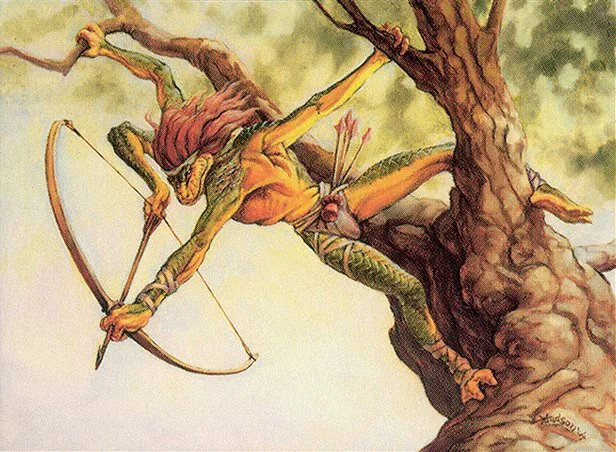


Boseiju's Wrath
At 17th level, your connection to nature
and its kami has reached it full potential. You can
now call upon the spirits of nature to rouse them against
your enemies. You can spend 6 ki points to cast the Wrath of Nature spell. Your ki save DC is used as your spell save DC.
List of Shōmyō chants:
The shōmyō chants are listed in alphabetical order.
Chant of Power. Expend 1 ki point. Energy surges through your party. Roll a Martial Arts die. When a friendly creature that participated makes their next weapon or spell attack, add the number rolled to that attack's damage.
Chant of Regeneration. Life rushes through your party. Roll a Martial Arts die. A friendly creature that participated regains an amount of hit points equal to the number rolled.
Chant of Sensitivity. Your party's souls feel open to the world. Roll a Martial Arts die. When a friendly creature that participated makes their next skill check, add the number rolled to that check.
Chant of Serenity. Calm washes over your party. Roll a Martial Arts die. When a friendly creature that participated makes their next saving throw, add the number rolled to that save.
Ranger
In both Magic: The Gathering and Japan, archery and military animals existed throughout history. Archery, or kyūdō, was an integral part of warfare in Japan and samurai training. Horses archers were important too. Dogs, like the Akita, were used as guard animals.
In Magic, both archery and warhounds are shown. The Orochi snakefolk had a whole tribe devoted to archery and scouting. Also, Kamigawa specifically has nezumi shaman that kept swarms of insects, though they were closer to druids. Ranger subclasses focusing on archery and beast companions fit the Kamigawa setting better than others.
Dragons or Kami?
Kamigawa has dragons, but not the western variety. The deity-like dragon kami are technically spirits and based on eastern dragons. They do not have wings. Some have horns or antlers. All have long serpentine bodies. They are considered wise protectors instead of gigantic cunning monsters.
Ranger Subclass Grades
| Grade | Subclasses |
|---|---|
| Recommended | Beast Master, Gloom Stalker, Hunter, Swarmkeeper |
| Possible | Horizon Walker, Monster Slayer |
| Inexplicable | Drakewarden, Fey Wanderer |
Rogue
The existing rogue subclasses have a lot of good choices. The ninja, a rogue with aspects of several of the subclasses, features prominently in Kamigawa. Ninja are a part of Magic's black and blue colors. In Japan, ninja and rogues are an important part of their history. They have grown from being mountain mercenaries into cultural icons. Magical techniques, mysterious methods, and flawless disguises are some of their legendary attributes. Any subclass which uses these tactics would fit in Kamigawa.
Rogue Subclass Grades
| Grade | Subclasses |
|---|---|
| Recommended | Arcane Trickster, Assassin, Inquisitive, Mastermind, Scout, Thief |
| Possible | Phantom, Soulknife, Swashbuckler |
| Inexplicable |
A ninja subclass was explored, but lacked differentiation from the already existing subclasses.
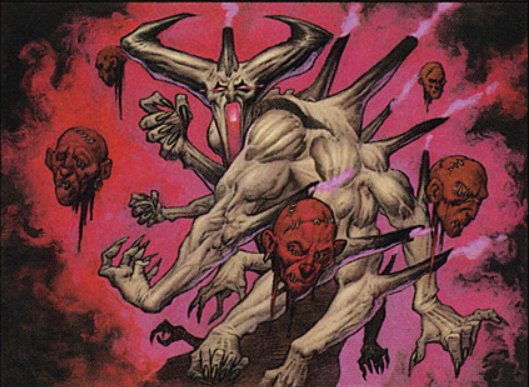

Sorcerer
The sorcerer class and its subclasses do not fit as well into Kamigawa as other classes. Most magic users were either bestowed powers from kami like warlocks or learned it through study like wizards. Japanese history doesn't help much either. The mages, called onmyōji, were concerned with astrology, divination, exorcisms, and warding. Offensive spellslinging wasn't practiced.
There is some hope though. Several cards in the Kamigawa set show descendants of mortals turned kami, essentially divine souls. Wild magic is also able to fit in pretty much any setting.
Sorcerer Subclass Grades
| Grade | Subclasses |
|---|---|
| Recommended | Divine Soul, Wild Magic |
| Possible | Aberrant Mind, Shadow Magic, Storm Sorcery |
| Inexplicable | Clockwork Soul, Draconic Bloodline |
Warlock
Though there are a great many beings that could be patrons, the warlock subclasses do not lend themselves well to Kamigawa for one reason. Most are tied to another plane of D&D. This excludes almost all of the options if you want to remain in Kamigawa. Therefore, artistic license is needed to expand how patrons may manifest powers in your warlock.
A table of different kami who've appeared in Kamigawa with a suggested alignment and subclass. Kami aren't limited in form though. You may also pick a patron that you come up with.
Warlock Patrons - Kami
| Kami | Alignment | Suggested Subclass |
|---|---|---|
| Patron of the Akki | CN | Archfey, Genie (Efreeti) |
| Patron of the Kitsune | NG | Archfey, Celestial |
| Patron of the Moon | LN | Archfey, Genie (Djinni) |
| Patron of the Nezumi | CN | Archfey, Undying |
| Patron of the Orochi | N | Archfey, Hexblade |
| Adamaro, First to Desire | NE | Fiend |
| Akuta, Born of Ash | CE | Fiend |
| Arashi, the Sky Asunder | CN | Fathomless, Genie (Djinni) |
| Ayumi, the Last Visitor | LN | Archfey |
| Azamuki, Treachery Incarnate | CE | Hexblade |
| Chisei, Heart of Oceans | CN | Fathomless |
| Hikari, Twilight Guardian | NG | Celestial |
| Hokori, Dust Drinker | NE | Undead |
| Horobi, Death's Wail | NE | Undead |
| Ichiga, Who Topples Oaks | CG | Genie (Dao) |
| Ichikawa, Great River | CN | Fathomless, Genie (Marid) |
| Iname, Aspect of Life and Death | LN | Undead, Undying |
| Jaraku, the Interloper | CN | Genie (Marid) |
| Jiwari, the Earth Aflame | CE | Genie (Dao) |
| Kaiso, Memory of Loyalty | LG | Celestial |
| Kakkazan, Mountain Fire | NE | Genie (Efreeti) |
| Kaminari, Thunder and Lightening | CE | Genie (Djinni) |
| Kataki, War's Wage | N | Hexblade |
| Kiyomaro, First to Stand | LG | Celestial |
| Mannichi, the Fevered Dream | CN | Archfey |
| Masumaro, First to Live | LG | Undying |
| Mochi, Smiling Kami of the Crescent Moon | N | Archfey |
| Oyobi, Who Split the Heavens | NG | Celestial |
| Sekki, Seasons' Guide | NG | Archfey |
| Shirei, Shizo's Caretaker | LE | Undead |
| Soromaro, First to Dream | LN | Great Old One |
| Terashi, Sun and Justice | LG | Celestial |
| Towazu, the Unspeakable | NE | Great Old One |
| Yomiji, Who Bars the Way | LG | Undying |
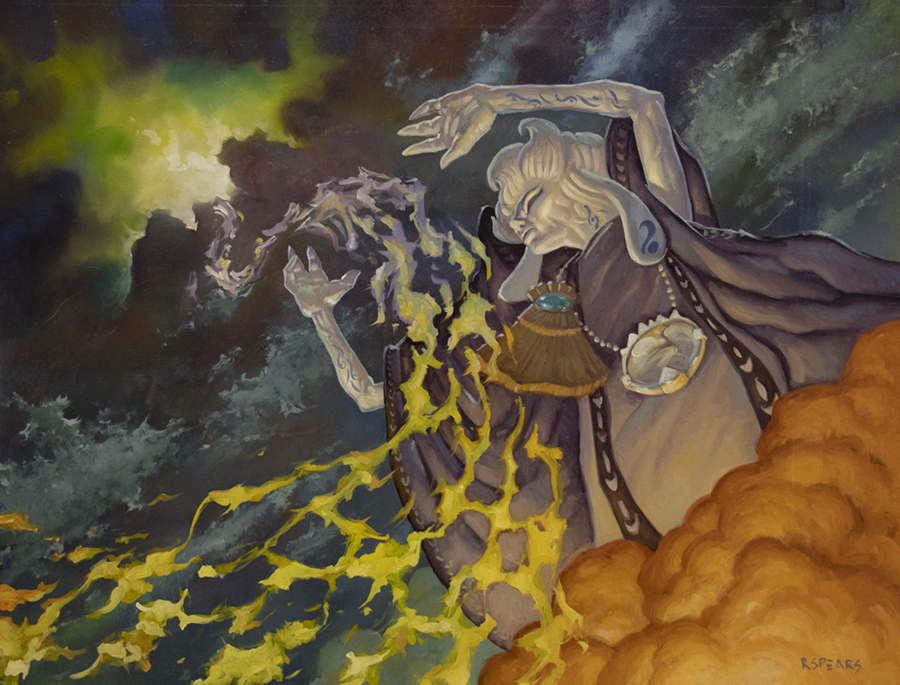

Warlock Patrons - Oni
| Oni | Alignment | Suggested Subclass |
|---|---|---|
| Kagemaro, First to Suffer | CE | Fiend |
| Kuro, Pitlord | LE | Fiend |
| Kyoki, Sanity's Eclipse | CE | Great Old One |
| Seizan, Preverter of Truth | NE | Great Old One |
| Shimatsu, the Bloodcloaked | CE | Hexblade |
| Urami, of Insatiable Hunger | CE | Fiend |
| Yukora, the Prisoner | CE | Hexblade |
With the latitude given to the warlock patrons, there are a few inconsistencies. These should be discussed with your DM and decided before play.
For example, the Genie subclass has a skill called Genie's Vessel. This makes little sense in the Kamigawa context. Instead, it could be reflavored as Kami's Vessel and be a small totem or trinket representing that kami's home.
Extraplanar Horrors
The Eldrazi are extraplanar forces in Magic: The Gathering similar to Lovecraftian horrors. An interesting crossover could be a great old one warlock calling upon one of the three Eldrazi titans to be their patron.
Wizard
Wizards feature prominently in Magic: The Gathering (imagine that). The soratami moonfolk of Kamigawa are famously peerless wizards. Other shaman-typed cards appear to have powers very similar to wizards. As mentioned in the sorcerer's section, Japan's mages were concerned almost entirely with divination. Thus, there are many great options for wizards to fit in Kamigawa.
Wizard Subclass Grades
| Grade | Subclasses |
|---|---|
| Recommended | Scribes, Abjuration, Conjuration, Divination, Evocation, Illusion, Necromancy, War |
| Possible | Bladesinger, Chronurgy, Enchantment, Graviturgy, Transmutation |
| Inexplicable |
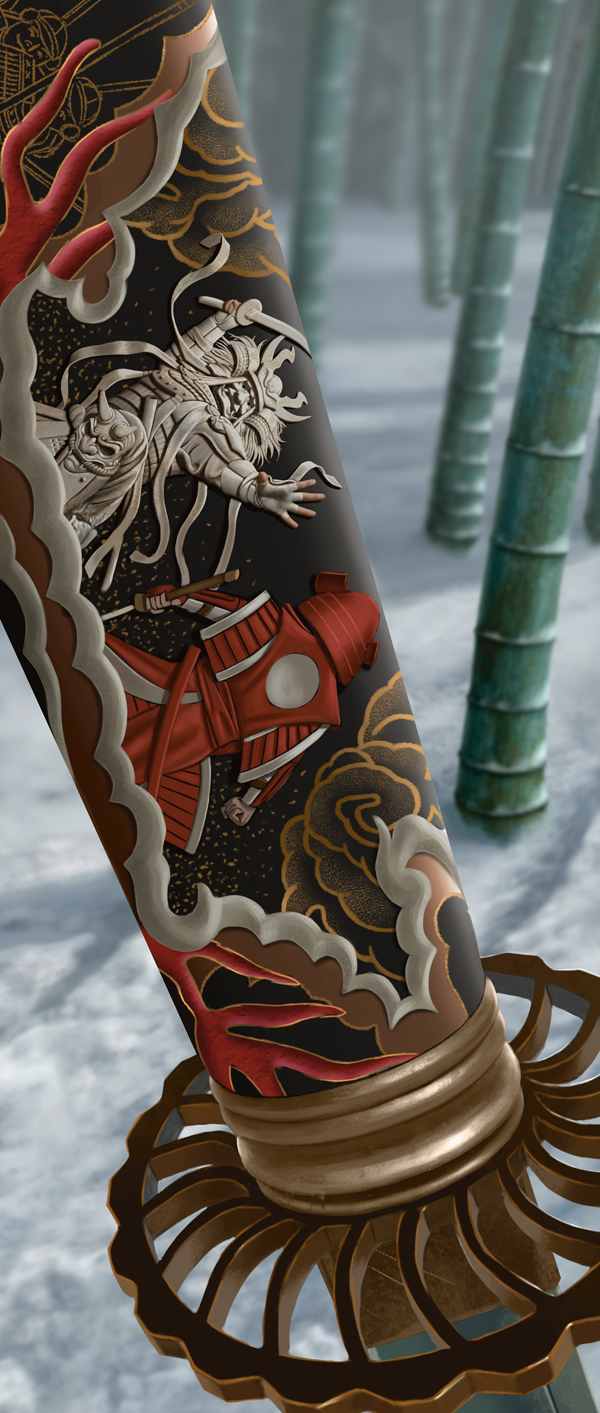

Chapter 3: Equipment
Going out of the city of Eiganjo and into Kamigawa is dangerous. You've picked your class and are properly trained, but now you need the equipment to make use of that training. In Kamigawa though, you won't find your standard D&D weapons and armor. There aren't any crossbows or greataxes, nor half-plate or hide. Your lovable bagpipes don't exist. Katanas and tate are a samurai's sword and shield. The twang of a shamisen may be heard in the local tavern. This chapter will focus on the Japanese-style equipment Kamigawa has.
On a whole, there are more similarities (or at least analogs) to D&D than not. For balance reasons, many of the costs and stats will in general remain the same. However, there will be a few major differences, some reinforced by special cases from Magic: The Gathering. With both new and old choices, it can be fun to explore while having a solid foundation to fall back on.
Currency
Kamigawa, like Japan during the samurai era, has ryō as currency. This is a gold-based currency, similar to D&D. However, brass was used instead of copper and the ratios of gold to silver to brass were quite different in old Japan. The official rate was 1 gold koban to 50 silver monme to 4000 brass mon coins. Though it's not historically inaccurate, Kamigawa will stick to the D&D ratios of 1 gold to 10 silver to 100 copper for simplicity.
Strings of cash coins, called kan, are also be available in Kamigawa. These are traditionally of the lowest denomination, or kanmon, and have 1000 mon coins attached. In Kamigawa, the kan represents a platinum piece.
The electrum does not have an equivalent denomination.
Standard Exchange Rates
| Coin | mc | mm | kb | kan |
|---|---|---|---|---|
| Mon (mc) | 1 | 1/10 | 1/100 | 1/1000 |
| Monme (mm) | 10 | 1 | 1/10 | 1/100 |
| Koban (kb) | 100 | 10 | 1 | 1/10 |
| Kan string (kan) | 1000 | 100 | 10 | 1 |
These coins represent wealth for not just mortals, but also kami. Koban and kan strings are offered to the spirits for blessings. Some spirits take on aspects related to wealth or currency. A kami of generosity may provide the poor with extra wages. A kami of greed may mug traveling merchants for their coin purses. Other kami do not care for wealth nor even any material thing.
Armor & Shields
Kamigawa and Japan have a new armory to look through. The armor and shields table has been modified to reflect this. For balance reasons, the armors have kept equivalent stats to the standard D&D armors, despite some being dubiously similar to each other.
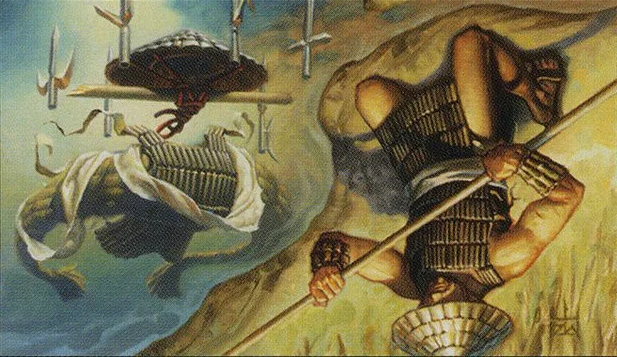


Armor
| Armor | Cost | Armor Class (AC) | Strength | Stealth | Weight | (Equivalent) | |
|---|---|---|---|---|---|---|---|
| Light Armor | |||||||
| Kikko Katabira | 5 kb | 11 + Dex modifier | — | Disadvantage | 8 lb. | (Padded) | |
| Kikko Tatami-dō | 10 kb | 11 + Dex modifier | — | — | 10 lb. | (Leather) | |
| Kurata Tatami-dō | 45 kb | 12 + Dex modifier | — | — | 13 lb. | (Studded Leather) | |
| Medium Armor | |||||||
| Nerigawa Manchira | 10 kb | 12 + Dex modifier (max 2) | — | — | 12 lb. | (Hide) | |
| Kusari Tatami-dō | 50 kb | 13 + Dex modifier (max 2) | — | — | 20 lb. | (Chain shirt) | |
| Dō-maru | 50 kb | 14 + Dex modifier (max 2) | — | Disadvantage | 45 lb. | (Scale mail) | |
| Hotoke-dō | 400 kb | 14 + Dex modifier (max 2) | — | — | 20 lb. | (Breastplate) | |
| Ō-yoroi | 750 kb | 15 + Dex modifier (max 2) | — | Disadvantage | 40 lb. | (Half plate) | |
| Heavy Armor | |||||||
| Hishinui-dō | 30 kb | 14 | — | Disadvantage | 40 lb. | (Ring mail) | |
| Kusari Gusoku | 75 kb | 16 | Str 13 | Disadvantage | 55 lb. | (Chain mail) | |
| Sendai-dō Gusoku | 200 kb | 17 | Str 15 | Disadvantage | 60 lb. | (Splint) | |
| Hotoke-dō Gusoku | 1,500 kb | 18 | Str 15 | Disadvantage | 65 lb. | (Plate) | |
| Shield | |||||||
| Tate | 10 kb | +2 | — | — | 6 lb. | (Shield) |
.
Weapons
Kamigawa, due to its Japanese inspirations, have a host of new weapons that replace the normal European-inspired weapons. The weapons table has been modified to reflect this. For balance reasons, most new weapons took one of the original weapons stats entirely. There are a few key differences though.
Firearms have replaced crossbows. They've also been modified for greater damage, but with drawbacks in range and weather. Japanese history does not include crossbows, which were introduced by China in the 11th or 12th century and quickly rejected. Compared to bows, they were harder to maintain, required valuable metal, and had shorter range. Samurai thus preferred the bow. Firearms were introduced
Wait, Weight?
Some of the armor table's weights are historically silly. The ō-yoroi, an early samurai armor from the 10th century, was famously boxy and heavy compared to succeeding armors. It could weigh up to 30kg (or ~66lb) and would've been classified as heavy armor. Its contemporary, the dō-maru, was a lighter, plain version that offered less protection but more mobility.
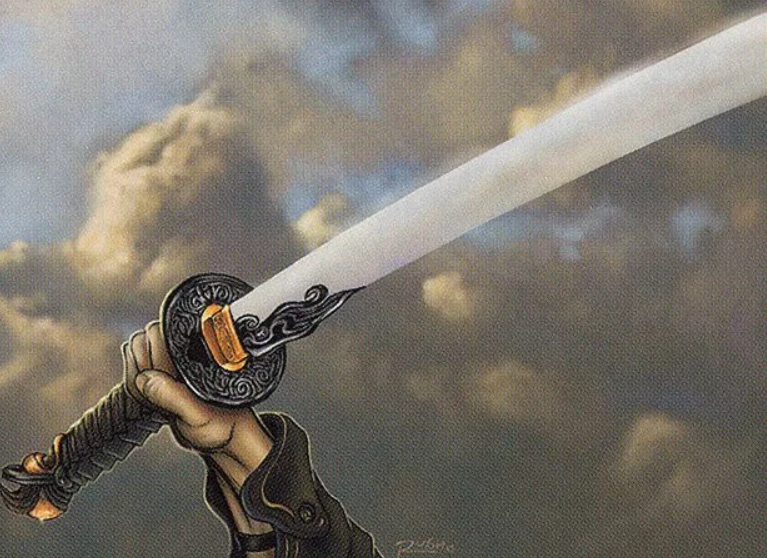
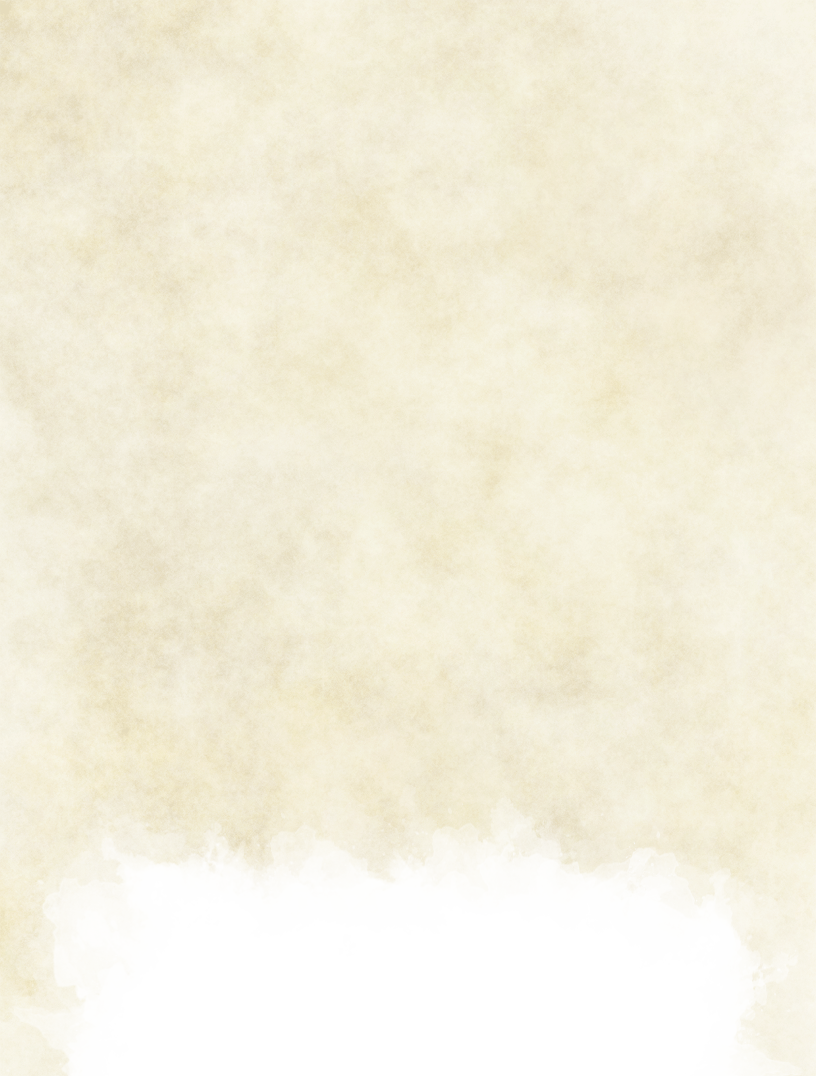
by the Portuguese in the 16th century, and they quickly became an important part of warfare. Though they were still worse in some ways, a firearm could be used to lethal effect by low-ranking soldiers without much training. Japan saw a boom in gun production and innovation.
Another difference is not every standard D&D weapon is available. Most have an equivalent or one that fills the same role in Japanese culture for damage type and die. However, the light hammer, greataxe, and whip don't make an appearance.
Others have been replaced. The morningstar is now the yoroi-dōshi, an armor-piercing sword. The shortsword is now the sai, a metal prong with two curved sideprongs. These weapons have situationally good effects at the cost of a lower damage die than their equivalents.
There are new weapons available too. The tessen is a Japanese war fan that provides a minor defensive bonus. The nunchaku is a pair of sticks connected by a short metal chain or rope in between.
Weapon Properties
There is one new weapon property related to firearms. There is also a few new weapons with special rules.
Dry. When using firearms, the firing mechanism may not function in wet weather. In light rain, a roll (before bonuses) of 1-2 does not fire. If this occurs, your Attack action ends and ammunition is not lost. In heavy rain or worse, a roll of 1-5 does not fire. The Gunner feat negates this penalty for light rain and reduces heavy rain or worse to a roll of 1-2.
Special Weapons
New weapons with special rules are described here.
Tessen. When not surprised, you may spend your reaction to gain +2 AC against one nonmagical ranged attack.
Yoroi-dōshi. When attacking a unit with heavy armor, add +2 to the attack roll.
Sai. You may take the Disarm action (DMG P.271). If already allowed, then you gain advantage on the attack roll.
Simple Weapons
| Name (Equivalent) | Cost | Damage | Weight | Properties | ||
|---|---|---|---|---|---|---|
| Simple Melee Weapons | ||||||
| Tonfa (Club) | 1 mm | 1d4 bludgeoning | 2 lb. | — | ||
| Tantō (Dagger) | 2 kb | 1d4 piercing | 1 lb. | Finesse, light | ||
| Kunai (Dagger) | 2 kb | 1d4 piercing | 1 lb. | Finesse, light, thrown (range 20/60) | ||
| Nyoibō (Greatclub) | 2 mm | 1d8 bludgeoning | 10 lb. | Two-handed | ||
| Ono (Handaxe) | 5 kb | 1d6 slashing | 2 lb. | Light, thrown (range 20/60) | ||
| Te-yari (Javelin) | 5 mm | 1d6 piercing | 1 lb. | Thrown (range 30/120) | ||
| Ararebo (Mace) | 5 kb | 1d6 bludgeoning | 4 lb. | — | ||
| Bō (Quarterstaff) | 2 mm | 1d6 bludgeoning | 4 lb. | Versatile (1d8) | ||
| Kama (Sickle) | 1 kb | 1d4 slashing | 2 lb. | Light | ||
| Su-yari (Spear) | 1 kb | 1d6 piercing | 3 lb. | Thrown (range 20/60), versatile (1d8) | ||
| Tessen | 2 kb | 1d4 bludgeoning | 2 lb. | Light, special | ||
| Simple Ranged Weapons | ||||||
| Tanegashima arquebus (Light Crossbow) |
25 kb | 1d10 piercing | 8 lb. | Ammunition (range 50/300), loading, two-handed, dry | ||
| Shuriken (Dart) | 5 mc | 1d4 piercing | 1/4 lb. | Finesse, thrown (range 20/60) | ||
| Hankyu (Shortbow) | 25 kb | 1d6 piercing | 2 lb. | Ammunition (range 80/320), two-handed | ||
| Inji (Sling) | 1 mm | 1d4 bludgeoning | — | Ammunition (range 30/120) |
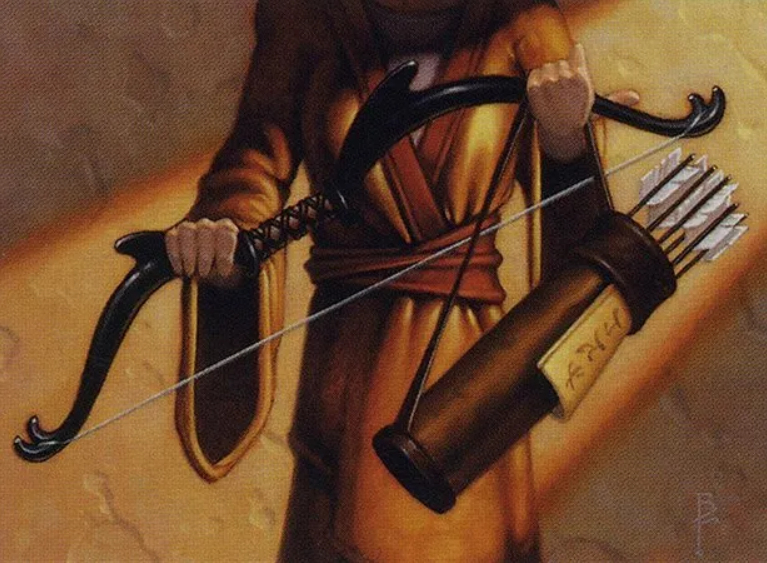

Greataxe Damage Variant
Since there is no 1d12 slashing damage weapon, you may choose to use a 1d12 damage die with the Ōdachi instead of its normal 2d6 dice.
Martial Weapons
| Name (Equivalent) | Cost | Damage | Weight | Properties | ||
|---|---|---|---|---|---|---|
| Martial Melee Weapons | ||||||
| War Ono (Battleaxe) | 10 kb | 1d8 slashing | 4 lb. | Versatile (1d10) | ||
| Chigiriki (Flail) | 10 kb | 1d8 bludgeoning | 2 lb. | — | ||
| Naginata (Glaive) | 20 kb | 1d10 slashing | 6 lb. | Heavy, reach, two-handed | ||
| Ōdachi (Greatsword) | 50 kb | 2d6 slashing | 6 lb. | Heavy, two-handed | ||
| Bisento (Halberd) | 20 kb | 1d10 slashing | 6 lb. | Heavy, reach, two-handed | ||
| Sankaku-yari (Lance) | 10 kb | 1d12 piercing | 6 lb. | Reach, special | ||
| Katana (Longsword) | 15 kb | 1d8 slashing | 3 lb. | Versatile (1d10) | ||
| Kanabō (Maul) | 10 kb | 2d6 bludgeoning | 10 lb. | Heavy, two-handed | ||
| Yoroi-dōshi (Morningstar) | 15 kb | 1d6 piercing | 4 lb. | Special | ||
| Nagae-yari (Pike) | 5 kb | 1d10 piercing | 18 lb. | Heavy, reach, two-handed | ||
| Tsurugi (Rapier) | 25 kb | 1d8 piercing | 2 lb. | Finesse | ||
| Wakizashi (Scimitar) | 25 kb | 1d6 slashing | 3 lb. | Finesse, light | ||
| Sai (Shortsword) | 10 kb | 1d4 piercing | 2 lb. | Finesse, light, special | ||
| Jūmonji-yari (Trident) | 5 kb | 1d6 piercing | 4 lb. | Thrown (range 20/60), versatile (1d8) | ||
| Tsuruhashi (War Pick) | 5 kb | 1d8 piercing | 2 lb. | — | ||
| Ōtsuchi (Warhammer) | 15 kb | 1d8 bludgeoning | 2 lb. | Versatile (1d10) | ||
| Nunchaku | 5 kb | 1d6 bludgeoning | 2 lb. | Finesse, light | ||
| Martial Ranged Weapons | ||||||
| Fukiya (Blowgun) | 10 kb | 1 piercing | 1 lb. | Ammunition (range 25/100), loading | ||
| Bajō-zutsu pistol (Hand Crossbow) |
75 kb | 1d8 piercing | 5 lb. | Ammunition (range 25/80), loading, dry | ||
| Hinawaju rifle (Heavy Crossbow) |
50 kb | 1d12 piercing | 8 lb. | Ammunition (range 75/360), loading, two-handed, dry | ||
| Yumi (Longbow) | 50 kb | 1d8 piercing | 2 lb. | Ammunition (range 150/600), heavy, two-handed | ||
| Net | 1 kb | — | 3 lb. | Special, thrown (range 5/15) |
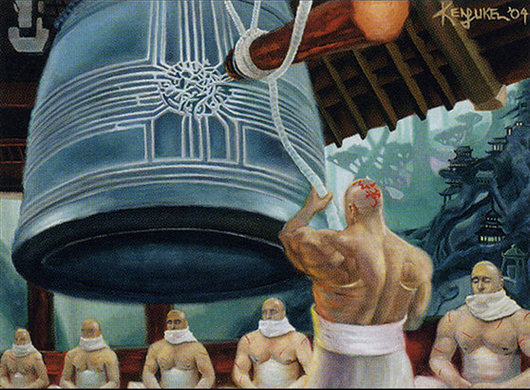

Tools
As a whole, the tools table could still be used in Kamigawa. While some of the kits have an odd item here or there for the setting and dragonchess might need to be called kamichess, they are good to go for the most part. If you do come across something odd in your game, bring it up with your DM.
However, there was one section that needed some work: musical instruments.
Musical Instruments
Kamigawa has Japanese instruments and music, which are quite different from the D&D standard. For one, there are no bagpipes. But more seriously, different instruments were important in Japanese theater. Noh and kabuki dominated during the samurai eras, with bunraku puppetry rising at the tail end. These used a characteristic flute note at the beginning of noh drama or the beat of a tsuzumi drum to emphasize an action, among many other distinguishing sounds.
To reflect these differences, a modified musical instruments table is provided. Leniency has been given to whether the instrument could be played in the middle of battle. A reliable source on the weights could not be found and were approximated instead.
Geared Up
After inspection, an overhaul of the adventuring gear table was not required. Only a few items, such as crossbow bolts, are truly out of place in Kamigawa. Instead, it's encouraged to simply reimagine how the item may look or call it by a different name. For example, makibishi are Japanese caltrops and have six or eight prongs.
Musical Instruments
| Item | Cost | Weight |
|---|---|---|
| Drum | ||
| Kakko | 15 kb | 10 lb. |
| Ko-daiko | 40 kb | 25 lb. |
| Tsuzumi | 10 kb | 5 lb. |
| String | ||
| Biwa | 35 kb | 10 lb. |
| Kokyū | 30 kb | 3 lb. |
| Koto | 50 kb | 15 lb. |
| Kugo | 30 kb | 10 lb. |
| Shamisen | 35 kb | 5 lb. |
| Flute | ||
| Hichiriki | 3 kb | — |
| Nohkan | 2 kb | — |
| Shakuhachi | 3 kb | 1 lb. |
| Shinobue | 2 kb | — |
Mounts & Vehicles
Horses are the only mounts available for purchase in Kamigawa. Oxen mounts will exist, but must be specially acquired. Japan used horses in work and warfare for centuries. Cards from the Kamigawa sets show horse and oxen cavalry. Kamigawa uses the same variation in horses as standard D&D. The draft, riding, and warhorse may be purchased as well as the pony.
There are two other animals available for purchase. These
are the Akita, a dog equivalent to a mastiff in terms of
companionship, and the draft ox.
These will not be mounts. Small
characters (i.e. Akki) may ride
ponies.
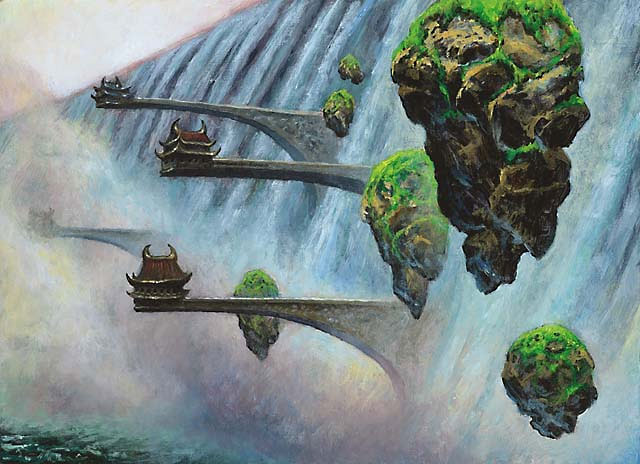

The giant moths of Kamigawa are a new unique flying mount. Pegasi, griffons, and hippogriffs do not exist in Kamigawa. There may be other flying mount options, but the moths will certainly be the most commonly seen. The moths are befriended by the samurai of Eiganjo and live in the surrounding Towabara plains. The riders and mounts treat each other as equals, as the moths are intelligent. The samurai presumably raise and ride their moths regularly. Some moths are shown not to have riders and are instead wild.
Moths will not be normally available for purchase for two reasons. One, they are either bred for military purposes or are wild. Two, they are intelligent and must be negotiated with or befriended before riding. Acquiring a moth mount entails a quest in it's own right and displays a level of achievement that few adventurers can match.
Mounts and Other Animals
| Item | Cost | Speed | Carrying Capacity |
|---|---|---|---|
| Mounts | |||
| Horse, riding | 75 kb | 60 ft. | 480 lb. |
| Pony (small size only) | 30 kb | 40 ft | 225 lb. |
| Warhorse | 400 kb | 60 ft | 540 lb. |
| Animals | |||
| Akita | 25 kb | 40 ft | 60 lb. |
| Horse, draft | 50 kb | 40 ft | 540 lb. |
| Ox, draft | 150 kb | 40 ft | 1080 lb. |
For tack, harness, and drawn vehicles, everything is available except the chariot. There is no evidence of chariots in Japan nor the Kamigawa cards.
For waterborne vehicles, four of the six ship types will be available. The galley and longship are the odd boats out. The explanation has a fare bit of context.
Japanese history doesn't have very much in the way of ocean-worthy waterborne vessels before the modern era. Japan did trade with other east Asian countries and went on sea-faring conquests into Korea before the 16th century. During this long stretch of time, Chinese-style junks of varying sizes were the waterborne vessels used. Coastal and fishing ships were likely common too, as some Japanese peoples like the Azumi were famous for their maritime expertise. Pirates, called wokou, raided between the 13th and 16th centuries as well.
The first Japanese ocean-worthy ships were Atakebune built in the 16th century, though they were rarely ever used on open ocean. Later, Europeans introduced shipwright techniques that led to hybrid designs in the early 17th century. These had similarities to galleons. However, this was short-lived as Japan went into a period of isolationism from the mid-17th to mid-19th centuries. When shipbuilding did resume, the Imperial Japanese Navy was formed about a decade after in 1868.
Kamigawa has virtually no waterborne vessels present in the cards. The sets do show water features, such as rivers, waterfalls, and a lake. These are connected to either spirits or Minamo Academy. There aren't any pirates nor animals. There is an ocean in the books. It's to the west and has Mikokoro, the "center of the sea" and mysterious shrine for
enlightenment.
While D&D can
be a land-only
adventure, it has
some options for water-
based ones for good reason.
To allow for this, some artistic
license is required. Kamigawa
will have bekabune and maruko-bune
represent the rowboat and keelboat, respectively.
A Chinese-style junk and the Atakebune will represent the ocean-worthy sailing ship and warship, respectively. The galley and longship are not in the setting.
Waterborne Vehicles
| Item | Cost | Speed |
|---|---|---|
| Maruko-bune (Keelboat) | 3,000 gp | 1 mph |
| Bekabune (Rowboat) | 50 gp | 1.5 mph |
| Junk (Sailing ship) | 10,000 gp | 2 mph |
| Atakebune (Warship) | 25,000 gp | 2.5 mph |
Trade Goods
Naturally, trade goods will be different in a Japanese-based setting than European-based one. Kamigawa is no different. Some examples of trade goods in Kamigawa are listed below. Since Kamigawa has more arable land (i.e. Towabara plains) than Japan historically did, some agricultural products will be more prevalent than in Japan. Kamigawa will, in general, follow the prices set in D&D rather than ancient Japan.
Trade Goods
| Cost | Goods | |
|---|---|---|
| 1 mc | 1 lb of rice | |
| 2 mc | 1 lb of soybeans or one chicken | |
| 5 mc | 1 lb of salt or 1 block of tofu | |
| 1 mm | 1 lb. of iron or 1 sq yd of hemp fabric | |
| 5 mm | 1 lb of copper or 1 sq yd of cotton cloth | |
| 1 kb | 1 lb of wasabi or sulfur | |
| 2 kb | 1 lb of ginseng, or one box of porcelain clay | |
| 3 kb | 1 lb of cloves or one pig | |
| 5 kb | 1 lb of silver or 1 sq yd of linen | |
| 10 kb | 1 sq yd of silk or one sumi ink stick | |
| 15 kb | 1 sq yd of tiger leather or one ox | |
| 50 kb | 1 lb of gold | |
| 500 kb | 1 lb of platinum |
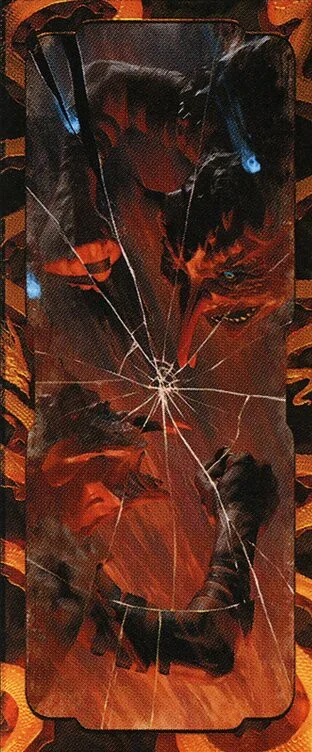


Appendix A: Non-Playable Races
The peoples of Kamigawa aren't limited to just the seven races described in Chapter 1. There are several other races that were explored and then excluded for one reason or another.
The strongest reason to exclude a race was balance. For example, the soratami can naturally fly, a trait well-known to break the balance of battles and places a lot of strain on the DM. Another exmaple, the oni are spirits that might become ethereal and pass through walls, an ability reserved for mid-level spells.
Another reason to exclude a race was the nature of their society's interaction with the other races. The orochi are the prime example of this. From a balance perspective, they could probably work, barring the four arms. However, the orochi do not interact with the other races on a meaningful level. They don't leave their forest and are generally xenophobic. Another good example is the ogres. They are antagonists in MTG lore and generally interact solely with violence. It would be better to keep them as such than try to change their nature. Instead, the half-ogres were created, similar to the half-orcs of D&D.
Some might ask why the akki, who are territorial and generally act poorly with other races, was included then. I could claim artistic license, but honestly I needed to have a race that mirrored some of the role played by halflings, dwarves, and gnomes. Kamigawa doesn't have anything like this, so the akki's agreeableness and the other race's tolerance for them was increased to achieve this.
Another reason to exclude a race was a lack of regularity in the creature's traits. This primarily applies to the Kami. They are closer to monsters and vary so widely that typical trait categories may not apply. They might have tens or even hundreds of subraces, so it doesn't make sense to make them a playable race.
Last, I want to repeat the idea that this book is not the final authority on what's possible. I made these decisions, but you don't have to follow them. If your D&D group wants to play orochi snakemen with four arms, do it. If you want to be a reformed ogre or one who joined the ronin of Sokenzan, do it. Homebrew it and have fun.
Soratami
The Soratami, or moonfolk, are an enigmatic and aloof race of flying mages. They claim to be descended from a moon myojin, one of the most powerful kami if it existed. Regardless of its truth, they have the ability to fly, an aptitude for magic, an unusual appearence, and capricious behavior. They are slim humanoids with blue-gray skin, white hair, and long ears wrapped over or around their heads. It is unknown how long they live, though it is at least a few centuries.
Enigmatic Observers
To the north of and above Lake Kamitaki, the soratami live in floating cities among the clouds. The soratami can naturally fly and spend most of their life watching the world. They are mostly indifferent to the concerns of surface folks. Some do
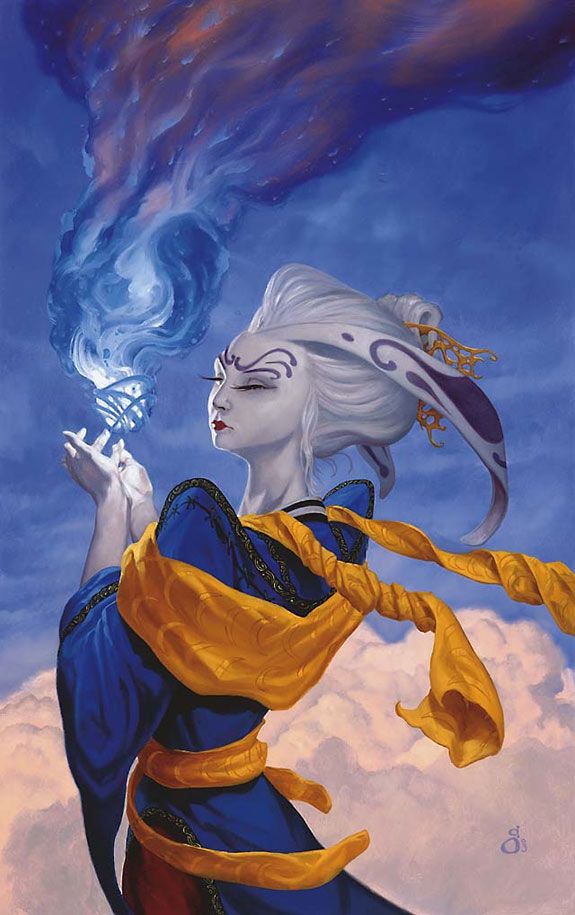

.
Fable of the Mirror-Breaker
Kiki-Jiki was a mischievous akki, exiled from his family group, who stumbled his way into a dragon's lair. Keiga, the Tide Star, met him and sent him on a mission to recover their stolen treasure. He was to break into the palace of Meloku, a powerful soratami mage, and steal it back. Kiki-Jiki did this and broke a magic mirror in the process, creating a reflection that inadvertently helped him escape. After his success, Keiga made him their apprentice.
not ever even go to the surface. Meanwhile, surface folk are not allowed within their cities without special permission.
Two places on the surface do entice interest from the soratami though. These are Minamo Academy and the Imperial palace. At the academy, magical research and an exchange program attract soratami. They may become students, professors, or both. In secret, they also enroll to retain control over the school and use it to pursue their own agendas. In the palace, both power and money in great quantities convince soratami advisors to lend their help to the Empire. These advisors are highly prized for their accurate assessments. Some nobles spend fortunes to learn political secrets or get life advice, knowing the investment may bear fruit for decades. Soratami may secretly manipulate them to achieve their own goals.
Flying Mages
Soratami culture emphasizes the study of magic,
producing some of the most learned mages in
Kamigawa. They specialize in evocation, transmutation,
and conjuration magics, especially those related to the
weather and mirrors. Minamo Academy, the center of
magic, technology, and research in Kamigawa, has some
sort of agreement with the soratami to exchange
wisdom for research. The soratami are more than happy
to oblige and visit often.
The soratami enjoy many intellectual pursuits as well.
They like debate and wordplay. They like solving puzzles
and complex problems. Cleverness comes naturally to
them. They will respect those that can keep up and
be delighted when they are pleasantly surprised, but are
often arrogant towards those that cannot maintain the
brisk pace their minds run at.
It's rumored that the soratami write histories of the world in secret as they watch from above, all to be catagorized in endless libraries. A person who gets their hands on even a fraction of this may learn more than all of Eiganjo together.
Orochi
The orochi are anthropomorphic four-armed snakefolk who inhabit the Jukai Forest. They are fearsome looking on the outside, but like most other races on the inside. Their warriors and scouts protect their territory. Their hunters and gatherers feed the villages. Their druids lead them in worship of the kami. If they could simply trust others, they would be part of the whole.
Forest Snakes
Almost all orochi live in the Jukai Forest. They are very territorial and attack trespassers without warning. They prevent human and kitsune expansion into the forest. This has gone on for centuries and remains a thorn in the Emperor's side. The only ones they allow to remain deep in the forest are the monks of Okina and Fudaiju. These are two temples that worship kami, a practice the orochi respect.
The orochi are divided into three main tribes. These are the Kashi, Matsu, and Sakura tribes. Kashi is the warrior tribe, focusing on close combat prowess. Matsu is the hunter tribe, focusing on ranged attacks and reconnaissance. Sakura
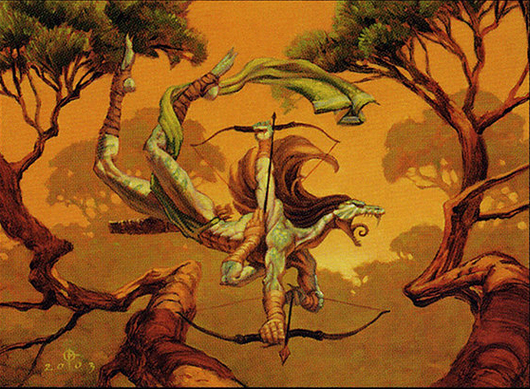

is the druid tribe, focusing on religious rituals and teachings. Combined, these tribes form the backbone of orochi society and promote their supremacy in the forest.
Kami Worshipers
The orochi revere the forest kami and seek to always live in harmony with them. They see the kami as expressions and extensions of the land itself. If the kami are out of balance, then the world is too. Orochi rituals seek to please the kami. They believe that the kami would drive them out of the forest should they become displeased or enraged. This is the orochi way, a way other races do not seem to understand very well. Thus, the orochi see themselves as necessary protectors and caretakers of the forest.
Orochi magic is based on this reverence for the kami and land. Their spells are tied to nature and the seasons. They have some of the best druids and rangers in Kamigawa. These blessings have been taken as a sign of approval from the kami. The orochi are very proud to serve them, to the point that refrain from worship or leaving the community would be considered a betrayal to the kami and thus the world. This philosophy is often projected onto other races to their detriment. However, the orochi have little interest in going out and forcing this philosophy on others. They'd much rather keep their home free of those that do not follow their ways.
Ogre
The ogres of Kamigawa, also known as o-bakemono, are considered the main villians of the material world by other races. They are not the stupid, lazy, hungry thugs of other D&D worlds, but intelligent and sadistic servants of evil.
Cunning Brutes
Ogres originated in the Sokenzan mountains. They are huge compared to the other races of Kamigawa. They stand between 8 and 9ft tall. They weigh upwards of 500lbs or more. Their bodies are very muscular and their faces fearsome. Inside their mouths are a mess of sharp teeth, with many ogres having long fangs sticking out due to an underbite. Their chins and jaws often have bony protusions. Some are hunched over and have an impossibly wide and bloated neck. Those that have made deals with or sacrifices to the oni may recieve further body alterations to increase their strength, durability, and ferocity.
While ogres may not be the innovators of technology or even literate, they are not stupid. They are politically savvy. They wage war often and know how to outmaneuver those who aren't familiar with battle. They use their large bodies and intimidating faces to their advantage. Beware underestimating an ogre, or it might be the last thing you do.
Oni Thralls
Before the oni seduced the ogres of the mountains, it was already in their nature to kill or dominate others. However, they were not truly evil yet. The oni played upon their instincts to turn them into what they are today. The oni encouraged murder and abuse. They offered the ogres supernatural power and strength in return for foul blood rites and sacrifices. The ogres desired this and became the oni's willing servants.
At the oni's call, the ogres moved from the mountains to Takenuma swamp north of them. Upon arrival, they pushed out the nezumi and human inhabitants through repeated raids on their settlements. The nezumi suffered the most, losing all villages living in the west part of the swamp. Today, the only large settlements left are in the east, nearer to the Towabara plains. These are the cities of Numai and Takenosu.
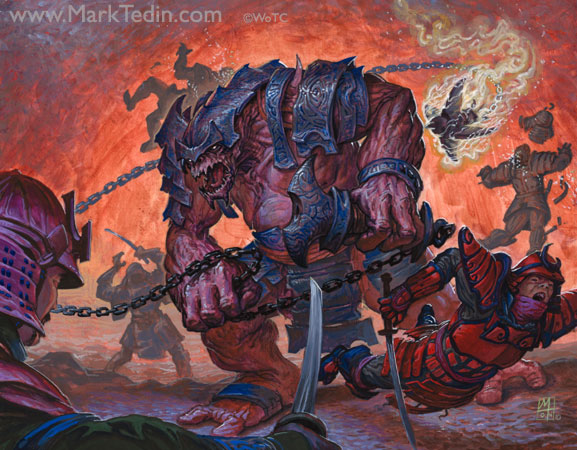

Hopeful Rejects
Though most of the ogre race has moved from Sokenzan
to Takenuma, there are a few who rejected the oni and
remained in the mountains. These ogres were cursed
and made outcasts by their brethren. Some live in caves
or small communities. Some have joined with the ronin
and bandits living in the mountains. Godo, the bandit
warlord, commands their fear and respect despite
his human heritage.
The ogres who rejected the oni did so for one
reason. They wanted to achieve in their lives through
their own strength and power, not through some
demon's. This hint at honor and independence is what
draws many to believe there is some hope for the ogre
race, though it is still undercut by the brutal "might
makes right" philosophy the mountain ogres continue to
live by. Outside of those ogres that follow Godo, you'd
be hard-pressed to find an ogre that follows any sense
of order.
Oni
If the ogres are the villians of the material world, the
oni are the villians of the spirit world. They are demon
kami, chaotic evil incarnate, and want to devour both
worlds.
Demonic Masters
The oni are infamous for their authority over the ogres. They often send them on raids to kidnap people for sacrifice. The oni gain power by feeding on the spirits of living sentient beings, and they will go to any length to achieve this. They make promises of power and strength to the ogres in exchange for performing these heinous blood rites. These deals are real and cause a great deal of death and destruction in the world.
Besides the ogres, some peoples and their children have been forever changed by the oni, becoming oni-touched. These are often dangerous and costly deals, even when the seeker achieves their goal. The oni may manipulate the situation, force an unforgivable act, or bide their time and use the solicitor at a later date.
Spirit Prisoners
Most oni are actually limited by the greater kami in what they can affect in the material world. Long ago, the Kyodai locked away the oni in spritual prisons. Cut off from the mortal realm and unable to feed freely, their power dwindled and mortals could spread freely across the world.
The oni long to be free once again. Everything the oni do is an attempt to enter the material world, a ripe feeding ground. Several kami help to hold up a barrier between the material & spirit worlds and maintain balance to prevent such a calamity from occurring.
The oni that have been freed or escaped share common physical traits. They all have a third eye on their foreheads and horns coming from their heads. Many are large, ugly, and muscular. They inspire fear at a base level, causing normal people to run on sight. They have the ability to possess mortals who agree to it. The ogres give their bodies willingly to the oni for this, believing it will empower them.
Kami
The kami are spirits associated with anything and everything in the world of Kamigawa. They are the most powerful forces in the world and come in an overwhemling variety of forms.
Spirits of the World
Most kami remain in the spirit world, unseen and unfelt by the ordinary. When a kami manifests into the material world though, they are somewhat unstable and create strange energy objects around them. They appear bizarre and out of place, usually looking impossible or unrealistic according to the natural laws that normally affect the material plane. Their brand of magic works mysterious and often beyond that which mortals conceive or control.
The kamis' power is real and can affect the real world. When enraged, a kami may harm others or destroy the environment around them. Mortals who don't know what they're doing should be careful when dealing with them, perhaps avoiding them altogether. If one does have a kami problem, it's best to seek out a cleric at one of the kami-worshipping temples dotting the landscape of Kamigawa.
Expression Incarnate
A kami's form and its powers often reflect their environments or the essence of living things around them. A kami of the hunt may have bestial speed and a fearsome maw to run
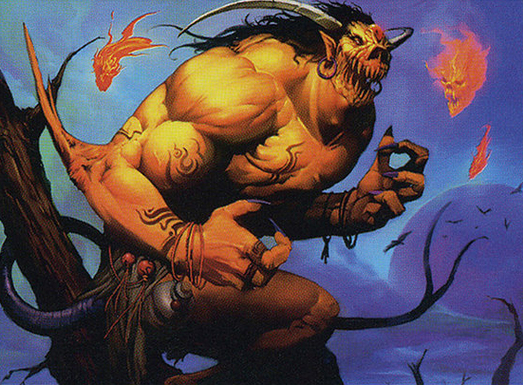
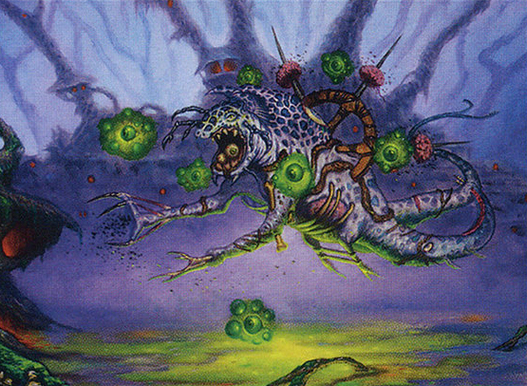

down prey. A latern kami may be made up of a myriad of lights in all directions. Kami can come from the spirits of those who've died as well. The tale of Kaiso tells the story of a faithful squire killed in action, only to return to their master's side in battle as the memory of loyalty.
Defenders of Balance
There are several greater kami in the material world that help maintain balance and prevent the material and spirit worlds from colliding or collapsing. These greater kami include the Kyodai, O-Kagachi, the five dragon-kami, and the five myojin.
The Kyodai is the worldsoul, a strange-looking dragon spirit who imprisoned the oni long ago. O-Kagachi is the oldest and mightiest kami and maintains the boundary between the spirit and material worlds. O-Kagachi is the embodiment of the world and appears dragon-like with many heads. The Kyodai and O-Kagachi are the same being; soul and body, separate but one.
The five dragon-kami are spirits that take the form of an Eastern-style dragon. These are Yosei, Keiga, Kokusho, Ryusei, and Jugan. Each one has pledged to protect mortals at a different place of significance. Yosei, the Morning Star, is the guardian of Eiganjo in the Towabara plains. Keiga, the Tide Star, is the guardian of Minamo Academy at Lake
Kamitaki. Kokusho, the Evening Star, is the guardian of an unknown location in the Takenuma swamp. Ryusei, the Falling Star, is the guardian of the Tendo Peaks in the Sokenzan Mountains. Jugan, the Rising Star, is the guardian of Boseiju in the Jukai Forest. These dragons are very powerful and worshipped by many. Clerics and monks create shrines and keep temples to them. Dragonsworn even pledge their lives.
The five myojin are the greater kami spirits of the different lands in Kamigawa. They encompass all aspects of that land and express a fundamental force in the world. These forces are justice, knowledge, power, passion, and creation. In a way, other kami are not lesser expressions, but specific partial expressions of the myojin. The Myojin of Cleansing Fire is the expression of justice and resides in the Towabara plains. The Myojin of Seeing Winds is the expression of knowledge and resides in Lake Kamitaki. The Myojin of Night's Reach is the expression of power and resides in the Takenuma swamp. The Myojin of Infinite Rage is the expression of passion and resides in the Sokenzan mountains. The Myojin of Life's Web is the expression of creation and resides in the Jukai forest. These kami are extremely powerful and worshipped by many. Druids, rangers, clerics, and monks follow their ways and receive their blessings. Kamisworn pledge their lives.
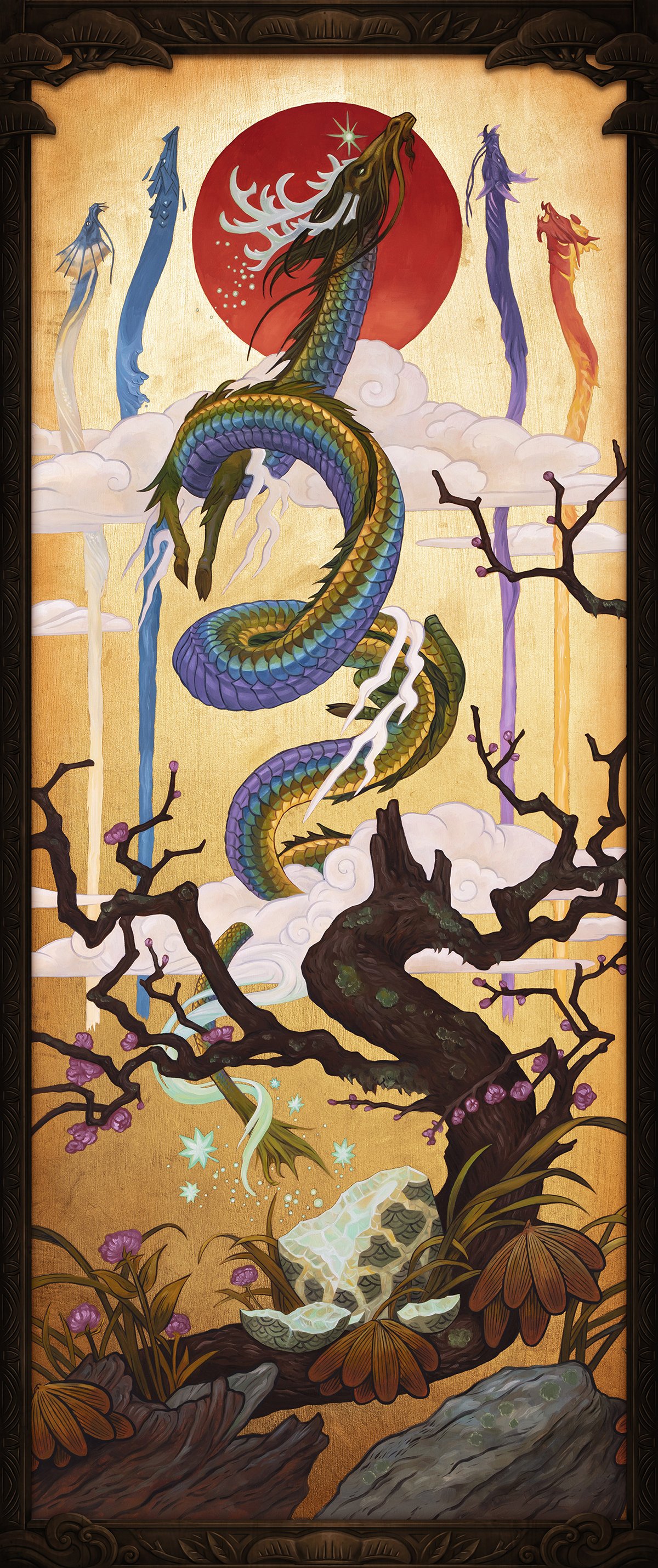
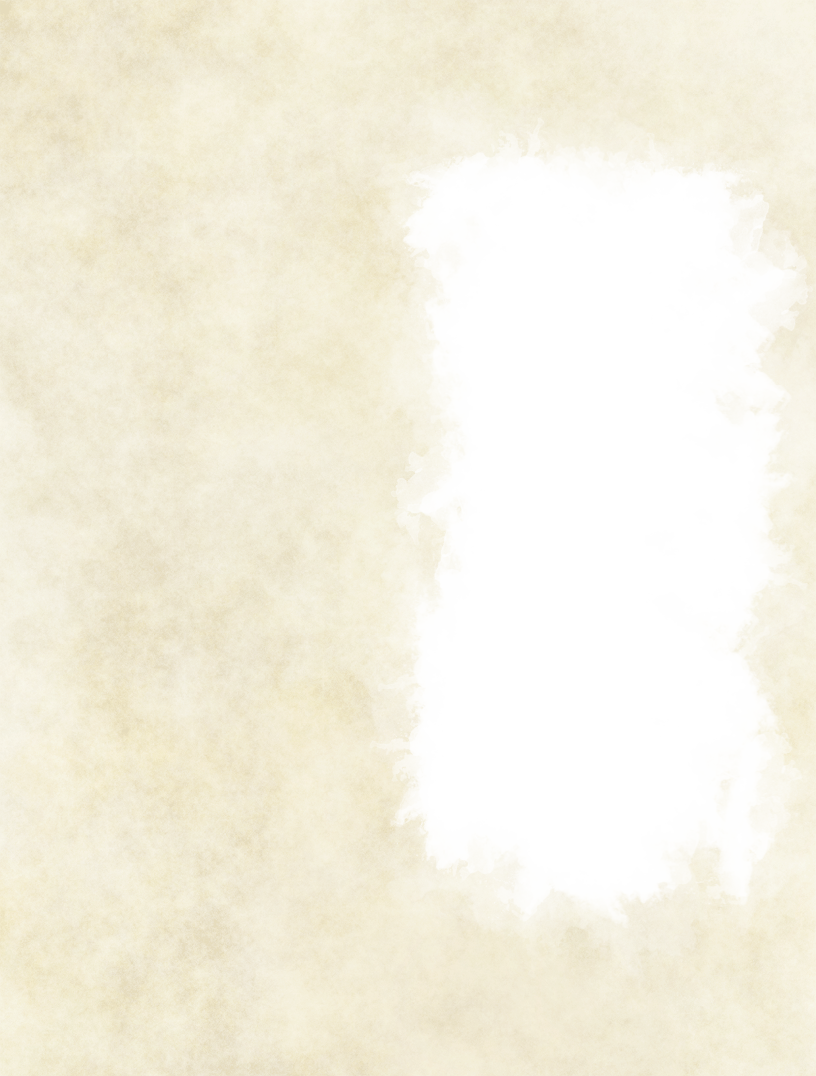
Appendix B: Deities of Kamigawa
The plane of Kamigawa is home to many powerful spirits that fall under the category of deity in D&D. The greater kami are greater deities, powerful and commanding respect of other kami, though they would lack the raw numbers of worshippers required due to kamigawa's relatively small scale compared to other settings. The Kyodai and O-kagachi could be considered an overdeity even, as they aren't worshiped but hold immense power. The lesser kami are lesser deities with a focus on their specific expression of the world.
Some kami deities were listed with relevant classes. For clerics and paladins, the two groups of five greater kami are listed. For warlocks, many lesser kami are listed. Druids and rangers may devote themselves to either or neither.
Some deities haven't been mentioned. For example, the kodama are tree spirits in the Jukai forest with large shrines. A cleric or druid may want to choose one of these kami to devote themselves to.
There is one important difference between D&D deities and the kami deities of Kamigawa. The power of many D&D deities increases and decreases based on the number of worshipers they have. This is not exactly the same in Kamigawa. Kami deities do not need worshipers and would exist without them. Instead, their powers are based on the strength of what they are expressing. This can be affected by the material world, though does not have to be. For example, some people's spirits turn into kami after death because they had a great conviction in their life.
This appendix gives more information on the kami in Kamigawa, their stories, and what kind of deity they may be.
The Worldsoul
The Kyodai and O-kagachi are expressions of the world itself, body and soul. All kami are a part of them and they are a part of all kami. They are not worshiped, and not many know of their existence. They could be considered an overdeity, an entity beyond the understanding of mortals and care nothing for worshipers.
O-kagachi is the kami of the barrier between the material and spirit worlds. He is more powerful on his own than any other kami. He is not a leader and does not command the kami, but his emotions influence them like a parent on their child. The Kyodai is the essence of divinity. She is not powerful in a physical sense, but is part of all kami and gives them their otherworldly powers. The Kyodai and O-kagachi are parent and child, together and at odds, seperate but one.
The Kami War
In Magic: The Gathering lore, the Kyodai was stolen and imprisoned by the emperor of Eiganjo to make himself immortal and prescient. This started the Kami War, a twenty-year conflict between enraged spirits and defiant mortals. When the Kyodai was finally released, O-kagachi awoke and came to the material world to "rescue" the Kyodai by consuming her. In the process, he caused massive destruction and killed several greater kami.
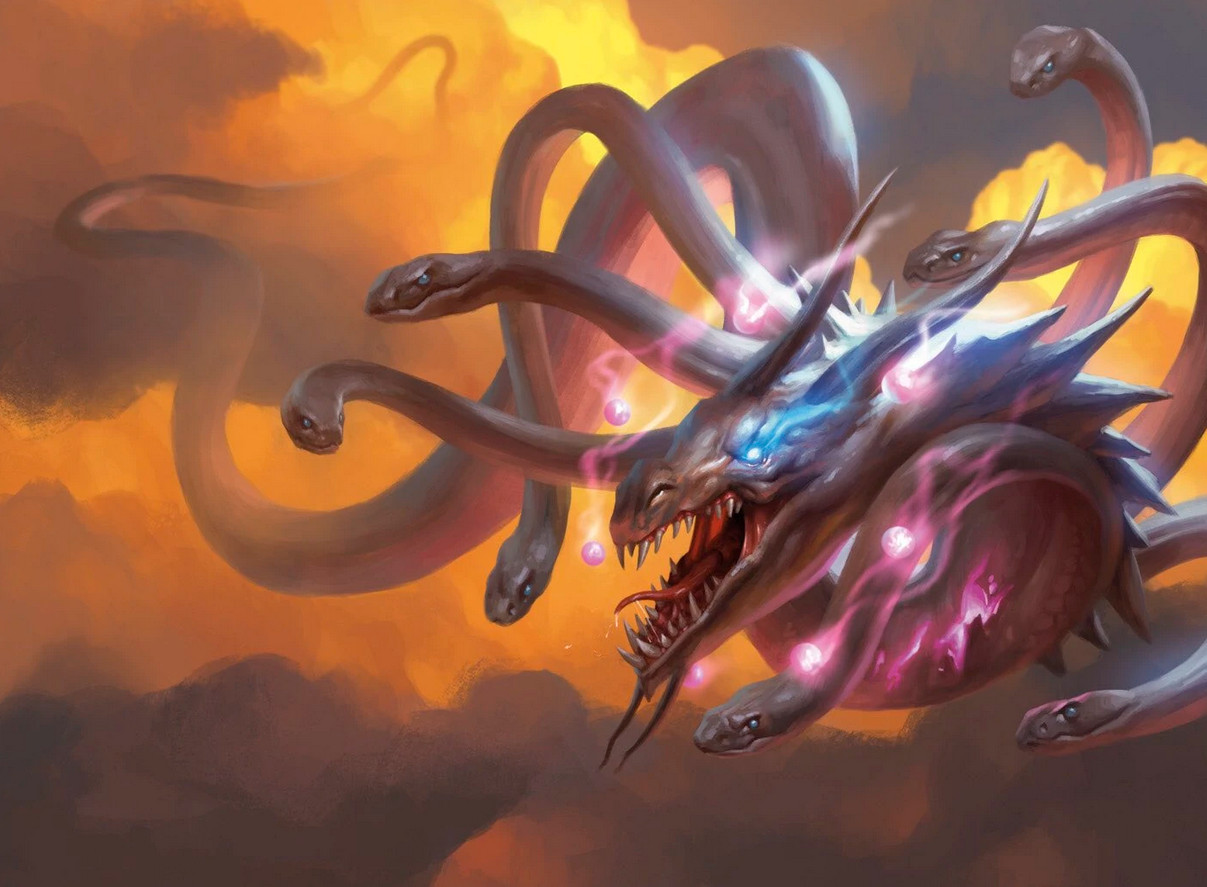

Before this, the emperor's daughter Michiko was born at the moment the Kyodai was stolen. She grew up in a world of strife and came to resent her father. Twenty years later, she released the Kyodai in an attempt to end the conflict. The Kyodai, searching to anchor itself as an expression of something, latched onto Michiko. This bond gave the Kyodai and Michiko the power to defeat their fathers, the emperor and O-kagachi. The two, now called the sisters of flesh and spirit, restored the world and became guardians of the barrier.
Many other events happened during this time, some world-changing. For example, three of the five dragon-kami perished in the Kami War. As you may have figured out, the Kamigawa setting given in this handbook is pre-Kami War.
Greater Kami
There are two groups of five greater kami widely worshiped across Kamigawa. These are the myojin and dragon-kami. There is also the Boseiju spirit and greatest oni that rank as greater deities, though they are not part of these two groups.
Myojin
Myojin are the greatest of the kami in the material world. Each represents one of the five fundamental force and biomes of Kamigawa. They are widely worshiped by the general populations.
Myojin of Cleansing Fire
The Myojin of Cleansing Fire is the expression of justice and resides in the Towabara plains. It seeks to achieve peace through morality and order. The ideals of goodness, fairness, uniformity, and community fall into its portfolio. It's associated with the elements of light, life, and fire. It manifests as a white-robed noble holding an orb and with six swords behind its back like wings.
Adherents of the Cleansing Fire seek
to create a better world by service
to others. They can be militant
or not, though all respect
law and order. Some protect the community by waging war against evil or becoming guardians. Some try to comfort and provide for the community through charity. Some organize the community through law and leadership.
Myojin of Seeing Winds
The Myojin of Seeing Winds is the expression of knowledge and resides in Lake Kamitaki. It seeks to achieve perfection through knowledge. The ideals of discovery, creativity, and logic fall into its portfolio. It's associated with the elements of air, water, and the arcane. It manifests as a three-armed man flying through the air on a tornado of ribbons with his face hidden behind a horned helmet and long blond hair.
Adherents of the Seeing Winds desire to know the world's secrets and make possibility into reality. They consider existence to be self-determined and life to be defined by one's choices and experiences. They research or seek knowledge throughout the world. They may be evil or not, depending on their approach to learning.
Myojin of Night's Reach
The Myojin of Night's Reach is the expression of power and resides in the Takenuma swamp. It seeks power through ruthlessness or opportunity. The ideals of greed, ambition, might, and domination fall into its portfolio. It's associated with the elements of darkness, water, and death. It meanifests as a floating beautiful woman with long black hair and robes, but also with lots of disgusting gray-skinned, long-nailed hands coming out from under the robes.
Adherents of the Night's Reach selfishly act to increase their own power in the world. At its extreme, the philosophy of this myojin is that its own interests and ego are so invaluable, subjecting itself to anyone else is unthinkable.
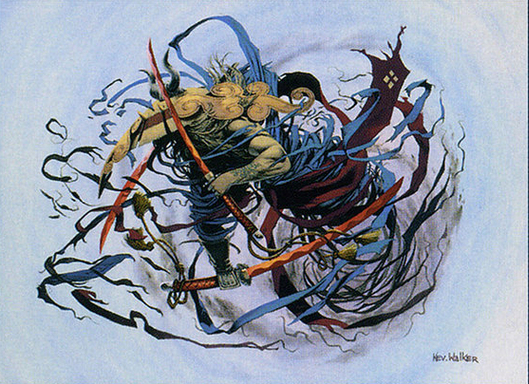

Thus, power is the only measure that matters, and the weak are simply slaves to the powerful. Adherents become evil to accumulate power and cannot understand another way.
Myojin of Infinite Rage
The Myojin of Infinite Rage is the expression of passion and resides in the Sokenzan mountains. It seeks freedom through action. The ideals of chaos, pain, retribution, change, and freedom fall into its portfolio. It's associated with the elements of fire, air, and lightning. It manifests as a wild warrior with many arms and weapons in a ring of fire.
Adherents of the Infinite Rage follow their passions,
whatever they may be and not matter how
detrimental they are. They
put their all into their
next project, going to
extraordinary
lengths sometimes.
They rarely respect
authority and are
irritated by imposed
order. Many are
rebellious, in one
way or another. Some
may be evil, though
they don't have to be.
Myojin of
Life's Web
The Myojin of Life's
Web is the expression
of creation and resides
in the Jukai forest. It
seeks harmony through
growth and wisdom.
The ideals of life, beauty,
balance, and instinct
fall into its portfolio.
It's associated with the
elements of life, earth,
and nature. It manifests
as a wooden, woman-
faced figure with vines
and leaves making up
her body.
Adherents of the Life's
Web believe it is best to let
nature take its course and
give up a sense of control.
Planar Crossings
The Myojin of Night's Reach played a larger role in the Kami War than the other myojin. It found the barrier between the material and spirit worlds was weakened by O-kagachi's manifestation, and it could pass through to other planes. This interested the myojin greatly, so it sought to prolong the war. However, it entrusted this mission to the very force that helped end the war, Toshiro Umezawa. He helped free the Kyodai with Princess Michiko.
They seek to grow by accepting the world as it is, without desiring to change it. Fate and instinct are important ideas towards finding peace. Being in harmony with one's surroundings, whether its a wild forest or a civilized community, will give one their best life. Violence is a last resort.
Dragon-Kami
The five dragon-kami are powerful spirits sworn to protect mortals at five significant places in Kamigawa. They are not as strong as the myojin, but are independent and still dwarf many other kami in terms of power.
Yosei, the Morning Star
Yosei, the Morning Star, is the
guardian of Eiganjo in the
Towabara plains. He has pledged
himself to the humans that
inhabit the city and can be
summoned by the emperor.
Those that follow Yosei
take oaths to protect
humanity from evil and
serve society. They may be
guardians of the city,
samurai deputies,
lawyers, bureaucrats, or
even crusaders.
Keiga, the Tide
Star
Keiga, the Tide Star,
is the guardian of
Minamo Academy at
Lake Kamitaki. They
have pledged to
defending the school as
a place of education and
can be summoned by the
academy director.
Those that follow Keiga
take oaths to seek
knowledge and spread it to
others. They may be
researchers, teachers, or
wizards. Keiga is relatively
inactive though and rarely
takes on apprentices.
Kokusho, the
Evening Star
Kokusho, the Evening Star, is the
guardian of an unknown location in
the Takenuma swamp. She is quite mysterious and her pledge is unknown. Some believe she may not have a pledge anymore as she did not defend the swamp against ogre incursions centuries ago. Her adherents, if any exist, are similarly mysterious and unknown.
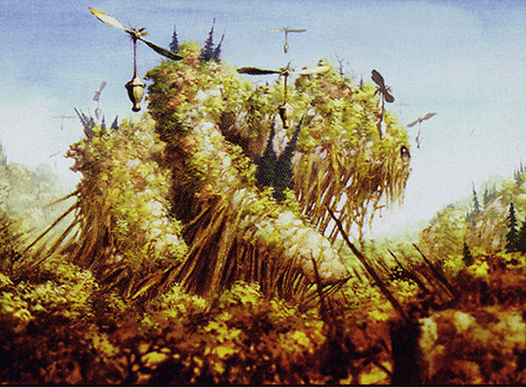

Ryusei, the Falling Star
Ryusei, the Falling Star, is the guardian of the Tendo Peaks in the Sokenzan Mountains. He has pledged to defend the freedom of the mountain inhabitants. It's unknown who's call he would answer should he be summoned. Some think that the yamabushi Kumano might be the one though.
Those that follow Ryusei would devote themselves to defending the freedoms of others, even from recognized authorities or the law itself. They could be rebels or protectors. However, it's unknown whether there are any adherents though as Ryusei stays high in the Tendo peaks, far away from civilization.
Jugan, the Rising Star
Jugan, the Rising Star, is the guardian of Jukai Forest and Boseiju, the tree which is inhabited by the spirit of the forest. He has pledged to defend the denizens of the forest and those that seek its shelter. The orochi especially admire Jugan. Either their druid leaders or perhaps one of the kitsune village elders could summon him. The human monks at either Okina or Fudaiju could summon him too.
Those that follow Jugan devote themselves to nature and balance. Some become hermits or hunters that take care of wild places. They take only what they need and give back in due course. Many work towards simple happiness in the community. A few promote environmentalism. Regardless of where they express themselves, their ultimate goal is always peaceful coexistence with that which is around them.
Boseiju
The Boseiju is the oldest and largest of trees in the Jukai Forest. It's spirit is the kami of the forest itself. It has great power, though little will to use it for direct confrontation. It's power truly lies in nurturing others. The forest grows strong because of it. The Boseiju relies on other kami of the forest, like the kodama or Jugen, to defend it.
The Okina temple is located near the Boseiju.
It is the oldest shrine within Jukai. A legion
of monks live there in quiet reverence.
Though almost all of them are human, the emperor holds little power this deep into the forest. They would only answer the call of the kami, if asked. They are also the only people to have had any meaningful diplomacy with the Orochi.
The All-Consuming Oni of Chaos
The most powerful, ravenous, and craven demon is the one called the all-consuming oni of chaos. It manifests as black clouds or mist full of gnashing mouths. Its visage still has the characteristic horns and three eyes of all oni. The ogres have long fed it in return for vile powers. It's so old in fact that its shrine resides in the Sokenzan mountains from when the ogres were first tempted by demons. If released, it would try to consume the world, causing widespread death and decay.
During the Kami War, the oni was released and challenged O-kagachi. However, it was quickly defeated and ran away like the coward it is. Its ogre shaman, Hidetsugu, was greatly displeased by this. He forced Toshiro Umezawa to transport him into the oni's shrine, where he planned to make the oni suffer. What emerged though was some combination of the two. Hidetsugu had consumed the great oni himself and now embodied chaos and hunger. He wreaked havoc for a short time until the Sisters of Flesh and Spirit imprisoned him in the spirit realm.
Intermediate Kami
Outside of the greater kami, several others play a larger role in Kamigawa than the generic spirit. They have more power and independence than the average kami, though not as much as the greater kami. They are still held in high regard by the general population, and they garner more worshipers and offerings for it.
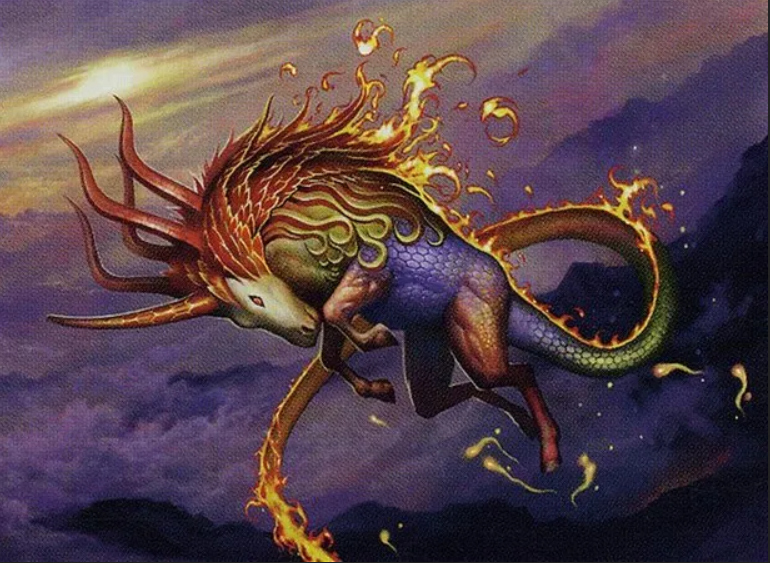

The Kodama of Seasons
Besides Boseiju, there are five other powerful tree kami, or kodama, in the Jukai forest. They represent the seasons and a different aspect of forest life. They are located by the four cardinal directions.
The Kodama of the Center Tree is the oldest of the tree kami. It is the tree of all seasons and values the history of the forest. Thus, it knows more about Jukai than any other forest kami. This kodama either hides or avoids others. Many have gone searching, but no one claims to have found it.
The Kodama of the East Tree represents spring. It values growth and uses its influence to expand the forest. The tree spirit's personality is impulsive and lively, like a fey prankster might be. Fudaiju, one of the two big monk shrines in Jukai, is located near this tree.
The Kodama of the South Tree represents summer. It values community and uses its power to care for the forest. The tree spirit's personality is like that of a strict mother. It wants everyone to follow the rules, be safe, and be happy.
The Kodama of the West Tree represents fall. It values the hunt and holds a "survival of the fittest" attitude. The tree spirit's personality is gloomy and feral, ready to lash out or kill trespassers and fools.
The Kodama of the North Tree represents winter. It values survival and wants to be left alone. If provoked, it will strike with deadly force to retake its isolation.
Patron Kami
Five sentient species in Kamigawa have a kami representing their collective consciousness. These are the akki, kitsune, moonfolk, nezumi, and orochi. These kami were prayed to for guidance and given offerings for blessings. A few people are said to have had audiences with their patron kami, such as the kitsune elder Eight-and-a-Half-Tails.
It's unclear if a patron of the humans or ogres exist. The patron of the Towabara plains, Terashi, may be the patron of the humans who inhabit it. The ogres may have lost or even fed their patron to their oni masters, or perhaps their patron became an oni. Unfortunately, the kami are too enigmatic to confirm such theories.
The Kirin
The Kirin are a group of kami who travel mortal lands and discuss their experiences with each other every 1000 years. They manifest as hybrid beasts with aspects of horses, dragons, deers, and goats. They can change shape to appear humanoid. They are praised and given offerings when sighted, as their appearance is an omen of good fortune and long life.
Kirin can express the five colors of mana. For example, the infernal kirin Scale is of black mana and sometimes travels as a disease called the weeping plague.
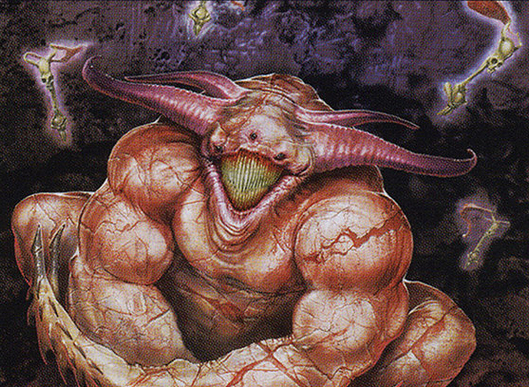

Kuro, Pitlord
Kuro the Pitlord is an oni overlord with many minions. His influence in the world is larger than the average oni. He's proven to be clever in his deals with mortals. His most tempting offer is also the most simple; eternal life for eternal service.
He is most famous for being master of Ink-Eyes, the most feared ninja in Takenuma swamp. She is a sociopathic nezumi, left in the swamp to die by her clan and raised by an abusive ogre named Muzan instead. When older, she killed Muzan and offered his blood to Kuro. The oni was expectantly pleased with this treachery and gave Ink-Eyes necromantic powers. She can now enslave the spirits of those she kills to serve Kuro's dark purposes. As punishment to Muzan, Kuro then resurrected the ogre to serve Ink-Eyes as her apprentice.
Lesser Kami
There are a menagerie of lesser kami with narrow portfolios and epitomize the power of what they expression. Their powers, number of worshipers (if any), and blessings vary widely.
Subclassifications
Though no two are exactly the same, some kami can be grouped together based on their features or powers. A good example of this is the oni. The general population of Kamigawa would learn about them growing up and have a general idea of where they reside. A table of kami subclassifications is provided.
Most kami are of lesser deity or lower status and power level. In fact, they may even be akin to spirit monsters in a standard D&D setting. However, kami shouldn't be taken lightly as typical natural law does not necessarily apply.
Unique Kami
There are many unique kami of significant power known to scholars and the informed. Records of these kami may exist in libraries or other places of knowledge.
These kami are most likely to be a cult idol or the patron of a warlock. They may have remarkable power in their domain, but typically lack authority outside of it or
independence from some condition of that
power.
The unique kami and a short description is
listed in alphabetical order.
Adamaro, First to Desire
The spirit of a famous mortal warrior that became
consumed by his anger and envy towards others.
As a kami, this pain and anger is a perfected
expression. His gaze can cause destruction like
a laser beam.
Akuta, Born of Ash
A giant millipede-like kami of fire, ash, and ruin.
It has a huge jaw, eating its way through the
fields it traverses. It has volcano-like spouts on
its back that shooting fire and ash out.
Arashi, the Sky Asunder
The kami of monsoons and typhoons. It manifests as black thunder clouds. Its manifestation always brings shinen in the form of storms.
Ayumi, the Last Visitor
A kami of reclamation, appearing as a dryad-like spirit with antlers and vines for hands. She brings nature back to abandoned places, though sometimes causing their abandonment in the first place. She is very old and acts as a dutiful, calm scribe of the ages.
Azamuki, Treachery Incarnate
A kami of betrayal who inhabits mortals with treacherous thoughts, waiting for their evil action to occur. It then takes control of the mortal, like an oni possession, and transforms them into a monster. It appears as a headless humanoid with a giant face on their torso and mouth instead of belly.
Chisei, Heart of Oceans
A kami of intellengence who rewards others for finding patterns in thoughts. He appears as a kneeling, contemplative man with water coming out of his head into an invisible bowl. The water spills out and floats around. Its then collected by pitchers that pour the water back into the bowl.
Hikari, Twilight Guardian
A kami that appears as a monstrous samurai who flickers in and out at twilight. Normally, it is a separator of day and night. During the kami war, it brought destruction at dusk, and the emperor's forces lost many to it.
Hokori, Dust Drinker
A flying worm-like kami made of whirling dust. It brings droughts and covers the land in dust. It has many titles, including the swirling storm and searing wind.
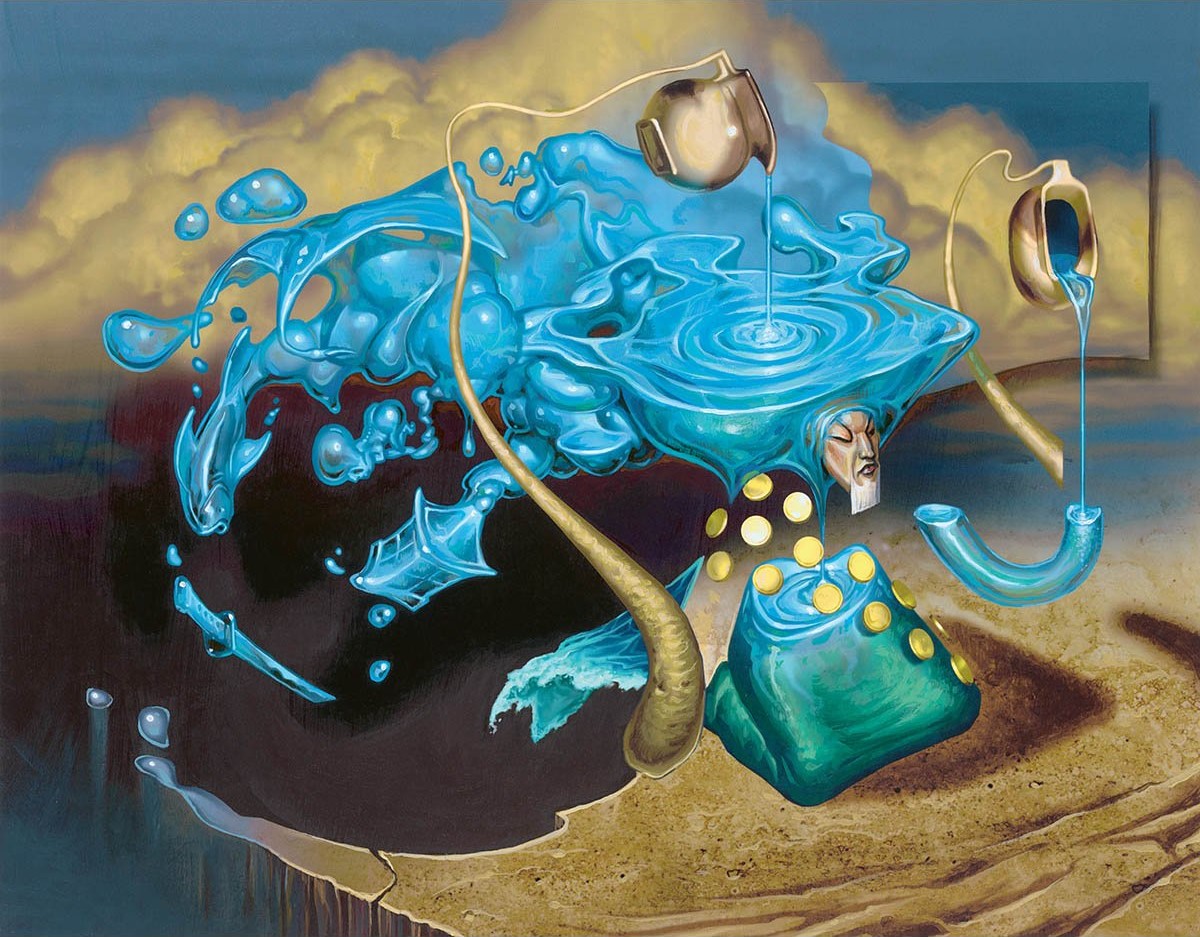

Divine River
One japanese to english translation of the word kamigawa is divine river. However, its namesake isn't on the map. There are three rivers that run through Kamigawa; the Yumegawa, the Akagi, and the river in Kawabe province.
Horobi, Death's Wail
A sorrowful spirit born from the massacre of Reito city
during the Kami War. It's haunting wail can still be
heard by those in the midst of mass death.
Ichiga, Who Topples Oaks
A mighty forest kami who grows in the body of a simple
monk. It appears as the upper half of a large muscular
cyclops with tattoos on blue-gray skin.
Ichikawa, Great River
The spirit of Yumegawa river, the largest and longest in
Kamigawa. It is associated with Minamo Academy and
its wizards, though it is not its defender.
Iname, Aspect of Life and Death
A kami expressing the cycle of life and death. When
expressing life, she brings new growth and rejoices. When
expressing death, she cuts life short and laughs in glee. She chases the pleasure she gets from each, flipping between them. She appears as a skeletal siren with wings.
Kami Subclassifications
| Classification | Location | Description | |
|---|---|---|---|
| Akuba | Forest, Swamp, Waterways | A hag-like spirit inhabiting dark, secluded places. They have three arms and snake-like features, including fangs and a long multi-forked tongue. Typically evil. | |
| Baku | — | Lion-like spirits with bodies made up of items. Believed to eat the nightmares of children. Typically good. | |
| Bunrei | — | Spirits made from the splitting of another spirit. The number of bunrei created from a spirit is unpredictable. | |
| Deceivers | — | Evil spirits of knowledge that use illusion magic and lies to entice mortals into traps. | |
| Genju | — | Spirits of the land. They may animate the places they inhabit when they feel their home is threatened. | |
| Ghost-lit | — | Spirits of pilgrims who never made it to their destination and are still wandering in the afterlife. They carry a paper lantern and wear conical hats, called kasa, to hide their faces. | |
| Go-shintai | — | Physical objects at places of worship that become inhabited by spirits. | |
| Goryo | — | Vengeful spirits of mortals who died in wretched circumstances, especially martyrdom. | |
| Kaijin | Waterways | Spirits of water. | |
| Kirin | — | Chimeric spirits with features of horses, dragons, deer, or goats. Intelligent and sentient. Regarded as an omen of good fortune and long life, though not all are good. | |
| Kodama | Forest, Swamp | Spirits of trees. | |
| Oni | Mountain, Swamp | Spirits of chaotic evil. Insatiable, sadistic, cowardly, wretched demons who feed on the spirits of sentient beings. They always have horns on their head and three eyes. | |
| Onna | — | Spirits who take on the visage of a beautiful woman. Often interacts with mortals in odd ways, inadvertently or intentionally bringing ruin to them. | |
| Shinen | — | Flares of spiritual energy, sometimes taking shape into an independent spirit, and harbingers of another spirit manifesting into the material world. | |
| Zubera | Shrines | Faceless humanoid spirits of mortals forcibly pulled into the spirit world. May attack passersby to steal their face. |
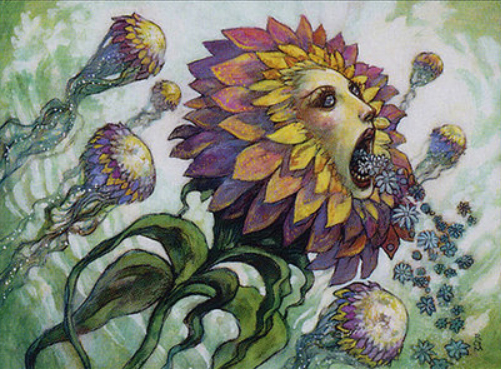

Jaraku, the Interloper
A kami of manipulations that resides in a simple wizard, waiting to cause trouble. She appears as a centaur-like puppet made of wood with a huge bow for a hand and an eye on the side.
Jiwari, the Earth Aflame
The kami of earthquakes. It manifests as a large worm made of earth with a giant maw. It has many tentacles on its head, each with an eye at the end of it. Its manifestation always brings shinen in the form of fireballs.
Kagemaro, First to Suffer
The first human to become an oni in the afterlife through evil deeds. It appears as a huge bloated mass of flesh with a torso sticking out. A skull head lies on top of the torso and many arms sprout out from it.
Kaiso, Memory of Loyalty
A kami of protection that grows out of the lingering loyalties of samurai attendants. It appears as floating tatami-dō and conical hat with a ring of spearheads around it.
Kakkazan, Mountain Fire
A mountain kami who commanded several other kami. He manifested as a crocodile-like humanoid with eight arms and
carried a tetsubo. He is most famous for
challenging the master yamabushi
Kumano to learn his secret.
Kumano defeated him though.
Kaminari, Thunder and Lightening
The kami of thunder and lightning. It appeared as raw energy in the sky, striking down as bolts of lightning. Those who are struck die, but claim to have seen god's face when brought back alive by healers.
Kataki, War's Wage
A kami of weapons and armor, who was prayed to by smiths and warriors to keep their blades sharp and their armor impenetrable. He appeared as glowing weapons and armor animated into the shape of a samurai. He was also known as a kami of retribution, who sought vengeance on warriors who offended it.
Kira, Great Glass-Spinner
The infamous kami of warding. She created protective shells of glass that would counter or contain spells, often thwarting the machinations of wizards. She manifests as a small, gray lump with a big head and tiny appendages.
Kiyomaro, First to Stand
The spirit of the first emperor of Eiganjo. He appears as he did in life, an old wizened man clad in white noble robes and royal regalia. His descendants still defend Eiganjo.
Kyoki, Sanity's Eclipse
A dreaded oni of madness. He induces insanity on those he gazes upon. He appears as a tall, multi-armed humanoid with a mask for a face, grossly slack jaw, and spiky protrusions growing from its joints.
Mannichi, the Fevered Dream
A kami of hallucinations caused by fever. When it finds a host, it causes them to become ill and see the future during their delirium. It appears as a tumor-like mass with blood vessels reaching out.
Masumaro, First to Live
The first human to live by kami ways, becoming a kami himself in the afterlife. He appears as a bald monk in ancient robes. His descendants still follow in his footsteps.
Mochi, Smiling Kami of the Crescent Moon
A mischievous spirit with his own agenda. In unusual ambition, he is attempting to upset the hierarchy and become the next patron of the moon. He appears as a fat, naked man with blue skin and yellow eyes.
Oyobi, Who Split the Heavens
An enormous eagle-like spirit that commands and manifests other bird-like kami. She is made up of golden feathers and ribbons. She was the bane of the samurai mothriders during the Kami War.
Seizan, Preverter of Truth
An oni of deception with a knack for leading others to ruin with half-truths and lies. It manifests as a hunched-over, minotaur-like humanoid with a disproportionately large head and mouth.
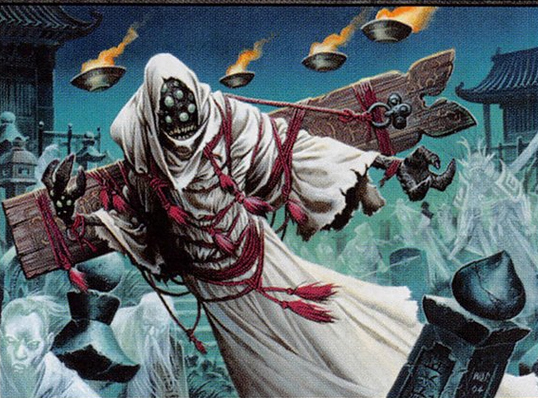

Sekki, Seasons' Guide
The kami of the turning of the seasons. It manifests as enormous pieces of the land, similar to a genju, when it is time for the season to change.
Shimatsu, the Bloodcloaked
A minor oni overlord. He appeared like an ogre with blood-red skin and wore a bone mask. He practiced frost magic.
Shirei, Shizo's Caretaker
The kami who shepherds the dead. He manifests as a floating, hooded cleric in white robes bound by red, tasseled ropes. His skin is black like charcoal with eyes all over, blinded and fogged by cataracts. His title comes from his common appearance at the battlefield of Shizo, an ancient and tainted place where a great battle once took place. Souls with unfinished business still walk the area.
Soromaro, First to Dream
The spirit of a half-human, half-soratami wizard from long ago. He is respected for his knowledge and wisdom. He appears as an old four-eyed, four-armed moonfolk in blue Minamo robes.
Terashi, Sun and Justice
The kami of the sun and patron of the Towabara plains. It appears as a large lantern-like bulb of light with metal bones and many small strut-like legs. Tentacles of light reach out from its bulb and blasts of energy come from its mouth.
Towazu, the Unspeakable
The kami of forbidden and unspeakable things. It appears before great scholars and librarians to impart secret knowledge, but leaves them comatose or insane in the process. It manifests as a large, long torso with bat-like wings for arms and small centipede-like legs growing out of its body. Its head has small horns and its mouth has tusks. Appropriately titled, those few that know of it do not like to speak its name.
Urami, of Insatiable Hunger
A powerful oni of ravenous hunger. He manifests with a classic winged devil appearance. He is famous in Kamigawa for his tomb in Takenuma swamp. In order to lure people into his territory, his ogre servants constructed the tomb and told rumors of his demise. This is a lie. He is still alive and eats those that wander nearby.
Yukora, the Prisoner
A terrifying and murderous oni with an ogre-like appearance. At one point, he was defeated and imprisoned by 99 kannushi, or shrine maintainers. They bound him in chains deep below the earth and cast a spell to immobilize him. When all 99 died though, the spell broke and Yukora was set free to wreak havoc once again.
Yomiji, Who Bars the Way
The kami who guards the passage from life to death. He is considered sacred and revered by many, hoping that their loved ones make it safely to the afterlife. He can also prevent a soul's passage and send them back to life.
Credits
I repeat the Fan Content Policy.
Dungeons of Kamigawa is unofficial Fan Content permitted under the Fan Content Policy. Not approved/endorsed by Wizards. Portions of the materials used are property of Wizards of the Coast. ©Wizards of the Coast LLC
The art used in this book is not mine nor did I make it. It is almost all from MTG and their amazing artists. Credit where credit's due. Below is a list of the artists and their website/social if I could find it.
Art
- Cover Page - Toshiro Umezawa from Betrayers of Kamigawa by Christopher Moeller
- Page 3 - Tales of Master Seshiro from Kamigawa: Neon Dynasty by Olena Richards
- Page 4 - Takeno, Samurai General from Champions of Kamigawa by Matt Cavotta
- Page 5 - Eight-and-a-Half-Tails from Champions of Kamigawa by Daren Bader
- Page 6 - Kitsune Dawnblade from Saviors of Kamigawa by Carl Critchlow
- Page 7 - Akki Underminer from Champions of Kamigawa by Thomas M. Baxa
- Page 8 - Ink-Eyes, Servant of Oni from Betrayers of Kamigawa by Wayne Reynolds
- Page 9 - Skullsnatcher from Betrayers of Kamigawa by Matt Cavotta
- Page 10 - Asirama by Guilia Carli
- Page 11 - Sokenzan Renegade from Saviors of Kamigawa by Alan Pollack
- Page 12 - Kaho, Minamo Historian from Saviors of Kamigawa by Greg Staples
- Page 13 - Enclave Elite from Conspiracy by Igor Kieryluk
- Page 14 - Mountain from Adventures in the Forgotten Realms by Piotr Dura
- Page 15 - Scroll of Fate from MTG Commander 2019 by Piotr Dura
- Page 16 - Life of Toshiro Umezama from Kamigawa: Neon Dynasty by Sidharth Chaturvedi
- Page 17 & 18 - Dramatist's Puppet from Kamigawa: Neon Dynasty by Livia Prima
- Page 19 - Kami of Industry from Kamigawa: Neon Dynasty by Chris Rahn
- Page 20 - Brothers Yamazaki from Champions of Kamigawa by Ron Spears
- Page 21 - Aether Shockwave from Saviors of Kamigawa by Stephen Tappin
- Page 22 - Reki, the History of Kamigawa from Saviors of Kamigawa by Edward P Beard Jr
- Page 23 - Uyo, Silent Prophet from Champions of Kamigawa by John Bolton, and Michiko Konda, Truth Seeker from Saviors of Kamigawa by Christopher Moeller
- Page 24 - Jugan, the Rising Star from Champions of Kamigawa by Shishizaru
- Page 25 - Hand of Honor from Saviors of Kamigawa by Kev Walker
- Page 26 - Samurai Enforcers from Champions of Kamigawa by Mitch Cotie
- Page 27 - Humble Budoka from Champions of Kamigawa by Christopher Moeller
- Page 28 - Matsu-Tribe Birdstalker from Saviors of Kamigawa by Heather Hudson
- Page 29 - Adamaro, First to Desire from Saviors of Kamigawa by Paolo Parente
- Page 30 - Soratami Mirror-Mage from Champions of Kamigawa by Ron Spears
- Page 31 - The Shattered States Era from Kamigawa: Neon Dynasty by David Gaillet
- Page 32 - Kaiso, Memory of Loyalty from Betrayers of Kamigawa by Mark Zug
- Page 33 - No-dachi from Champions of Kamigawa by Christopher Rush
- Page 34 - Hankyu from Champions of Kamigawa by Ben Thompson
- Page 35 - Junkyo Bell from Champions of Kamigawa by Kensuke Okabayashi
- Page 36 - Island from Champions of Kamigawa by Martina Pilcerova
- Page 37 - Fable of the Mirror-Breaker from Kamigawa: Neon Dynasty by Joseph Meehan
- Page 38 - Counsel of the Soratami from Champions of Kamigawa by Randy Gallegos
- Page 39 - Seshiro the Anointed from Champions of Kamigawa by Daren Bader
- Page 40 - Deathcurse Ogre from Champions of Kamigawa by Mark Tedin
- Page 41 - Painwracker Oni from Champions of Kamigawa by Hideaki Takamura, Gibbering Kami from Champions of Kamigawa by Jim Pavelec
- Page 42 - The Dragon-Kami Reborn from Kamigawa: Neon Dynasty by Alix Branwyn
- Page 43 - O-Kagachi, Vengeful Kami from Commander 2017 by Daarken
- Page 44 - Myojin of Seeing Winds from Champions of Kamigawa by Kev Walker
- Page 45 - Kodama of the Center Tree from Betrayers of Kamigawa by Jim Murray
- Page 46 - Skyfire Kirin from Champions of Kamigawa by Tsutomu Kawade
- Page 47 - Scourge of Numai from Betrayers of Kamigawa by Arnie Swekel
- Page 48 - Chisei, Heart of Oceans from Betrayers of Kamigawa by Matt Cavotta
- Page 49 - Hana Kami from Champions of Kamigawa by Rebecca Guay
- Page 50 - Shirei, Shizo's Caretaker from Betrayers of Kamigawa by Wayne Reynolds
Practice
Safe
Homebrewing
I hope you had fun reading this. Now it's your turn! Go homebrew something. Go read up some lore on your new favorite fantasy world. Go watch an inspiring movie with an interesting world. Then weave it into your D&D game!
Make sure you give others the credit they deserve. This book wouldn't be near as interesting without the art. It wouldn't even exist without some of the resources available on r/UnearthedArcana and r/GMBinder. Thank you to all of the artists and D&D communities that made this book possible.
When you're ready to share with the community, don't forget to mark your document as public so people can find it in the GM Binder Search.
